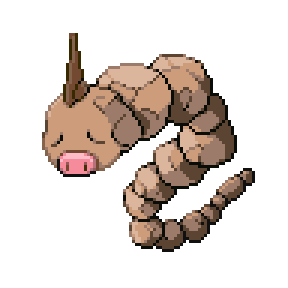Page 1 / 4 of 3251 pokedex entries by sk372.
Bulbapi can tuck itself into its bulb-like shell for protection and camouflage. If a predator gets too close, it can also spray a pollen meant to reduce aggression in others and pacify them.

Its curious nature leads it to kiss things as a way of exploring its surroundings. If Bulbachum particularly enjoyed kissing something, a puff of pollen in the shape of a heart floats from the bulb on its head.
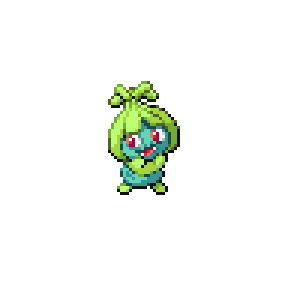
Curiosity leads Bulbachum to kiss at things as it explores its surroundings. If something tries to avoid being kissed, vines sprout from its head to grab and reel in its target.

Bulbaink's gears turn steadily, nourishing the bulb attached to the second gear. It can use its vines to turn the bulb's gear faster, overclocking it and making it erupt pollen to agitate attackers.
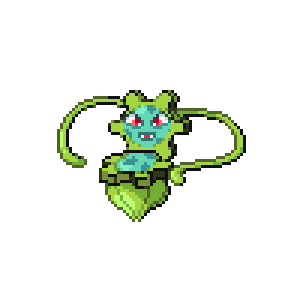
It uses discarded parts of Metapod shells as protective armor. Its club is used mainly to knock tasty leaves and berries down from trees for it to eat.
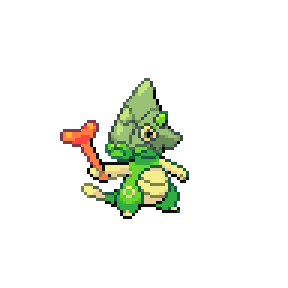
In desperate moments, it won't hesitate to use unwitting Caterpie as makeshift clubs for self-defense. It tries not to damage its impromptu weapon too much.

Catervee is most often seen in the wild during the autumn season, indulging in feasts of fallen and dried leaves. Some people have taken to using Catervee as an easier way to clear their yard of foliage.
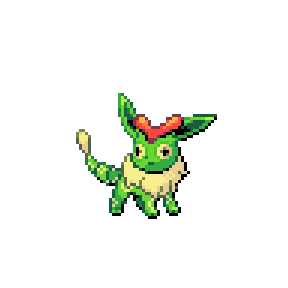
It has a strong appetite for fresh leaves straight from the branches. A hungry Caterdactyl can strip a verdant tree bare in about an hour.
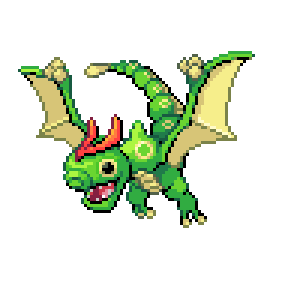
Catering are often employed by high-end restaurants for their pleasant demeanor and surprising professionalism. They are easily compensated as well, only asking for a nice plate of fresh leaves after a job well-done.
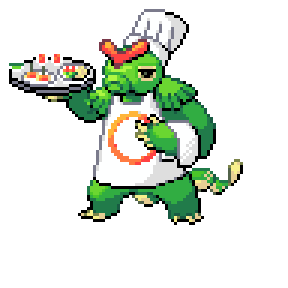
If two Cateragon spy the same leaf, they will headbutt each other to battle over who will eat the meal. Their stubborn nature means the leaf is often snatched by another Pokémon while the Cateragon duke it out.

Catereanie possesses a multitude of feelers that sense fluctuations in the air, letting it know if other creatures are around. Incredibly timid, it rarely has the courage to come out from beneath its own tendrils.
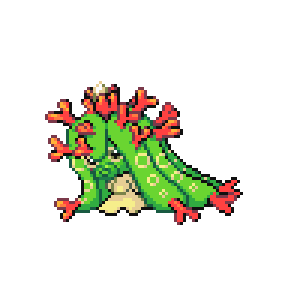
It combines Voltorb's self-destructive tendencies with Electrode's enhanced power stores. Voltode's smug grin reflects its explosive potential and the ego fed by the fear it inspires.

Voltlax generates electricity within itself by smacking its large belly. If it smacks its belly quickly enough in short succession, it can create enough energy to trigger a powerful explosion.

Care must be taken after a Voltini sheds its skin, as the discarded layer is still volatile. Improper handling will lead to it bursting into a shower of sparks.

A Voltata is considered highly dangerous: it gnaws on electrical wires to siphon electricity, but if it consumes too much at one time, it will explode and cause greater damage.

As a warning, it shakes its tail to make a low rumble of rattling noises, sparks flying from the tip. If the warning is ignored, it strikes the ground near the agitator, creating an explosion.
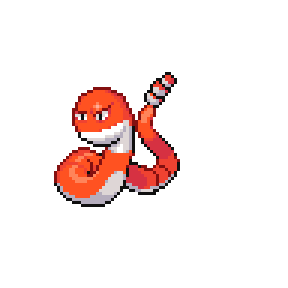
When curled up, it looks nearly identical to a normal Voltorb. It pranks groups of Voltorb by hiding among them, then uncurling to send them flying with its trunk.

Voltsey enjoys helping Trainers catch other Pokémon, somehow producing a variety of Poké Balls on its own to share. To the chagrin of many, there are no records of a Voltsey that can create Master Balls.

Rival Voltshrew in the wild curl into balls and roll at each other to establish dominance. If these displays last long enough, their combined electricity may produce sparks and even lightning.

Voltvoir contains vast amounts of electricity, seen crackling within certain parts of its body. Should something threaten its Trainer, it will not hesitate to discharge explosive bursts of lightning to defend them.
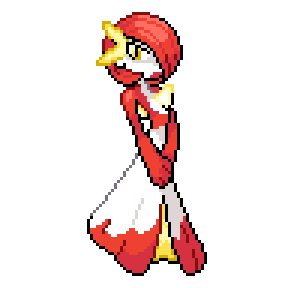
Locals are advised not to attempt assistance if a Voltlord washes up on land; it is extremely volatile and temperamental, and even the slightest prodding will make it explode and devastate the surrounding beach area.

Supposedly, Voltrachi is capable of granting people's wishes. However, it's ill-advised to make requests of it; if Voltrachi doesn't like a wish, it violently explodes and disappears to parts unknown.

Factories once tested using Voltink as generator parts due to their high stores of electricity. This experiment was quickly put to rest after incidents of Voltink exploding while inside the machines.

It flies through the air, gnashing at anything close. If it latches its fangs onto something, it creates a small explosion with enough force to propel itself backwards.
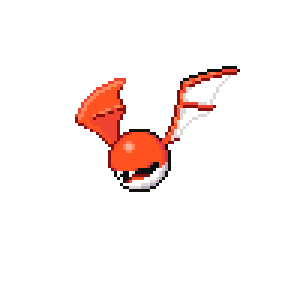
With enough effort, Voltinder can focus the energy in its body to cause a burst of electricity from its tail that can knock over much larger Pokémon. Doing so will leave it too weak to properly fly for some time afterward, however.

Workers in electric plants are always on the lookout for Voltfisk. It's considered highly dangerous due to being easy to overlook and step on, whereupon it explodes with great force.

It buries itself into the soil in order to absorb nutrients from the dirt around it. If anything touches the leaves that remain above ground, it will explode in self-defense.
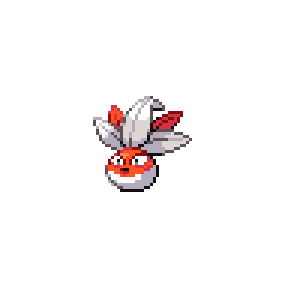
Great caution must be taken in the presence of Voltlix, as it can extend floss-thin tendrils out around it that carry massive voltage levels to shock anything that earns its ire.
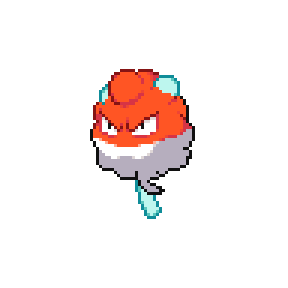
Voltlrock's energy stores are vast enough that electricity leaks out from all sides of its body. When it explodes, it creates a blinding burst of sunlight.
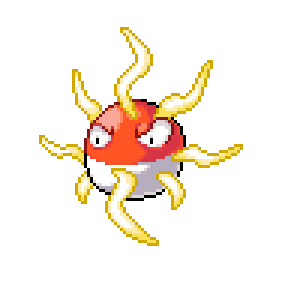
Voltwrath charges power in its fists with every strike that connects during battle. If the spiral pattern on its stomach swirls at high speeds, its next punch will have an explosive enhanced impact.

Voltbra mixes its psychic and electric powers to create explosive projectiles from thin air. These explosives always take the form of some variety of Pokéball.

Electrtung uses its massive tongue to discharge excess electricity to avoid becoming bloated and ill. Some hospitals have even used them as living defibrillators.
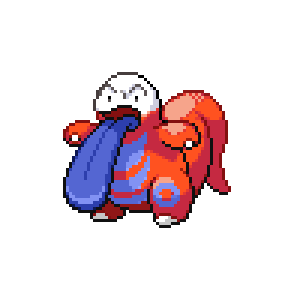
Electrdon discharges massive bursts of electricity from its horn, often during violent thunderstorms. It's thought that if it doesn't periodically release this energy, it may cataclysmically explode.
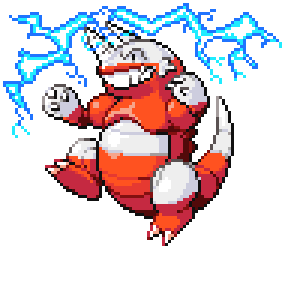
Each segment of Electrlix's body is capable of exploding with tremendous force. Triggering one sets off the rest in a devastating chain reaction.
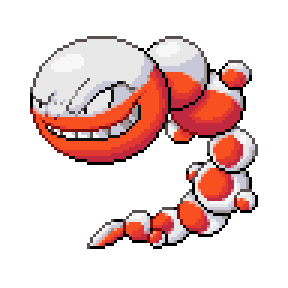
Electrachi creates compacted orbs of stardust and flings them downward like meteorites crackling with electricity. The sparkly rocks left behind after they land and fizzle out are a popular accessory in some regions.

Electrpuff's voice is shrill and often causes sharp feedback when singing into its microphone. If it feels listeners don't appreciate its voice, it's prone to exploding in an angry huff.
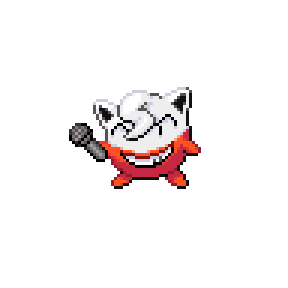
The central head of Electrdrio contains all of the electricity in its body, as well as all the aggression. This leaves the other two heads very wary of setting it off in any way.

What looks like a tongue is actually part of the amorphous insides of Exeggtung. It can grow, shrink, and reshape this appendage for a variety of purposes.

A yolk-like ooze surrounds the egg-shaped core of the body. Whenever it morphs, this core is always faintly visible somewhere in its transformed form.
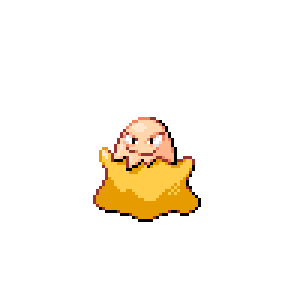
Exeggrita smacks others with its yolk-like leaf when it's in a bad mood. The sticky residue left behind is difficult to remove, and the pungent smell that lingers is even more so.
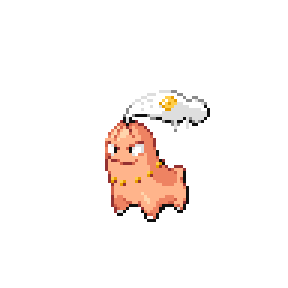
Exeggturn creates and electrifies a yolk-like fluid from its body as a form of self-defense. If the fluid is extracted and then added to a beverage, the drink will glow in the dark, with no adverse effects otherwise.

The eggs it produces serve as its own special paint for creating murals. If it runs out of its current batch, it can use the fluid inside its head, though this causes visible discomfort.

It constantly creates more yolk-like fluid within, offering it to others to sample. Those that drink it develop faint psychic powers for a few hours afterward.
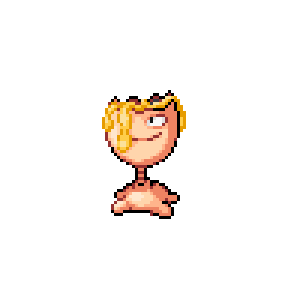
Seeds planted within Exeggwig's body will grow up healthy in short order, nurtured by the liquids inside. The plants can even bear fruit, though the fruit will contain a distinctly egg-like aftertaste.
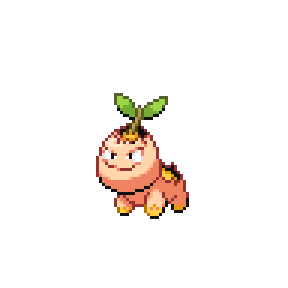
Seeds planted within Exeggwig's body will grow up healthy in short order, nurtured by the liquids inside. The plants can even bear fruit, though the fruit will contain a distinctly egg-like aftertaste.
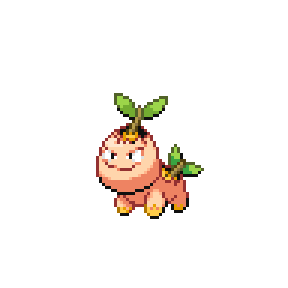
Exeggpunny gifts colorful sweet eggs to others, making it especially popular with young children and Pokémon. It often leaves these gifts in secret so as not to be overwhelmed by eager youngsters craving sweets.

The frills on Exeggaura's head emit a yolk-like liquid that creates a uniquely yellow, shimmering aura behind it when it runs. While intriguing to view, most don't care for the egg-like scent it also carries.

The six faces on its body allow it to be aware of its surroundings at all times. The yolk-like substance it secretes from its head is said to grant a person a glimpse into the spirit realm when consumed.
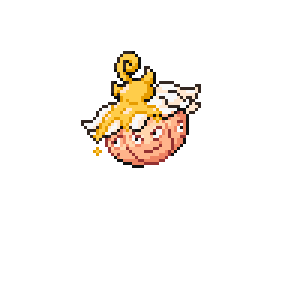
Exeggugar never lets go of the heads it carries with it. Because this keeps its claws always occupied, the heads compensate by using psychic powers to stun prey and make it easier to hunt.
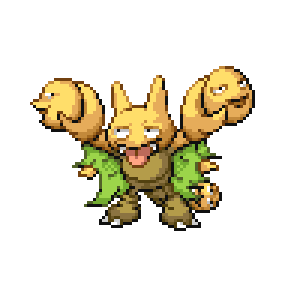
Whenever Exeggusian utters its cry, the bulb on the tip of its tail will mimic it. No matter how often this happens, Exeggusian will always seem surprised and confused by the echo.

Cuorb's hide is vulnerable, so it uses skulls it finds as makeshift armor for protection. Using some of its electric energy, it lifts and flings other discarded bones as projectiles for added defenses.

The skull it carries is a tragic keepsake it cannot even wear properly. Its large size and appetite is theorized to be the result of using food as a coping mechanism for its sadness.

Rarely seen in the wild, Cudos carries the bones of long-departed members of its species within its wings. Some theorize it has a practical benefit for increasing its electrical prowess, while others think the reason is more spiritual.

Some theorize Cutwo is one of the last discarded failed attempts at creating Mewtwo, that managed to cling to life after being rejected. It has a cold, emotionless personality, except in battle, where it releases its boundless rage.
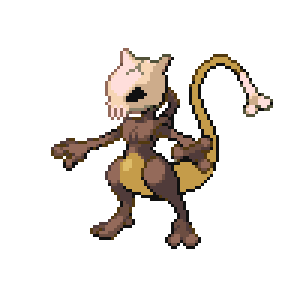
Cudile keeps the bones left behind from meals to use as tools in battle. Between meals and fights it gnaws on the bone club to keep its teeth maintained, as well as staving off boredom.

When at rest, Curak tucks its legs into the skull shell and clings to trees. The eerie image of several Curak skulls covering tree trunks has become a popular sight in horror media.

A greedy little Pokémon that steals anything it gets, Cutata will even steal away the bones of others of its kind, for no other reason than it can.

Old rumors circulate that Cutler is the remains of poached Stantler reanimated for the sake of vengeance. Its tendency to appear in places where Stantler poaching was high helps perpetuate these rumors.

Wild Blissey will often adopt orphan Cubone, carrying them in its pouch, feeding them its eggs and raising them tenderly. The joy and love these newly-formed families feel is palpable.

Cuoh is a very solitary, aggressive Pokémon that lives deep in underground caverns. The bones of previous trespassers are strewn about its territory as a warning for travelers to delve no further.

Cuvoir possesses a psychic connection with the souls of deceased Marowak. It communes with them in the afterlife, attempting to grant their spirits some measure of peace, so they may rest.
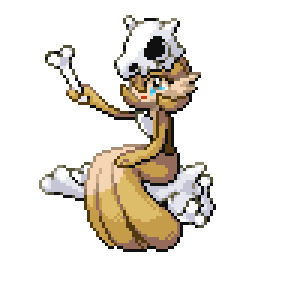
Tales exist that say Cutomb is an entire generations' worth of Cubone and Marowak spirits tied to the same skeleton. Despite the frightening appearance, Cutomb is surprisingly gentle and kind to those unafraid of it.

It appears to be a reanimated Milotic skeleton buried beneath sand and old seaweed. It hunts by pretending to be simple scenery, before leaping out and attacking prey with the sharp ends of its bones.

Curunt's extra skull layer around its cranium gives it ample protection from blows. It has a belligerent personality, but chewing on bones keeps its more aggressive impulses at bay.

Cukin practices casting fire magic, using the bone it carries as its staff. It ignites the tip with its flame breath before flinging the fireball at its target.
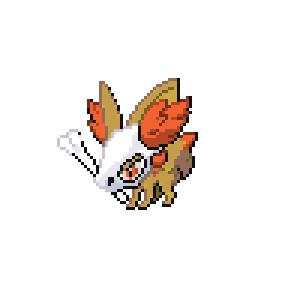
It wears the skull of another unfortunate Diglett on its head for protection. Culett was first discovered after sightings of "Diglett ghosts" became increasingly more common.

Cura defends itself from multiple angles with the telekinetically controlled bones of deceased Marowak. In serious situations, it reforms the entire skeleton to battle an opponent alongside it.

It feels angry and forlorn, though it cannot remember the reason why. It finds some tranquility when in the presence of Slowpoke and Cubone families.
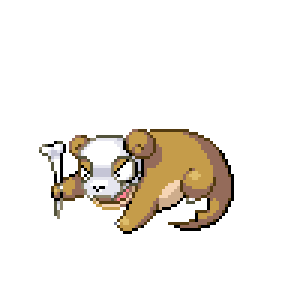
Despite its size, Cunix is gentle and non-confrontational. It prefers gently nudging or batting away problems with the bone on its tail rather than using its massive stone-and-bone-covered body.
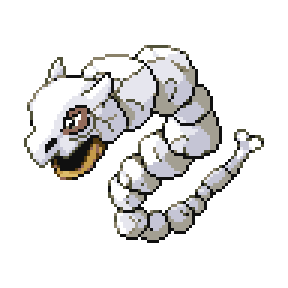
Cuby collects bones from the beaches to make a den for itself. Though a home made entirely of bones seems intimidating, Cuby is quite friendly and docile.
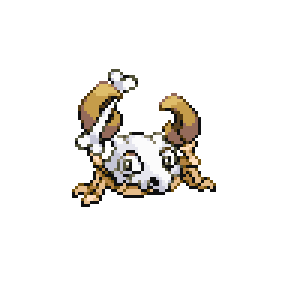
When it shakes or clacks its claws together, they make an eerie hollow rattling sound that is effective at frightening off predators. The claws themselves are somewhat brittle and ill-equipped for prolonged combat.
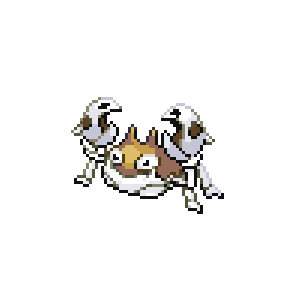
Marode bashes the ground with the club held in its mouth to warn away potential attackers. If the warning isn't heeded, it spits the club like a projectile before rolling forward quickly to get close and trigger a devastating explosion.

Familial love allows the spirit of a Marowak to stay tethered to the mortal realm. Though it is no longer alive, the ghost will stay by its side and protect it always.
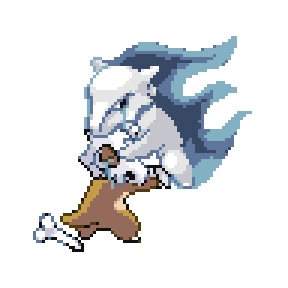
Marodon's body is so durable that there has never been a specimen seen with a crack on its bony armor. It lives among Rhyhorn colonies, keeping watch over the young in particular.

Marosey is said to communicate with the souls of fallen Marowak. It takes it upon itself to care for any and all Cubone it comes across, to soothe the matron spirit it communes with.

Marotu was often seen as an assistant to priests of ancient tribal civilizations. It was believed that using and wearing the bones of fallen Pokémon allowed it to draw from their spirits and gaze into the afterlife.
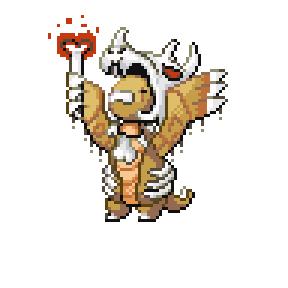
The bones of its rivals are worn by Maroring as a monument to its strength and triumph over others. It's thought that ancient tribes used Maroring's markings as inspiration in their magical practices.

Marotic is a fierce hunter that moves smoothly through desert sands as if it were water. It seizes its prey with seaweed-like tendrils before constricting them and dragging them beneath the sand.
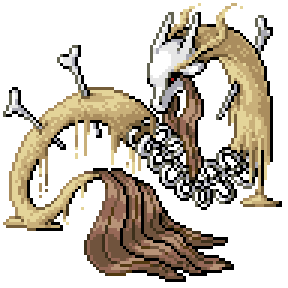
Marotuff's bone club emits a faint aura that lets it gently put people into a restful slumber. It stays near the sleeper, using the club just as effectively for defense should an attacker draw close to them.

Marosect scuttles around caverns, pretending to be a hollow skull to avoid predators. It is said that if one listens closely, the faint and eerie cry of a Marowak can be heard echoing within the skull-like growth.

The star present on Marobra's skull changes color as it grows smarter and more psychically proficient. Gold is considered the highest rank, though rumors persist of a level beyond even that.

Marokazam uses powerful telekinesis to control sand and wind alike and create sandstorms at will. Whirling bones propelled by dusty tornadoes will assault any that disturb its solitude.

Marochoke possesses a physique and strength near unparalleled, and maintains a quiet, somber persona. Some say it trains constantly because it fears the possibility of lacking the strength to protect its loved ones.

The skulls on each head are so solidly built that it's often said nothing can survive being hit by all three in tandem. Marodrio dashes across arid dry lands at night, leaping through the air with a piercing cry.

Though its horn is as powerful a weapon as its legs, Hitmoncross only uses it in battle as a last resort. It much prefers victories that come only from its kicking prowess.

Its legs are powerful, but its heavy rotund body makes its mobility poor. Hitmonperior fires pressurized air from the holes in its palms at the ground to help it leap through the air and close the distance to its opponents.

Its still-budding aura sense is strongest in its well-trained legs. As such, it has to kick or otherwise touch a person with its feet in order to sense their aura.
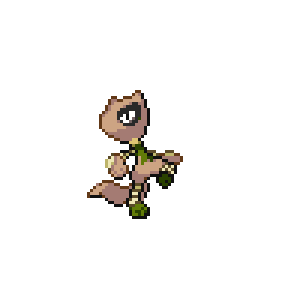
Hitmonbat perches on cave ceilings until it needs to hunt, rocketing downward with its foot to knock prey out in one strike. The "Hitmonbat Kick" is a popular image in recent media.
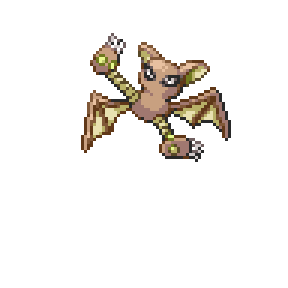
Hitmonizard possesses great discipline as well as a great ego. It looks down upon most others, and won't even deign to kick at an opponent until they prove worthy of the effort.

Hitmoncool was thought to be an undiscovered variant of Toedscool until further research was performed. Its leg-like tentacles are deceptively strong, and deliver a potent dose of poison with every kick.

Hitmonler can tuck its multiple feet into its body in order to roll down steep slopes. This also makes it adept at hiding limbs in combat until the right moment to launch surprise kicks at opponents.

The screws at the bottom of Hitmonmite's body are much longer than they seem, able to extend far outward at high speed as an attack. Though small, these "kicks" carry enough power to send a Golem flying.
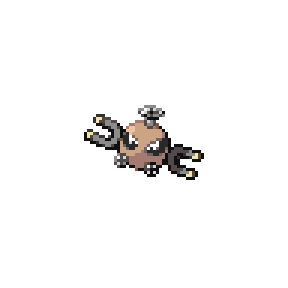
Its feet can operate freely from the main body, allowing it to launch kicking attacks from long distances at any angle. They must return to it to recharge periodically, however, or risk falling out of the sky and becoming useless until retrieved.
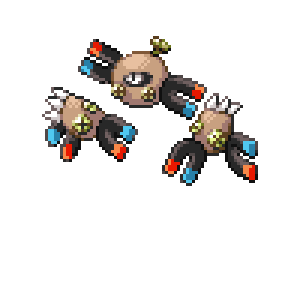
Above and especially beneath the waters, Hitmoneel delivers a strong kick with the swing of its tail. After winning a match, it claps its arms and feet together in celebration of victory.

Hitmontoise fires disembodied feet from its cannons to assault foes with powerful kicks from a distance. A few minutes after being fired, the feet dissolve into water.

Hitmonlee uses its retractable and stretchy legs to maintain balance while ducking and weaving from an opponent's blows. They also allow it to take positions that let it punch from unorthodox angles.

Hitmontwo is a furious fighter, venting out its pent-up aggression through its fists. If a punch sends its foe flying off, it uses telekinesis to pull them back to it just so it can continue pummeling them.
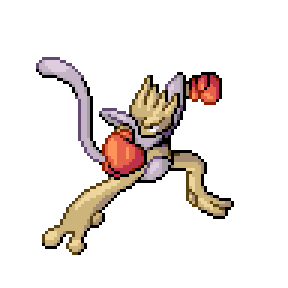
Hitmondour has firm protective plating formed around the head, so that its skull is guarded against opponents and other Hitmondour it trains with. Humanity may have taken inspiration from it when creating boxing safety gear.

Hitmonzone's limbs deliver powerful blows and have a long reach. It uses strong magnetism to quickly maneuver around opponents and strike from the best angles.
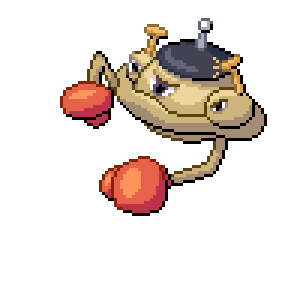
It's thought that fusion has somehow caused Hitmongon-Z to be stuck between the real world and cyberspace. Its limbs undulate and swap around at random, and few can look at its glitchy form for long without developing headaches.

Though it has good fighting spirit and decent offense, Hitmondoof has something of a glass jaw; even a single hit impacting its tooth will send it scurrying away, the will to fight completely gone.

Hitmonpass's gloves contain powerful magnets, propelling them forward once they've locked onto a foe. Hitmonpass floats back and forth as it waits for its opponent to strike, magnetically repelling itself to dodge before delivering a devastating counter.

Hitmonblade floats around deftly in battle, dodging strikes and countering with strong punches. If desperate to win a fight, its fists can become blades, giving it more power and reach.

A pugilistic pup with a penchant for punches, Hitmonolu powers up its aura through fisticuffs. In particularly intense training bouts or battles, its fists may even begin emitting aura with each swing.

Hitmonbas is extremely self-conscious about its appearance. If it even thinks a person is looking down on it for its looks, it responds with extreme aggression and numerous fists to the face.

It trains itself by flying above and striking others with its fist-feet. Because of its small stature, the strikes are viewed more as a considerable nuisance than actually painful.
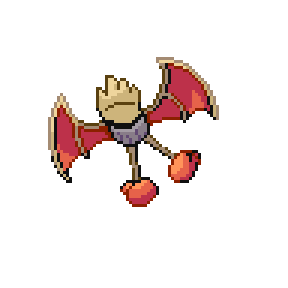
Hitmonbat never uses its fangs while hunting, only its fists. It fights prey one-on-one, and only deigns to sink its teeth and draw blood if it has knocked an opponent out in a straightforward bout.
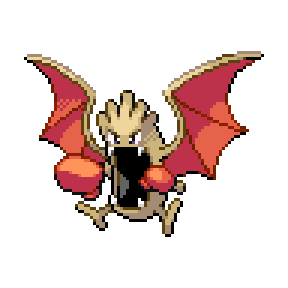
Its frozen fists chill the air around it, forming ice whenever it throws a punch. It is said that even the hottest of Fire-Type Pokémon will be frozen solid from getting hit by even a single jab.
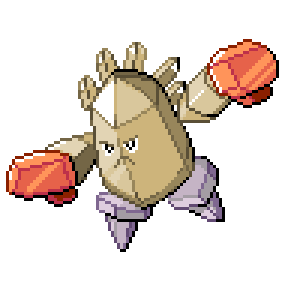
Hitmonea's boxing style is unrefined, consisting of wild swinging of its arms until it hits something. It hydrates itself often before and after battle, to the point of excess, leaving it bloated and slower-moving for a time.

Hitmonler often taunts an opponent by beating its chest, daring a foe to take the first hit. Those that fall for the gambit find themselves hit by a punishing counter from Hitmonler's four fists.
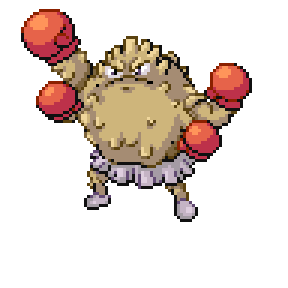
Though its punches are already potent, Hitmonmite excels in fighting Steel-type opponents. It shifts the polarity of its fists so they magnetize toward the target, increasing the speed and force it can punch metallic foes with.

Hitmonton can fire two of its fist-like components outward as long-distance punching attacks. Attached magnets ensure they quickly return, ready to be launched again.

Hitmonster are constantly seen closed and at rest, their tough shell and sharp spikes deterring most predators. Those who attempt to forcefully pry open the shell will see it open suddenly to launch a devastating punch from within.
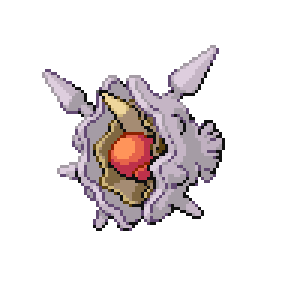
Thanks to a hive mind, any flavor one egg's tongue comes across, the others will taste as well. Should one of the clutch find something particularly delicious, the entire group will swarm and lick it intensely from all sides.

Between the stone whip it carries and its thick tongue, Lickiwak is never lacking a tool to bludgeon opponents. It's quite protective of smaller, younger Pokémon it resides near.

If something piques its interest, it will charge towards it, intent on licking it thoroughly. It will bowl over anything unfortunate enough to get between it and its target.

Before offering any of its nutritious eggs to others, Lickisey will thoroughly lick them to ensure they are clean. While meant as a gesture of goodwill, this often makes the exchange feel awkward for the other party.

Like its vines, Lickigela's tongue will be replaced by a new one within 24 hours if severed. A severed tongue flops and wriggles for several seconds afterward, a sight many consider unnerving.

With its huge tongue, Lickikhan can gather up large amounts of food in a single motion, gathering it for its child. These large portions are necessary, as Lickikhan young have a prodigious appetite.

The tongue-like organs on its arms let it poke and prod at things to determine if they are tasty or not. It favors areas where lots of tart-flavored berries grow.

Lickito's transformative accuracy increases if it has licked the object it intends to mimic shortly before changing. Research suggests the lingering taste of what it licked helps it remember finer details.
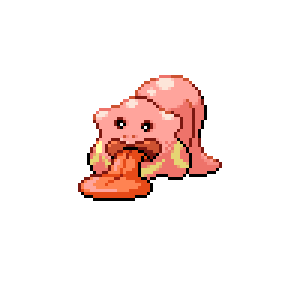
When Lickiflora soaks in a sufficient amount of sunlight, the ring of tongue-like petals around its face drips a type of condensation. Some are disturbed by the idea that morning dew might actually be Lickiflora's "saliva".

Lickichu can use lightning coursing from its ears to electrify its tongue in battle to powerful effect. Out of battle, it sometimes "swallows" the electricity on its tongue, apparently enjoying the tingling sensation it brings.
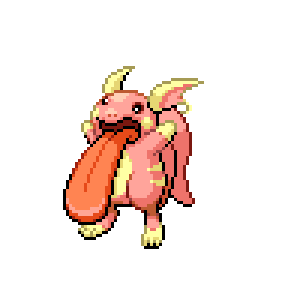
Fusion has caused Lickilicky's body to be unable to retract its long tongue, leaving it forever extended. It must regularly find sources of moisture to lick to prevent its tongue drying out.

Extremely lazy, a lounging Lickiking will gesture at passersby to feed it. Those that do not comply will be seized by its lengthy tongue, then pummeled by its powerful fists for their refusal.

Some have theorized that the entirety of Lickilie's body within the outer casing is comprised of tongues, but this is unconfirmed. Anyone licked by one of its tongues will experience severe chills afterward.

Always eager for a good fight, Lickilucha does not consider a fight truly won until it has pinned its opponent beneath its powerful tongue for a three-count. Unsurprisingly, not many are eager to let it earn this type of victory.
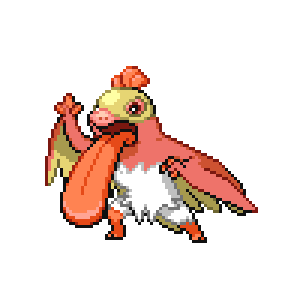
Explorers are cautioned against picking Lickiras's mushrooms, even in cases of dire hunger. In the majority of people, consumption causes a highly uncomfortable swelling of the tongue.

Lickiple's tongue can extend to almost three times its body length. Using this, it can reach out and consume leaves from a safe distance and rarely scurry far out of its home inside tree trunks.
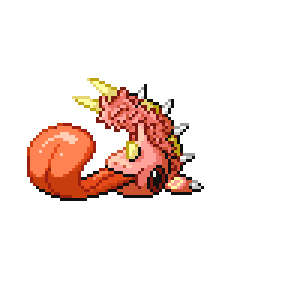
Lickiler wraps its tongue vertically around itself before rolling down mountainsides. Anything that gets stuck to its tongue as it rolls gets slurped up after the downward roll is complete.
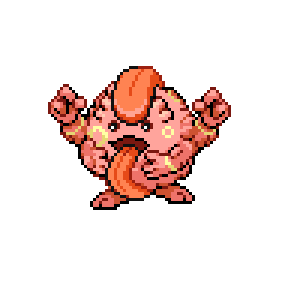
Its taste buds are very sensitive, so any time food touches Lickipoke's tongue, its simple mind is overwhelmed by the flavors. It's so enamored by the feeling of it against its tongue that it often forgets to actually eat the food.

The sticky tongue shared by both heads moves between them like a conveyor belt: food flows into one head and disappears, then the other. When bored, the heads may play an odd sort of tug-of-war with the tongue.
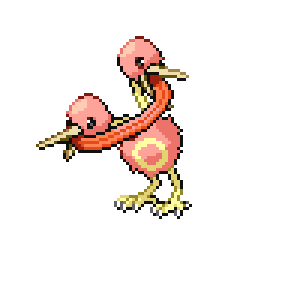
It loves to lick up anything it can find off the ground to eat and let its goo-like body grow larger. It can even be seen slurping up parts of its own body that have dripped off and puddled on the ground.
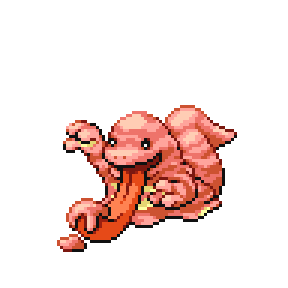
As Lickiuk roams near urban areas, it uses its tongue to grab and swallow any object it comes across. These items are not digested but are left behind in Lickiuk's trail, coated in stinky slime.

Though possessing less power than a normal Weezing, this Pokémon carries itself with a more chipper demeanor as well. It's theorized this is because the fusion resulted in less gas within it, causing less internal pressure.

The stench of Koffdon's toxic clouds is particularly abhorred by Rock-type Pokémon. It can fling drill-shaped smog projectiles at foes that seep into their body and leave them badly poisoned.
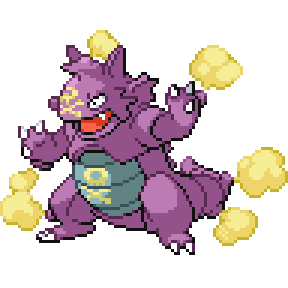
Koffbuzz generates toxic storm-clouds from the pores on its body. Due to the lightning and poison, the clouds are untouchable by others, though Koffbuzz can manipulate them effortlessly.

Koffew's behaves in a carefree and dim manner, floating after anything that catches its curiosity. The clouds it emits all have a different scent, and research has determined each matches the natural odor of various other Pokémon species.

As a sign of affection, Koffgey will use its wings to blow the clouds it creates in order to share its scent with others. It doesn't seem to realize most others don't appreciate its uniquely pungent aroma.

Those that inhale Koffrai's fumes will find themselves quickly falling into a deep slumber. The sleep is fraught with nightmares framed around being unable to breathe; victims always wake up gasping for air.
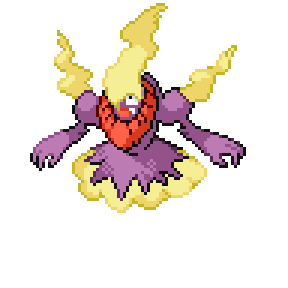
Koffpix expels fumes from behind at a constant rate, its three tails of smog never dissipating in full. If threatened, it can ignite the fumes and use them to sling fireballs at attackers.
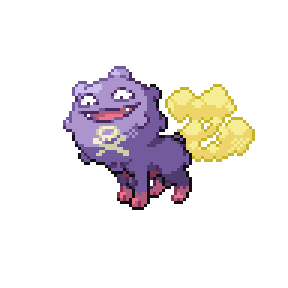
Koffecho floats along with the breeze, always trailing a tail made of its gases. Those that inhale the gases as it passes by hear a faint ringing in their ears for a few hours afterward.
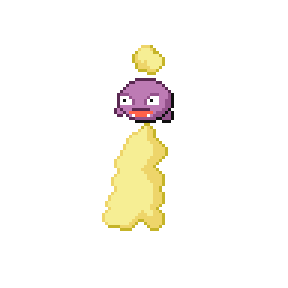
Koffnix's toxins work their way up from the tip of the tail before being exhaled through the segments closer to its head. Its poison works particularly well on Rock-types, so many underground denizens give it a wide berth.
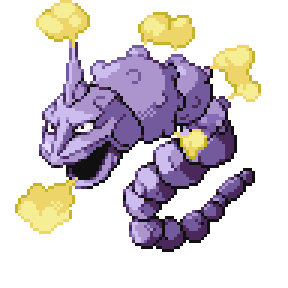
Metakyu gathers discarded pieces of Metapod cocoons in order to form its disguise. Despite the patchwork assembly, the result is rather sturdy, protecting it from predators until it can counterattack.

Metarachi's cocoon is highly sought after; when it evolves, it vanishes in a flash of light, leaving behind scattered remains of its shell. Supposedly, these shards contain wish-granting powers if enough are collected.

It struts slowly in the afternoon heat, precisely positioning its wings before flapping in place. The warmth it gathers from the sunlight expedites its evolution process.

It gathers ambient static from the air with the bristles at the end of its wings. When threatened, Metacorio electrifies its shell as a deterrent. Its evolution process is halted while the shell is electrified.

It rests in windy areas to await its evolution, where the breeze stimulates its psychic energy. If the winds grow too forceful, it uses telekinesis to hold steady, hampering its evolution speed.

The extra head has not grown properly, leaving it unstable. Though no longer prone to exploding, a single touch can cause it to release large amounts of foul gas from its pores.

As a conjoined being, both parts of Weeto are able to transform. They cannot separate, however, so their transformations result in having a miniature version of its new form attached to the main body.
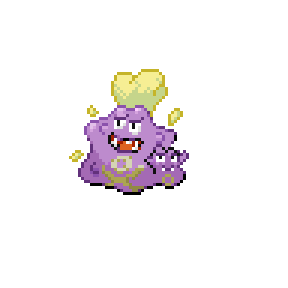
Weeluff floats about cheering on battles by shaking its smoky pom-poms and scattering them around small cloud puffs. Due to the stench of the clouds, its cheer routines aren't as effective as it would like.
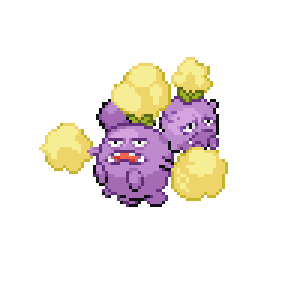
Weedreavus floats around deliberately spewing out toxic mists that make those inhaling it suffer feelings of fear and disorientation. Some believe the smaller head behaves like a conscience, trying vainly to make it stop acting maliciously.

The head functioning as a Weecargo's shell regularly puffs out pungent clouds of smoke. Some try to find meaning in the clouds' shapes, such as determining Weecargo's current wants or mood.

Referred to as "The Scion of Toxic Storms" in old nautical legends, Weegia releases noxious air from the many pores along its body. When it flies, it creates a putrid maelstrom at sea that none can sail through unscathed.
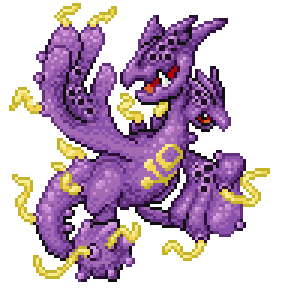
In the distant past it was believed inhaling Weetomb's fumes allowed one to commune with the spirit world. In actuality, breathing in high amounts of the gas causes hallucinations.

Though appearing toxic at first glance, the fumes from Weeler are harmless and have an earthy scent, a result of its constant diet of rock and stone. This unique scent is popular as a perfume in Pewter City.

Weeuk has been used recently in media to provide testament to the dangers of pollution. Of particular note is a film depicting a giant, polluting Weeuk being defeated by a heroic Tyranitar.

Rhytung enjoys lobbing things into the air with its strong tongue before headbutting them away. Owners must take caution, as it's too dim to understand the importance of others' property.

Rhyfree flies around looking for verdant flower fields and soft soil, before charging down so hard it buries itself into the dirt. It then eats the flowers from the roots up.

Mysterious symbols scattered among ruin walls confounded researchers for years, until it was discovered they were simply the results of Rhyown charging around, hitting the walls and leaving impact silhouettes of its shape.

When it goes on the attack, it extends an arm to grab or punch the target. Because of its simple mind, even if it misses, it won't retract its arm back until it hits something or extends to its maximum limit.

It is impulsive and staunchly protective of its Trainer. It charges at perceived threats recklessly, forgetting that it could use telekinesis to better effect.
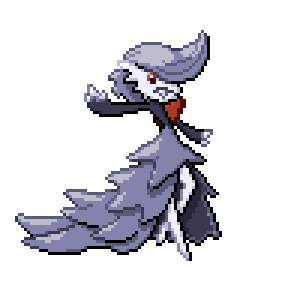
Rhyduck has a slow, plodding walk on land, but is a very deft and swift swimmer. The gem on its forehead glows when it is about to charge through the water and chase something down.

Rhychop rotates its arms to wind up a punch before charging at an opponent fist-first, not stopping until it hits something. These charge-punches can knock down entire trees with ease.

Rhynix's sturdy serpentine stone body allows it to charge and dig through rock and dirt with ease. Some say a stubborn Rhynix could dig its way through to the other side of the planet, if it tried hard enough.
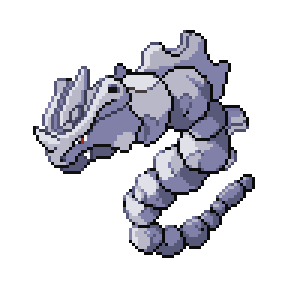
Chanwile has a protective nature, nurturing Pokémon and their eggs alike. Many Trainers and Pokémon Centers rely on them to safeguard Poké Balls in their near-impenetrable false mouth.

Chanlup is very prideful, believing itself to be the most skilled caretaker. If two Chanlup meet, they will immediately compete to see who has the better care techniques and better quality eggs.
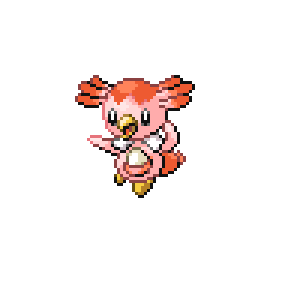
Chansharp trains other Pokémon in the art of rescue and care of wounded and stranded travelers. A strict instructor, any who aren't paying sufficient attention risk a painful punishment.
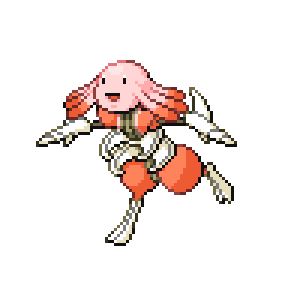
The hairs on Chanat's body carry a compound that reduces stress and fatigue with prolonged contact. Shed fur is often used by garment weavers to make comfort blankets.
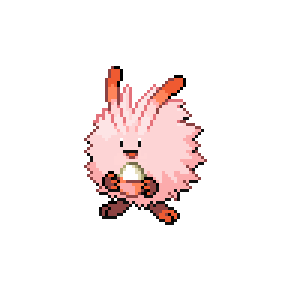
Chanduck's eggs are excellent for combating a lot of minor ailments. Ironically, they are ineffective at fighting headaches, which Chanduck constantly suffers from.

Chanbell creates and regurgitates eggs from within its body to offer other Pokémon in exchange for food. The tart taste of the eggs is popular in some rural regions of Unova.
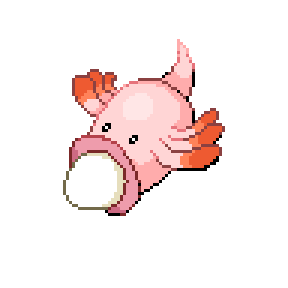
A strange mass of tendrils that infests the bones of an unfortunate Marowak. It occasionally shifts its tentacles into a shape resembling the body of Cubone, but is unable to hold that form for long.

The reddish vines from its mouth all operate as individual tongues of Tantung. This means it can grab and taste several things at once, and discover untold amounts of flavor combinations.

Rather than normal miming, Tanmime enjoys the art of shadow puppetry. It can manipulate its vines to form varying shapes with its arms, and make quite a spectacle of shadows.
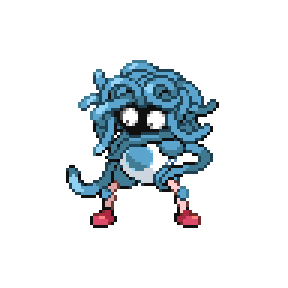
Though pointed at the ends, Tanther's vines aren't particularly sharp and thus aren't well-suited for stabbing or cutting foes. It's much more effective unraveling their coiled shape and using them to surprise and constrict them instead.

Tanvee's vines vary in texture, feeling warm, cold, rough, or soft. It's said that when more vines feel alike, it signals that evolution is near.

Tanotto scouts for swarming insects from high above, swooping down and using its tentacled wings to grab up as many as it can. It gorges eagerly, then shares the rest with other insectivores once it's had its fill.

At first glance Tanicate appears to undulate across the ground using its many wriggling tentacles, but further inspection reveals it has very tiny feet beneath the vines that it uses to move around.
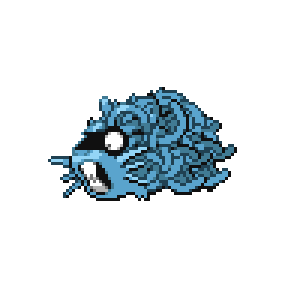
Tanrina has a caring nature towards any creature smaller than it. With the many tendrils comprising its body, it can pet, hold and comfort a multitude of creatures it wishes to nurture and protect.

Tanking's tendrils move on instinct to grab anything edible, so it rarely has to move and forage for itself. It only uses its limbs in self-defense, where it shows little mercy.
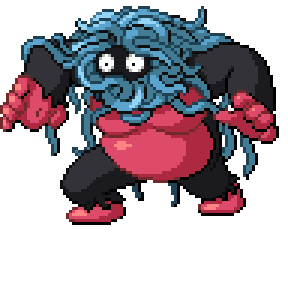
The tentacles wriggling out of several holes in Tanmuku's body are just a few of several that make up nearly the entirety of its internals. If in danger, it can fire its tentacles as projectiles in order to retreat and regenerate a new set.

During moments of hyperactivity, Tanroth will tear off its own vines and swing them around like whips. Due to its high energy, these vines grow back within minutes, so it never runs out.

Tanbat's odd shape makes flying rather erratic. Though poor at swooping, its tendrils let it latch onto nearby prey and bring it closer so it can bite into them.
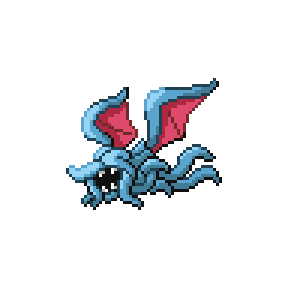
Tanpede's spines produce a venom that flows into the vines upon its head, letting it poison anything that gets too close with a potent Vine Whip. The mustache-shaped vines on its front are harmless, however, and preened often.
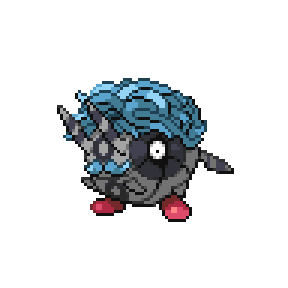
On occasion, the vines Tanrunt keeps hidden within its hood will slip out, thrashing and reaching out wildly towards those nearby. Tanrunt hastily covers them back up, seemingly embarrassed at this moment of exposure.
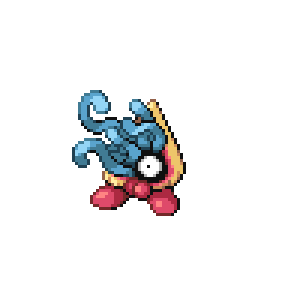
It produces steam from its hidden mouth, as it's shell is filled to the brim with its superheated tendrils. Steamed Tankoal vines are a popular snack food in some parts of Hoenn.
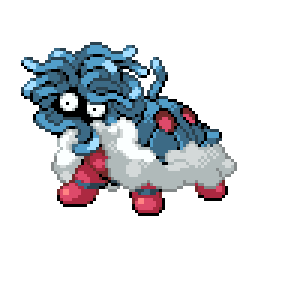
Its arms are covered with retractable vines, so Tanchop's reach is much longer than it would seem, letting it grapple opponents that wrongly assume they're a safe distance away.

Tanby is highly sought by upscale restaurants for high-class dining. The meat in its body combined with the texture and taste of its vines when cooked create a delectable, protein-rich meal worth a high price.
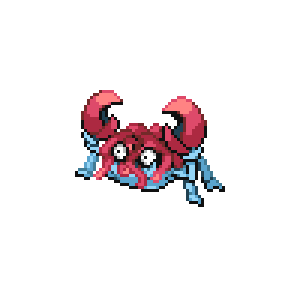
Tanler has sometimes been observed using its pincers to sever its own tentacles and eat them. They grow back over a long period, so it only does this when other food sources are scarce.
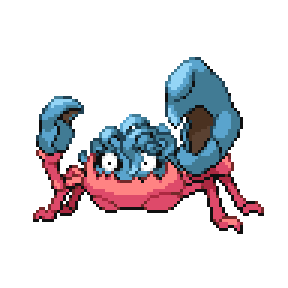
The eggs in the group age at different rates, leaving the older ones to take care of the younger until they fully hatch and develop. Once all are fully grown, Kangascute exhibits marvelous unity in battle.

A young Kangasther does not have blades at birth, so the defenseless joey clings to its parent's back at all times. Kangasther uses the soft hum of its wingbeat to lull the child to sleep at night.

Despite how dangerous it looks, the strong-yet-delicate grip of Kangasir's pincers makes it the safest place for the child to be held. Those who disturb the baby quickly learn it needs no pincers to be a fierce guardian.
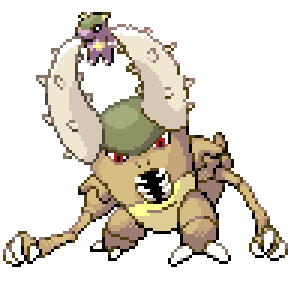
Part of Kangasto divided and became its young. The child can only transform its face at first, so the parent tutors it in the ways of shapeshifting until its mimicry can become perfect.
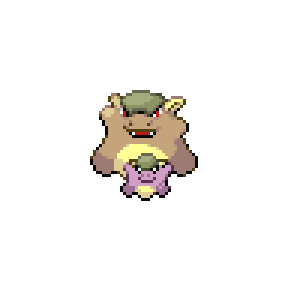
Due to their similar appearances, Kangasvee are often found in the company of Kangaskhan, adopted as an additional child by the parent. More and more Kangaskhan are being spotted carrying a Kangasvee in their pouch.
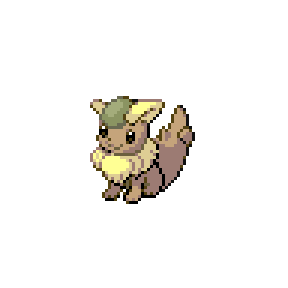
Kangasdos encourages a free spirit in its child, teaching it to roam fast, far and wide. Though the child has little electrical strength yet, occasional small bolts of lightning spark from its wings when it practices flight.
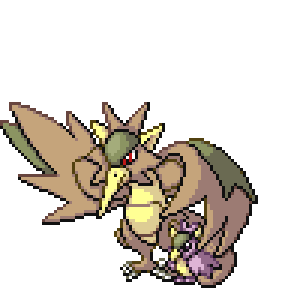
Kangasew encourages its timid child to go out, explore and make friends. It's a very kind and trusting parent, but will immobilize a creature instantly with psychic powers the moment it senses a hint of a threat.

In order to toughen up its progeny, Kangasotto allows its child to play-fight with other young in the flock. If the roughhousing gets too extreme, parents may step in and brawl over whose child was at fault.

Though Kangaswoodo prefers to remain still, its curious child often hops out of the pouch to explore, forcing it to give chase. The young cries and pouts when Kangaswoodo lifts it back into the pouch.

Kangasflora finds the sunniest spot it can to hold its child aloft and let it absorb the sunlight for nutrients. Many artisans find the sight of it oddly majestic, and many a statue and figure have been made of the scene.

A strange pair of letter-like creatures, Kangasown are never seen far apart from one another. The "child" seems to enjoy getting dirty and defacing walls with its body, much to the "parent's" chagrin.

Kangasbuffet appears to be a conjoined parent and child, with the parent taking the brunt of violence from predators. Though unconfirmed, it's believed the child eventually falls off the parent in order to fully mature.
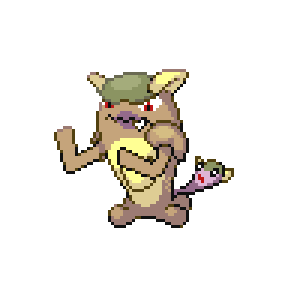
Its child is hidden beneath the ridges surrounding its torso. If necessary to protect the child, it will burst all these pieces violently at foes, before retreating somewhere safe to let the protective shell regrow.
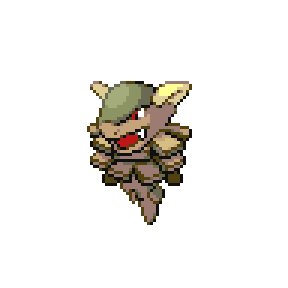
The child is naturally curious, and the parent overly protective. If the child hides within, Kangastress is relatively calm, but if the baby curiously peeks outside, its parent may fire spikes at the slightest movement.

It works in tandem with its young to search for sweet fruits and nectar in forests. Once they have found a good source of food, the child will be allowed to gorge itself first before the parent eats what is left.

On occasion, Kangasgon-Z's head glitches out and vanishes to parts unknown. The child must direct the body until the cranium manages to teleport back in place.

It has a gentle disposition and prefers to avoid conflict, a demeanor it hopes to pass onto its young. If forced to fight however, it is utterly merciless for the sake of its children.
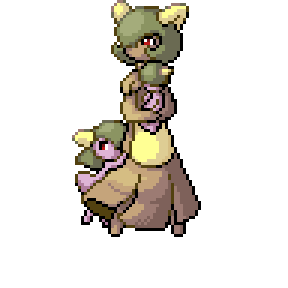
With its extendable tongue, Kangaseon catches insects and small fruits to share with the young it carries within its pouch. The joey is a curious sort and is often using its own tongue to lick and explore its surroundings.

Kangaslord's hide is incredibly tough and resilient to almost anything undersea hunters could throw at it. The child's hide is undeveloped and soft, so for safety it hides within the parent's mouth until it grows stronger.
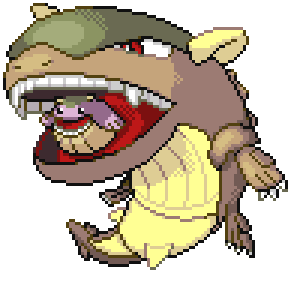
As the baby lacks any poison points, it relies solely on the parent to protect it from harm, always staying close. The parent is overly aggressive in defense and will charge and attempt to poison almost anything that draws near.

Kangasrino's exceedingly aggressive protective instincts are thought to be linked to its high testosterone levels. It will even attack massive Pokémon like Nidoking at the slightest provocation, blinded to the risks by its parental fervor.

It has spent much of its time honing the strength of its fists and legs in order to fight or leap away to protect its young from harm. It can leap into the air and send even the heaviest flying Pokémon crashing to the ground with a single punch.
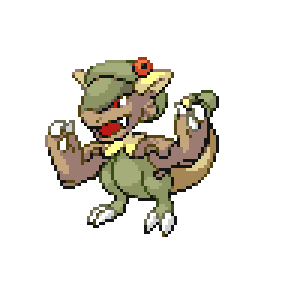
Its young cannot fly, so it remains perched on the parent's head while it hunts. Due to its speed and maneuverability, Kangasjask is always able to catch its child should it lose its grip and fall during flight.

Boundless energy mixed with parental instinct means Kangasroth is always running from one domain to another to keep its child safe. The youngster is often a bit dizzy and disoriented from all the constant running around.

The child is immune to Kangasbell's digestive fluids, so the inside of the parent's body is the safest place for it to be. Kangasbell protects its young with a flurry of whipping vines and poisonous powders.

It ferries humans across the waters happily, defending them with ink shots from its mouth. Horas Trainers sometimes play games of tag this way, seeing which Horas can hit the other with ink first.
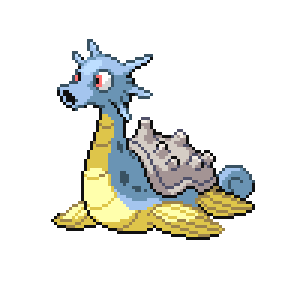
Horto shuffles around the ocean floor before dispersing a thick smokescreen of ink. The blinding ink cloud stirs up small organisms that Horto sucks up while they flail about in blind confusion.
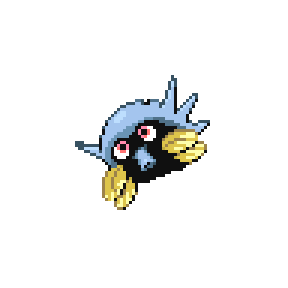
Horgeot swoops over water and sprays ink across the surface to make it murky. As the ink obscures vision and causes chaos beneath, it makes it easier for Horgeot to swoop once more and snatch up the confused prey.
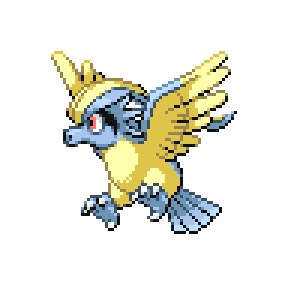
At first, Horfish was thought to be poisonous due to the liquid dripping from its spines. It's actually more ink so that Horfish can deploy vast amounts around it to make underwater smokescreens.
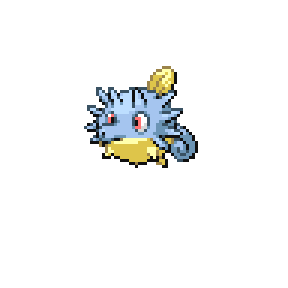
Though it appears decorative, the seaweed Hormise holds acts in accordance with its will, usually to grab and hinder other creatures so that Hormise can blind them with an inky smokescreen.
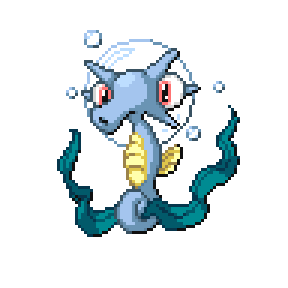
Despite a somewhat distorted appearance, Goldeen functions normally and seems perfectly peaceable in behavior. It's even become something of a mascot of a power plant located in a remote part of Unova.

Goleon takes great pride in its glossy and pristine coat. It refuses to swim in an waters that aren't clean enough, and will show no mercy to those that dirty its fur.
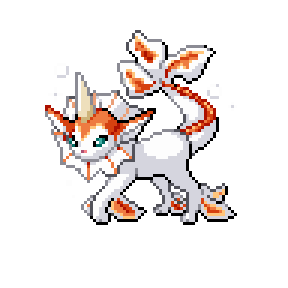
Some regions attempted to use Goldisc as a more glamorous gift counterpart to Luvdisc, but the Pokémon's aggressive temperament made it ill-suited to be a loved one's present.
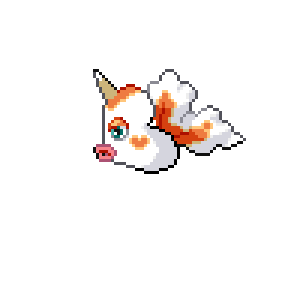
Despite its small stature, Seadra is aggressive and territorial, blinding intruders with shots of ink to the eyes before swiftly closing in to gore them with its sharp horn.

It considers itself a fierce and just king of underwater Pokémon, defending its kingdom from usurpers and aggressors. It will grapple and stab even Gyarados into submission for the sake of its subjects.

The orb at the end of its bone-staff spreads a pollen similar to that of its wings, but much more potent. Non-violent by nature, it puts aggressors to sleep with a wave of its wand before running away.

Buttermagius's wings spread a magical powder with every flap. For plant life it merely promotes healthy growth, but humans that inhale the powder become obsessively compelled to plant flower gardens for Buttermagius to later feast upon.
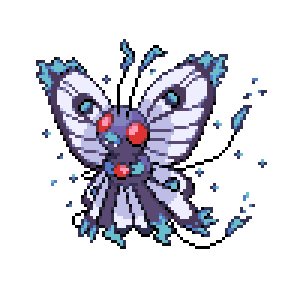
Buttermagius guards over flower gardens at night, becoming more active the more the moon wanes in the sky. Trampling across the flowers it protects is a quick way to earn a nasty hex.
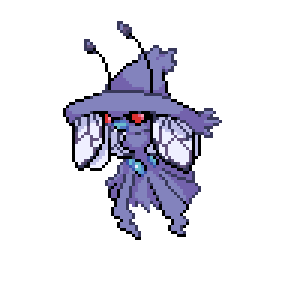
Butteresect enjoys sampling and analyzing honey from many different kinds of flowers across the land. It prefers to avoid combat, but if pushed, it can dispense vast amounts of poisonous powder from its cannon.
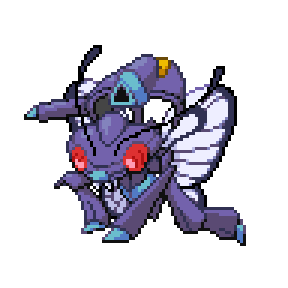
Being blind, Butterno uses its strong sense of smell to hunt for sweet treats to lap up. Wild Butterno have even followed unsuspecting Trainers to their home, lured by the scent of something sweet in their bag.

It buries itself face-down in the sand to camouflage itself as a normal starfish. Should it be attacked even then, Starsea spews copious amounts of ink to smokescreen its escape.

At first, it was thought this fusion only caused a slight change in Staryu's appearance and little else. Further research found it now shows a marked decrease in intelligence and a more lethargic personality.
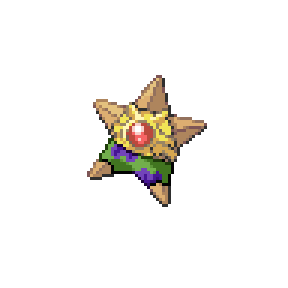
It flies high in the skies during starlit nights, a red glow shining in each of its many cores. It's suspected that supposed sightings of "UFO lights" at night were people catching glimpses of Starquaza.

Stardisc darts about beneath the ocean waves, communicating to others with flickers of light from its core. When in the presence of couples, it observes them with a pattern of shifting colors that seems to indicate curiosity.
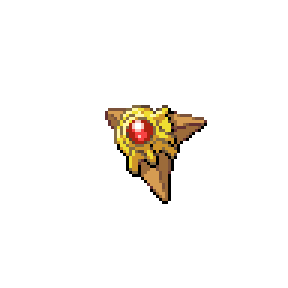
Startoise normally fights with water shot from its twin cannons, but if its torso begins to glow brightly its opponent should brace themselves, as its core is feeding energy to the cannons to fire powerful twin beams of light.

Due to Stargon's capacity to function in the deep depths of the ocean and its tendency to flash its crystal brightly while in the presence of technology, it has been invaluable in searching and recovering tech lost at sea.
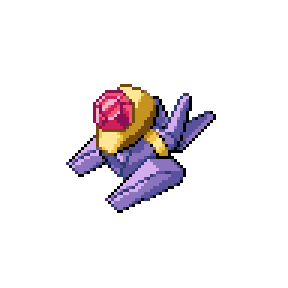
Starturn's lights on its head and face can shine in a myriad of colors independent of each other. It can create truly radiant flickering displays of light that can confuse and stun prey and opponents in battle.
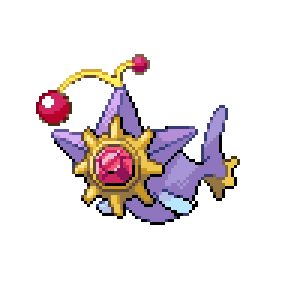
In the past, despots across various civilizations would order the poaching of Starkiss to claim its jeweled eye as a garish symbol of wealth and power. The species is rarely seen in modern day, and considered endangered.
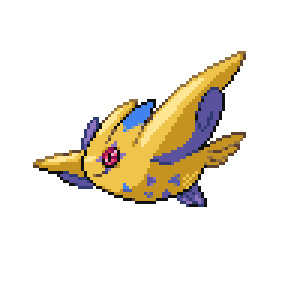
Strange flames burn constantly on its tails. Starpix communicates with others of its kind by flashing its eyes a vast assortment of colors; when communicating, its fire will change colors to match its eyes.
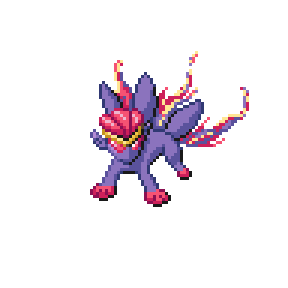
Startle keeps a cool head at all times, leaving its emotions almost inscrutable. It's capable of firing powerful beams of light from the core on its shell as well as its sunglasses.

Every one of Mr. gela's tentacles ends in a hand made for miming. Should one be severed, it likes to grab the wriggling vine and wave it at others to unnerve them. Removed vines grow back in a few days.
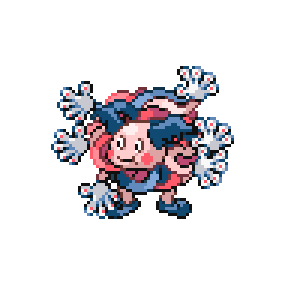
Mr. sea playfully blows bubbles at others to get their attention. Once it does, it attempts to dazzle them with displays of bubbles blown into specific shapes and objects.
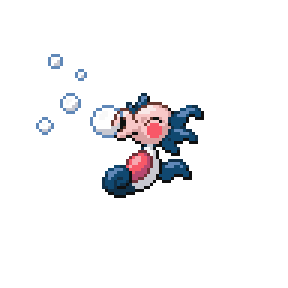
Mr. ki has developed an interesting type of mimicry: despite their appearances, every one of its various differently-shaped accessories can function perfectly as a key when Mr. ki wishes to lock or unlock something.
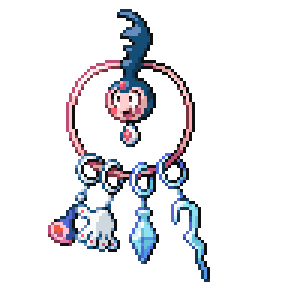
Mr. mer has a voracious appetite for berries, breaching onto land to gorge on them. This messy eating habit leaves its teeth stained with juice, often unnerving those who come across it after its meal.

Mr. bat's main way of entertaining others is to act as if its swooping in for an attack, before knocking against an invisible wall and hitting the ground. Most specimens are known to have chronic headache issues.
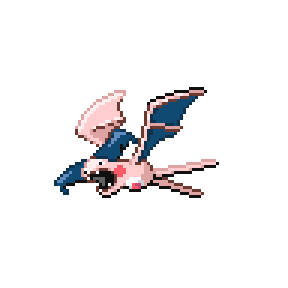
Nicknamed "The Fighting Clown" due to its appearance, Mr. lucha does its best to make a fool of its opponents with unpredictable movements and distracting gestures. The more serious the opponent, the harder it tries to make them look foolish.
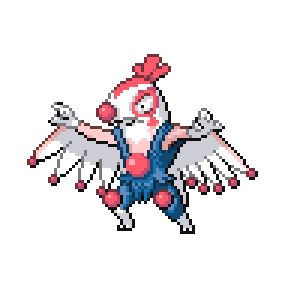
Scybone wields parts of Scizor's exoskeleton in battle, the partial pincer it uses being effective at cutting and bludgeoning. It maintains the pincer by sharpening it against rocks.

Scyhorn sharpens its scythe-like horn against stones. At maximum sharpness, its horn can cleanly cut through a thick tree trunk with a single swing of its head.

Scygela obsesses over the height of the tall grass surrounding its home, cutting it down whenever it grows too long. It even prunes its own vines with its scythes if they grow too lengthy and unruly.

Scyfree is pacifistic and prefers using its scythes to pierce into berries to eat them. Though gentle, it is rather selfish and will swat at anyone approaching it while it eats.

Scysire possesses sharp bladed limbs but has a gentle and dim-witted demeanor. It mostly uses its blades to chop down branches or entire trees that grow its favorite berries.

Though not particularly aggressive, Scytler has an irritable disposition and gets agitated easily. If provoked too much, it disorients a target with a strange buzz from its antlers before striking with its bladed arms.

It floats around motionlessly without appearing to acknowledge any of its surroundings. Yet if something threatens it, the aggressor falls to unseen cuts slashing away at their body.
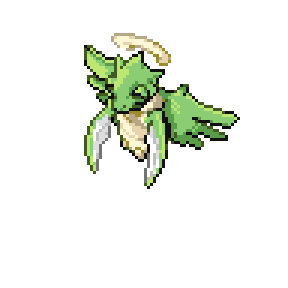
The ice crystals Jynperior fires from its hands can grow into large ice sculptures once they embed into a surface. Jynperior uses this to furnish its home into a veritable ice palace.

Jynceon is a moody prima-donna of a Pokémon. Giving orders will only result in it turning up its head and flipping its hair, which flings ice crystals in the direction of whoever dares boss it around.
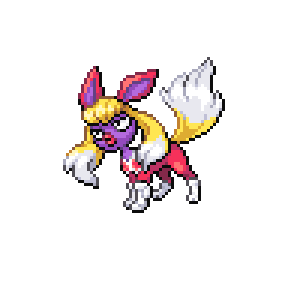
It cheerfully dances for others, loving having an audience to its bouncy movements. Anyone who watches a performance all the way to the end is rewarded with a big kiss, whether they want it or not.

Should Jynduck's headache intensify, the psychic surge around it compels all affected to begin dancing for several minutes. Jynduck always seems confused by this development.

The jewel on its forehead gleams and shines as it dances. Should one stare too deeply at it, they will be caught in the rhythm, forced to copy the movements until Jynduck has finished its dance.

It is a common ritual for Jynpoke, after successfully catching a fish, to dance in celebration of securing a meal. On occasion, it may forget to actually eat the fish after the dance concludes.

Being very prideful, Jynuk thinks of its sludgy exterior as truly beautiful, and wishes to share that beauty with others. It flings its goop at others to coat them with it and thus, make them as lovely as it is.

It is often seen scuttling about in a rhythmic fashion, clicking its claws together to make the beat for its dance. Nearby Krabby that witness it feel compelled to join in the chorus.
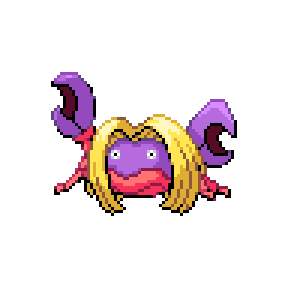
If it concentrates hard enough, Electafing can generate electricity in the form of limbs such as fists. With an aggressive temperament, it does this often in order to beat others into submission.

With fire in one hand and electricity in the other, Electamar make formidable opponents indeed. Some Trainers say you can tell what kind of personality it has by which hand favors which element.

During thunderstorms, Electaeon climbs to the tallest spot it can in order to attract lightning to strike it. If it does, it lets out a booming cry of triumph as loud as thunder.

Electaligatr can channel massive amounts of electricity into its claws. Swipes from these electrified limbs are so powerful, the swing itself creates a thunderous boom.
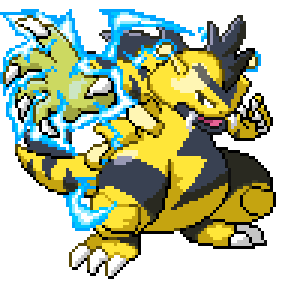
It perches high up within areas where thunderstorms are common, using its beak as a lightning rod to recharge its internal electricity. Overzealous Trainers often mistake it for being a wild Zapdos.
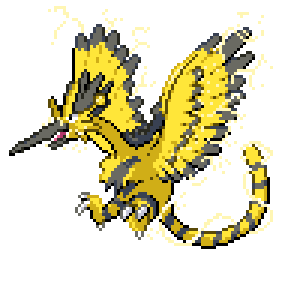
Although more likely to flee than attack, Magtler can breathe a strong stream of flame for defensive purposes. Its antlers turn bright from heat just before it unleashes its fire breath.

Magrowth uses its extending vines to constrict around its prey. Once it has them fully in its grasp, it sets the vines alight with its fire breath, holding them down and roasting them until they're ready for consumption.
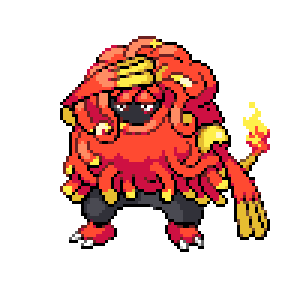
Magtrum was a terrorizing bully of the ancient world. It would breathe flames to send smaller Pokémon scurrying off in fear, then leap into magma where few could follow in order to avoid retribution.

Proud of both its physique and its flame prowess, Magchoke puts on shows for any who would watch. Between flexing poses and plumes of fire exhaled in a variety of shapes, it makes for quite the spectacle.

Magdrio's competitive nature means all three heads try to one-up the other in fire prowess. Some have even observed the heads angrily breathing flames on each other when competition gets too heated.

Pinhorn charges down anything smaller than itself in order to bludgeon and fling them with its horn. Once battered and stunned, it pounces and uses its massive weight to pin its prey down beneath it and eat.

Pinsey is an opportunistic hunter, even residing near Pokémon Centers in order to potentially hunt injured Pokémon. Due to this cruelty, the Chansey line consider it a mortal enemy.

The pincers on Pinfree's wings behave on instinct, clamping down violently on anything that passes through the gap. Though effective for capturing prey, the added weight leaves it grounded and potentially vulnerable to becoming prey itself.

Though it possesses decently strong limbs for clubbing foes, Pinther's true strength lies in clamping them together, possessing a powerful gripping force that crushes its opponent after weakening them.

A frightening creature of the deep woods, Pingrowth uses its pincers and countless tentacles to bind and crush prey for consumption. It's not uncommon to see it holding a few struggling creatures in its tentacles to save for later.
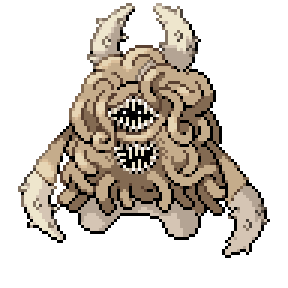
Pininja in the wild hovers around abandoned Pinsir nests, usually clinging to nearby trees. It's said if one disturbs the empty home, Pininja will open its body and suck the interloper's soul away.

Pinsian is an effective pet for homes that have a tendency towards insect problems. It waits until a bug nest is nearly full, then pounces and inhales the whole colony into its maw in a bountiful feast.
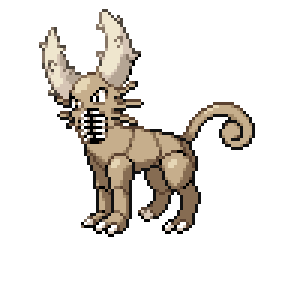
It roots around for spicy berries during colder seasons for warmth. The spice gives it a headache, however, which causes psychic power to surge and results in felled trees and branches.

Pinizard's terrifying visage spells doom for any insects in the vicinity. The small bugs get inhaled into its massive mouth before being incinerated by the flames within.

When angered, the five outer eggs rotate around the center, creating psychic energy that levitates Taucute in the air and allows it to charge forward to headbutt the target of its ire.
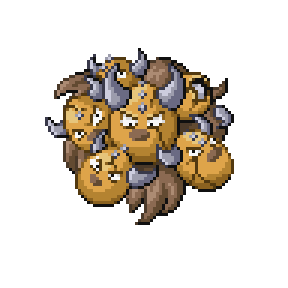
When its temper flares in combat, it becomes relentless. It won't stop chasing and striking a target until it's unconscious or Tauwak's bone club shatters and it's forced to find a replacement.

The tongue-like organs on its head let Tautung touch objects to discern if they would be tasty or not. Non-tasty objects that get licked will be batted away with a swing of Tautung's head.

The fusion of Rhyhorn and Tauros has given it a massive horn to better charge at foes with. However, it often charges into things and gets itself stuck, the new horn lodged deep within the object it crashed into.

Tausey designates its territory as no-conflict zones. Should it spy infighting from any people or Pokémon, it aggressively charges and ends the fight by knocking them out with its heavy egg and powerful Headbutt.

It furiously charges at others that come to close to flower fields it has claimed, especially other Taufree. Should two Taufree clash, they headbutt each other until one is left knocked out among the flowers.

Sunlight is crucial to Tauflora's well-being, but care must be taken to ensure it doesn't absorb too much; if it does, it overheats and goes on a rampage.
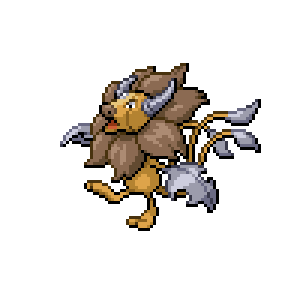
Both heads have the same size brain and the same urge to charge at intruders. It's not unheard of to see a Taufarig rapidly charging forward and backward as both heads struggle for control.

Tautress attempts to charge down and smash anything in sight with its sturdy shelled body. If a target manages to outrun it, it can launch detachable horns at high velocity to strike from long distances.

It uses its three tails and its resilient skull to help it knock down and grab berries to consume. The berry juice its body creates has a strong bitter aroma and taste.

Taupom swings among trees claiming entire forests as its territory. Highly aggressive, it descends on any intruders and beats them mercilessly with the palms on its three tails.

When sensing disaster approaching, Tausol charges quickly into nearby towns and forcibly pushes and frightens people away from the endangered zone. Though well-meaning, the brute-force method of helping gives it a poor reputation.

Taunette's already aggressive nature is exacerbated if it witnesses badly-behaved children. Its zipper-mouth opens up to let loose an otherworldly bellow just before it attacks.

Due to the fur over its eyes, Tauno has poor vision. It instead relies on its strong sense of smell to perceive intruders to charge down and nail with the sharp horns on its head.
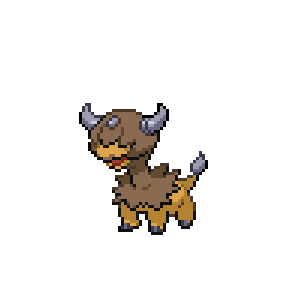
Tauroth is considered one of the wildest of animals, rampaging violently and indiscriminately. Tauroth has even been observed thrashing and lashing out in its sleep, never stopping its perpetual raging.

Its charging tackle isn't very strong on its own, but the mushrooms on its back release spores on impact that weaken the muscles of its foe, leaving them more susceptible to follow-up headbutts.

Taunat habitats have put up signs warning travelers about its presence. Tourists falsely confuse its cute, wide-eyed appearance for innocence, when it is actually quite aggressive towards strangers.
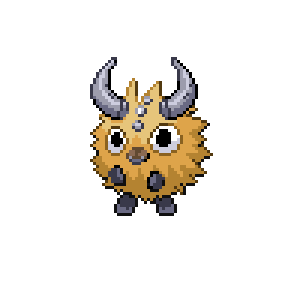
It will aggressively charge at anything encroaching its territory. Its two heads may lock on to different targets to chase down, leading to sudden and erratic direction changes mid-charge.

Magiyu contains what appears to be a Magikarp in the center, controlling its actions. It's thought that Magiyu channels strange energy into it, ensuring a more powerful evolution in its future.
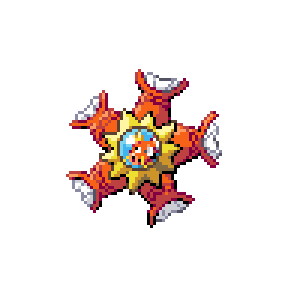
Magiros are a placid and weak species that tend to wander aimlessly across plains and farmland, grazing without thought or care. Touching its whiskers will send it into a thrashing rage.

It likes to help humans across the water, but has weak swimming skills, so it can only ferry a single person at a slow pace. Lapras herds tend to keep Magiras around out of pity.
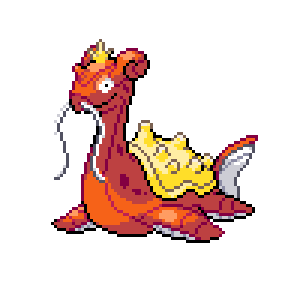
Magichou's body is rotund and squishy, requiring electric whiskers for protection. Unfortunately, its electric power is so weak that an attacking predator would feel no more than a faint static tingle, leaving Magichou effectively defenseless.
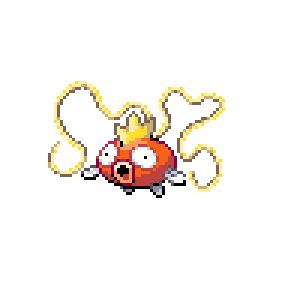
Magillery creates a large amount of ink within its body to use as projectiles, but because its mouth muscles are rather weak, the ink only comes out in a copious dark dribble instead.
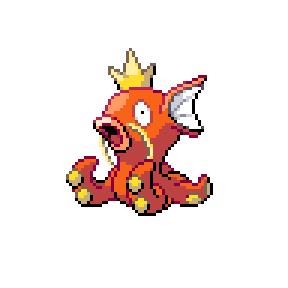
Despite its massive size, Magilord is lacking in speed, strength and defense. It floats around slowly and aimlessly, only surviving due to predators not bothering to hunt it due to the bland taste of its meat.
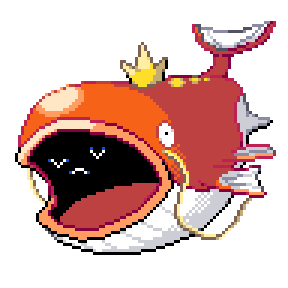
Magislash are often employed at seafood restaurants, particularly those that serve Magikarp cuisine. Their skill with the blade means that every meal is perfectly cut and portioned.
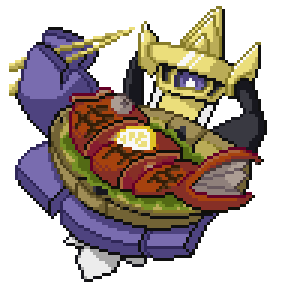
Magink's odd body composition, consisting of gears interlocking at an odd angle, leaves it weak and ill-equipped to function as gears or for swimming. It's considered rather useless as a result.
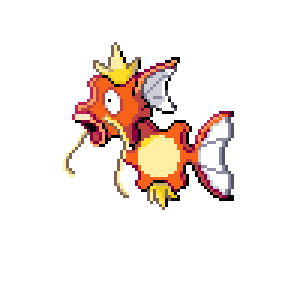
Found in the mud of drained lakebeds, Magifisk is considered one of the most pitiful Pokémon in terms of both strength and appearance. Even as food, they are considered bland and tacky at best.
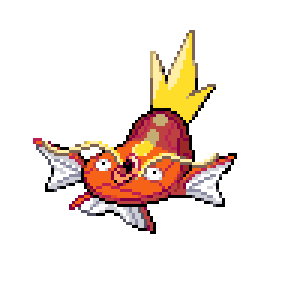
Though it has ferocious, aggressive tendencies, Magivanha's small teeth are incapable of piercing skin. Unable to properly hunt as a result, it bitterly resorts to being an undersea scavenger instead.
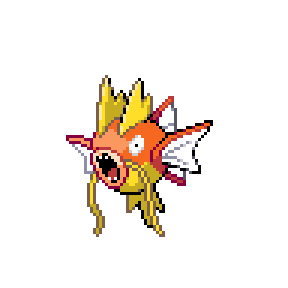
Magith is commonly found at the bottom of wishing wells. Some think it believes the coins within contain "wish energy", and that it wants to use that energy to wish to evolve sooner.
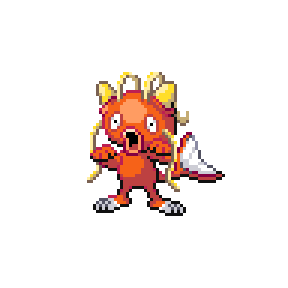
It will tug its whiskers during battle in order to enhance the normally weak psychic emanations it produces for its attacks. This leaves it with a splitting headache afterward, however.
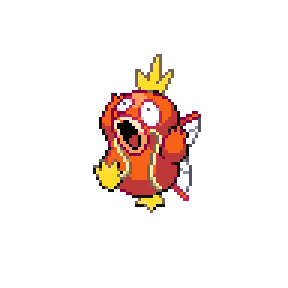
While possessing reasonable physical resilience, Magicanth is nonetheless incredibly weak and slow; it moves no faster in the ocean than it would on land.
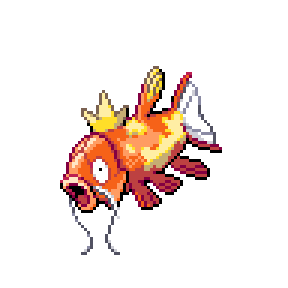
It has weak swimming capabilities, and even the poison of its stingers is incredibly mild, useless for defense. Magicool often ends up washed up on shore, staring pathetically at passersby.
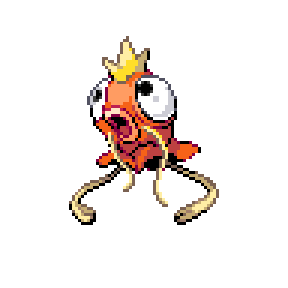
When at rest, it plays with the whiskers on its face for amusement. Based on reports of Magipoke trying to consume or pull off these whiskers, it's thought that Magipoke does not realize they are a part of its body.
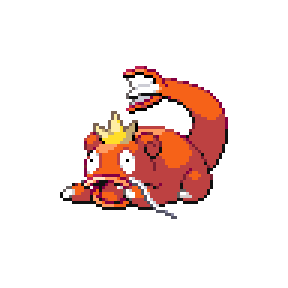
It comes onto land to rest, as swimming for too long leaves its muscles weak and exhausted. Observers find its tired and pitiful panting on land rather endearing.
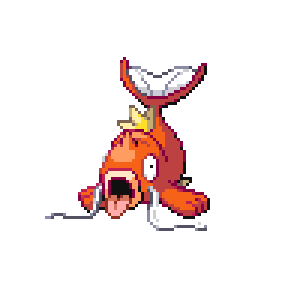
Magider latches onto Slowpoke tails like Shellder, though no evolution takes place. Instead, Magider uses its host as a way of migrating to a new body of water to reside in, as its own swimming capability is quite weak.
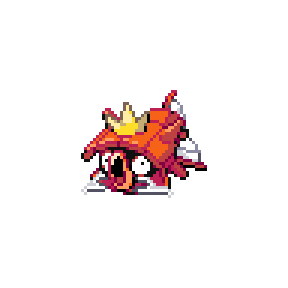
Though overall weak, its claws have a strong gripping power. It often uses them to hitch a ride on larger Pokémon while they hunt, grabbing and eating whatever scraps remain afterward.
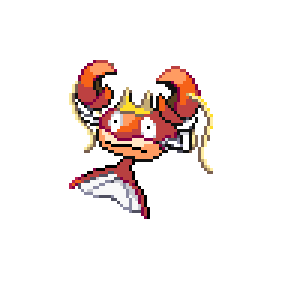
Still physically frail, it evolved extra stingers that secrete and coat the wings with a fine poison to deter predators who would hunt it. Wrapping itself in its wings akin to a cocoon is a typical defensive maneuver.

Weether's scythes secrete the same poison found in its horn, used for self-defense. Though mild, it only takes a single light cut for the poison to take effect and result in strong bouts of nausea and dizziness.

The horns on its head and tail secrete a very mild poison. The poison's effects vary depending on its surroundings: burning, dehydration, paralysis, blindness, light sensitivity, chills, rashes and numbness have all been reported.
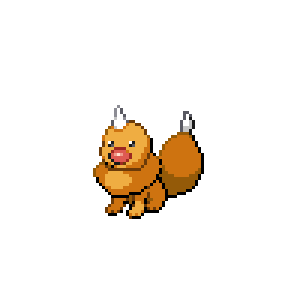
Electric power is stored and concentrated within its stingers. As a show of intimidation towards predators, it taps the two stingers together, causing sparks to fly out around it.
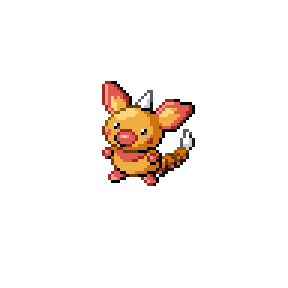
Weetata has a strong sense of smell, able to sniff out its preferred food from many yards away. Weetata fights for food and territory by battling one another using the stinger on its tail.

Weerow hovers around areas where Kakuna gather in wait for evolution. It swoops and poisons those who would prey on the Kakuna to protect the vulnerable cocoons, though primarily to prey on the would-be predators itself.
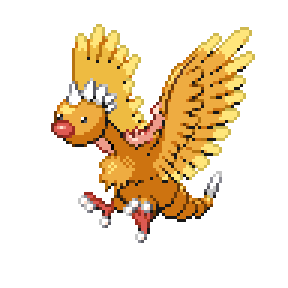
It stores static electricity in its stinger until it's ready to make a surprise strike on an unsuspecting victim. The jolt is still incredibly minor and rarely regarded as anything more than a momentary nuisance.
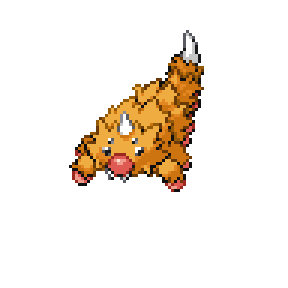
The mushrooms are no longer deadly to the host, but are now quite poisonous if consumed. This seems to have had the interesting side-effect of making Weeras no longer able to secrete poison from its horn.
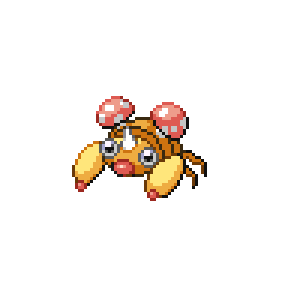
Due to its strong sense of smell, sneaking up on Weera before it teleports away is near impossible. It is docile enough to be lured close with its favorite type of leaf, however.

The marks on its leaves were thought to be signs of illness, until research found that Weesprout occasionally nibbles its own leaves. This seems to cause no harm, and its leaves grow back if fully consumed.

Gyarasea hunts small fish with a combination of stealth and ferocity. It blinds prey with ink while hiding among kelp, before swimming quickly and snatching it up with its vicious bite.
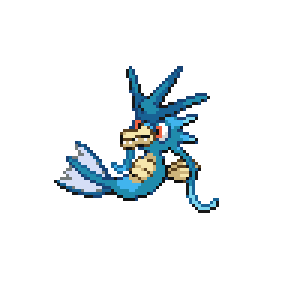
It has a ferocious and vindictive attitude towards all it comes across, but aside from a nasty bite, it is largely unremarkable and ineffective. It tends to act more passively in the presence of Magikarp.
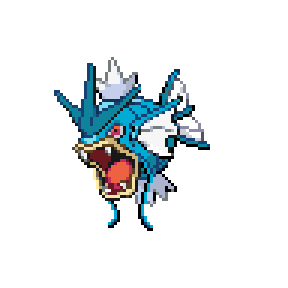
If two Gyararas meet, they will fight to the death, no matter what. It's thought that their aggressive and independent instincts are so great that Gyararas actively seek to be the last, and only, of their kind.
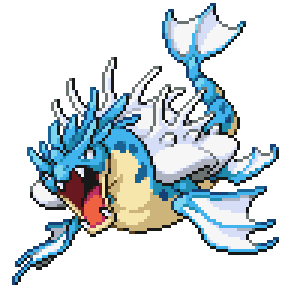
Many a tale has been passed down amongst sailors about Gyarallery. Should a ship run afoul of it, it will chase it down across entire oceans, not resting until it sends the boat sinking to the briny deep.

Many have claimed the secret to taming a Gyaratine is to climb on its back and pull its whiskers like reins. Pokémon Centers and hospitals regularly put out PSAs to discourage this idea.
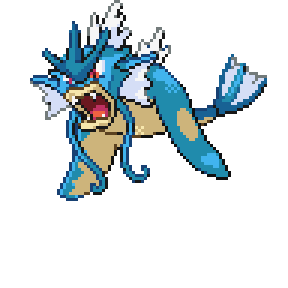
Gyarakiss is often found in accompanying wild Gyarados. It acts to curb their violent tendencies, pushing them away when they move to attack. For whatever reason, Gyarados never turn aggressive on Gyarakiss itself.
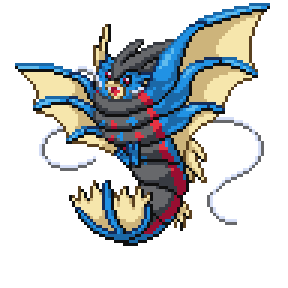
Gyaracorio dancing is a sign of territorial aggression, a warning to any who see it. One should back away slowly as it dances, lest one wants to contend with flame, scalding water and a razor-sharp beak.
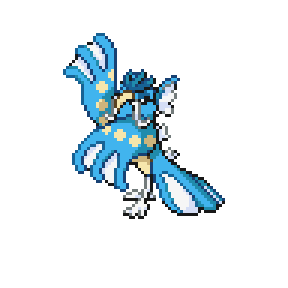
It has a most vicious, destructive nature towards anything that catches its ire, even slightly. With its speed and strength, it has torn entire ships to shreds in seconds.

Gyaradisc's small stature does nothing to curb its violent and aggressive tendencies. It's given a wide berth due to superstition that those bitten by Gyaradisc will lose the ability to feel love, replaced with rage.
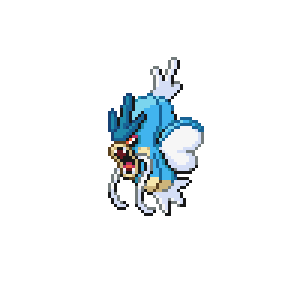
Gyaraduck is perpetually angry and violent due to the pain of its constant headaches. The stronger the headache, the more intense its rampage; a strong enough migraine can even make it release a massive Hyper Beam.

Gyaraduck is a highly adept swimmer, capable of swimming across entire oceans in a few hours. Its speed and ferocity are enough to let it hunt Sharpedo on a regular basis.

It looks fierce, but Gyarawag is fairly harmless, as its fangs are soft and unable to pierce skin. It's not uncommon to see it clinging to larger Pokémon with its mouth, stubbornly trying and failing to do any damage.
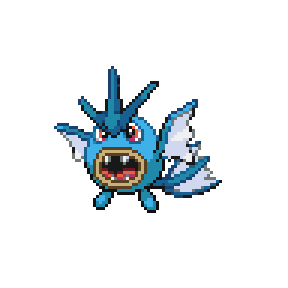
Gyaracruel is referred to as "The Devouring One" in some ancient legends. What appear to be tentacles are actually multiple tongues, which deliver paralyzing venom before dragging prey into its hungry maw.

Sometimes, Gyarapoke will throw a tantrum, thrashing its tail and gnashing its teeth wildly for little reason. It then forgets why it was angry, and begins a lengthy nap to recover the wasted energy.

Gyaragong is playful towards humans, but still remains a merciless hunter on land or sea. Many admit to being perturbed seeing it change so seamlessly from friendly to fierce and back.

Gyaraster are ravenous and ferocious creatures that are able to devour nearly anything. In ancient times, it was believed that whirlpools were caused by famished Gyaraster attempting to swallow the ocean itself.

Its fiercely aggressive and battles those in its territory no matter the size. Anything smaller than it will be hunted as prey, and anything larger will be bit and pinched until they flee.
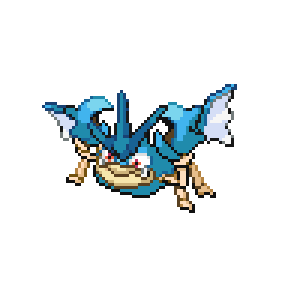
Its jaws possess a powerful crushing strength. It has an extremely violent, stubborn nature, so anything it latches onto with its jaws will not be released until it has shattered beneath its strength.
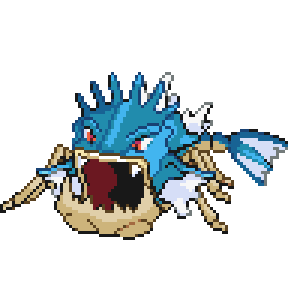
Lapbone is often seen drifting at sea inside Lapras bones fashioned into a makeshift boat. It sails the oceans in search of more Lapras, hoping to form a family for itself.
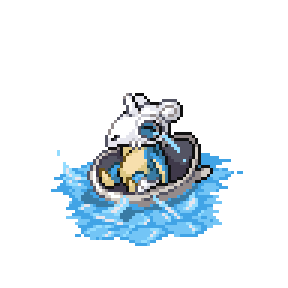
Fast and agile swimmers, Lapdos inhabit the deeper depths of the oceans, rarely being seen near the surface. They enjoy the company of deep-sea divers, following them curiously and protecting them from harm.

Though it lacks the power to make fully-formed flames erupt from the gaps in its shell, Lapquil can create great amounts of boiling-hot steam to burn others in self-defense and obscure their vision so it can hide.

As it runs across the land, Laptei casts a trail of warm, frothy bubbles behind it. On the rare occasions it's seen staying still, it casts a quiet, solemn gaze in the direction of distant volcanoes.

Lapcario train themselves vigorously to be powerful swimmers and aquatic battlers. Their swimming speed, strength and ability to sense aura make them popular as assistants to lifeguards and sailors.
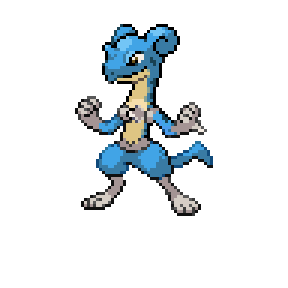
Lapizard is fiercely protective of humanity. Rivalries develop amongst its own kind as different Lapizard battle to see which of them is more fit to be guardian to humans in their territory.
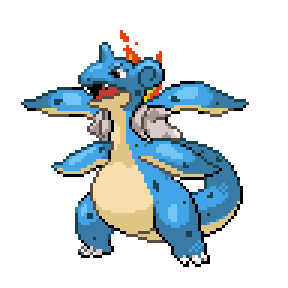
When it charges, it won't stop until it hits a wall. The impact causes its malleable gelatinous body to distort, leaving Dithorn misshapen and disoriented for a few moments.
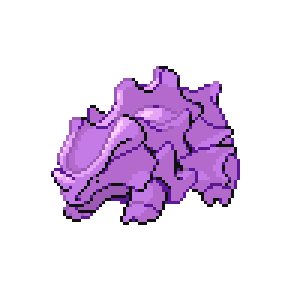
Ditsey nurtures abandoned eggs until they hatch, whereupon it transforms into a copy of the Pokémon that hatched, in order to raise it among its own kind as closely as it can.
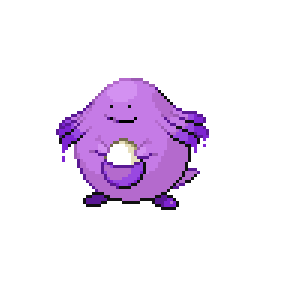
The form Dito takes after self-fusion has resulted in inquiries lobbied towards the Cinnabar Mansion about its true origins. The investigation is still currently ongoing.

A very curious Pokémon, Ditown communicates with others by forming its body into letters and symbols. According to Trainers, it adores playing games of charades.
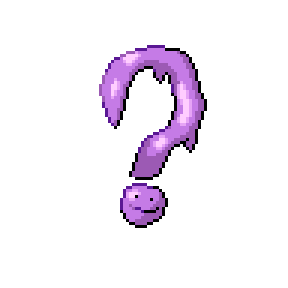
A common, somewhat joking theory about Ditking's existence is that it's the result of a Ditto copying Slaking so perfectly, it became too lazy to change back to normal.
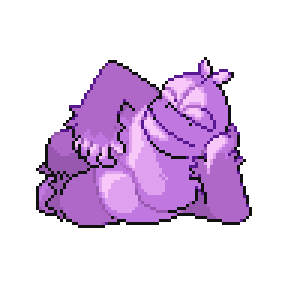
Its small body requires energy from photosynthesis in order to transform, so Ditdew can only morph while in direct sunlight. When the light is gone, it immediately returns to its normal shape.
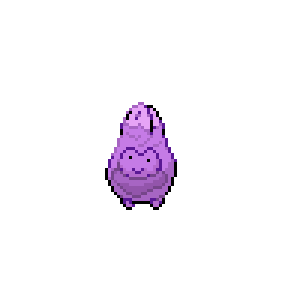
Ditice will only exercise its transformative abilities in colder areas. Warmer temperatures mess with its cellular structure, making it difficult for it to maintain its transformed states.
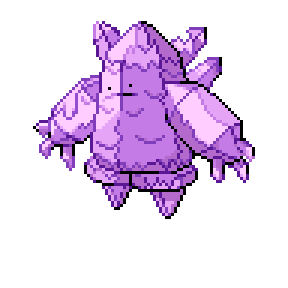
The fungus cannot properly infest Ditto's unstable DNA, rendering it harmless. However, it cannot change form like the main body, so all of Ditsect's transformations have a large mushroom attached.
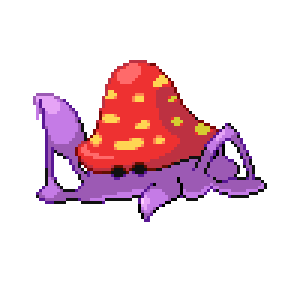
Though it's mimicked a Mankey's form, Ditkey cannot truly mimic its violent temperament. It tries to keep an angry expression, but cannot hold it long before a jovial smile returns to its face.
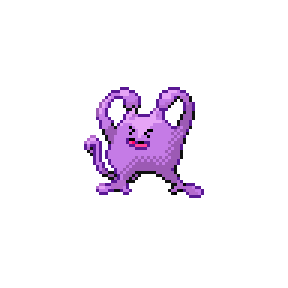
When Ditcanth transforms into other Pokémon, sometimes its transformation varies starkly from what it should look like. Researchers believe it may be copying what prehistoric versions of its mimicry target looked like.
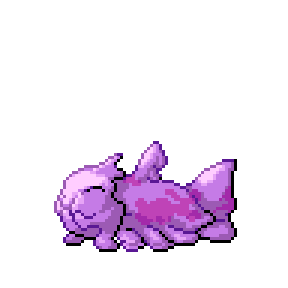
Few, if any, Ditpoke have been observed in the act of transforming. It's theorized by some that their simple minds have caused them to forget they even have the ability.
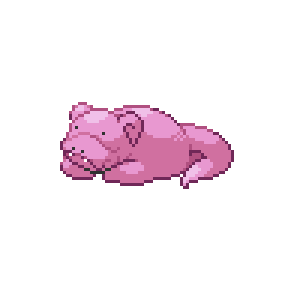
Each of the eggs in a Eecute clutch exhibits a different type of element. Though individually their capabilities are meager, together they can make a formidable confluence of powers.
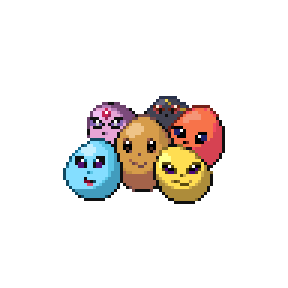
It's thought that the type of vegetation Eedle eats affects its evolutionary direction, as it has a noticeable shift in appetite, preferring specific types of plants shortly before it evolves.
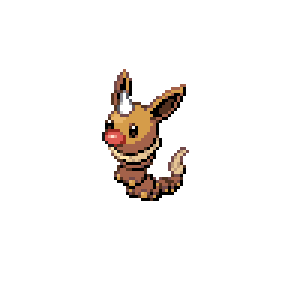
Due to its adaptive DNA and the long-lasting naps it takes, it's not uncommon for a Eelax to evolve while asleep and not even realize its changed for some time after waking.

Eedrill are quite affectionate and will often swarm after something to hug and nuzzle it. They seem unaware that their appearance hurtling towards another at high speed could be seen as disconcerting.
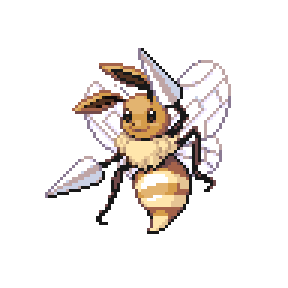
Eetwo is able to create constructs resembling evolutionary stones through sheer psychic power. It quietly ponders these facsimiles often, its tail shifting through a myriad of hues as it does so.

Eeret's was initially assumed to be an odd coloration of Furret due to their strong resemblance. It was only after a wild specimen evolved on contact with a Water Stone that researchers realized it was a fusion.
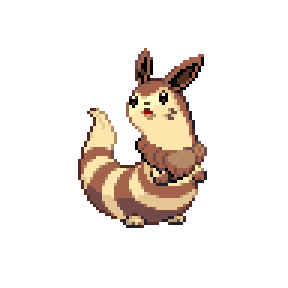
Rare variants of Eeret that take on coloration similar to Eevee have been spotted in the wild. These versions of Eeret seem a bit less skittish and more approachable in the wild by comparison.

The flaps around Eeco's face can easily and painlessly break off and regrow. Though considered tough and flavorless, some have found a use for them as chew toys for some small Pokémon.
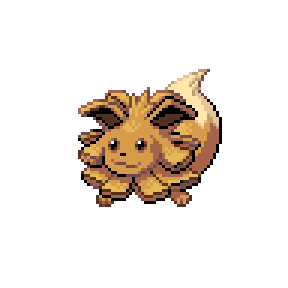
Many of Eelix's segments resemble evolutionary stones, but so far show no signs of functioning similarly. Supposedly, if one segment begins glowing brighter than the other, it signifies what direction Eelix's evolution will take.
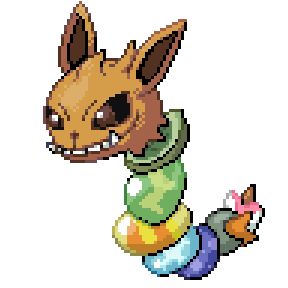
A friendly creature that loves to wrap around and cuddle with others, it's not uncommon to see Trainers with their Eeans happily draped over their shoulders or around their neck like a fluffy accessory.
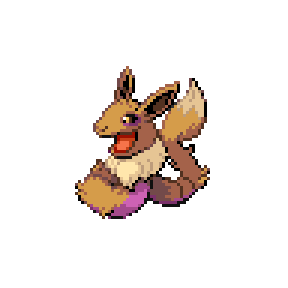
When living in an area that would help induce evolution, Eetler's fur will change hue slightly, and its antlers will gain additional attributes, such as a layer of frost, flames at the tips or electric sparks, among others.
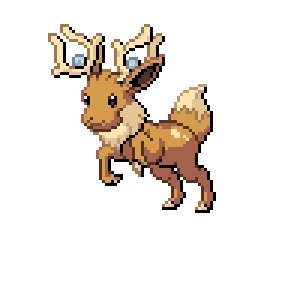
The markings on Eebok's torso resemble evolution stones, though the resemblance appears to be completely superficial. There are rumors that Eebok with different patterns exist in regions like Johto and Sinnoh.
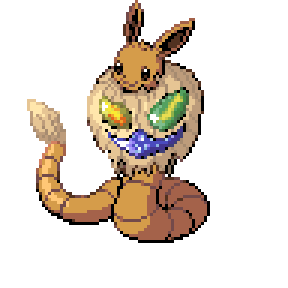
Eetank's milk takes on different flavors and textures depending on its surroundings. Northern Kanto Eetank milk is particularly popular for its creamy quality and sweet taste.
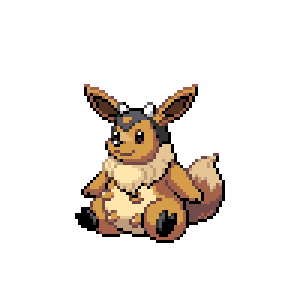
Early in its life, Eesaur's flower has a multitude of different colors on its petals. As it grows and acclimates to its surroundings, the flower petals will change to all become the same pattern.
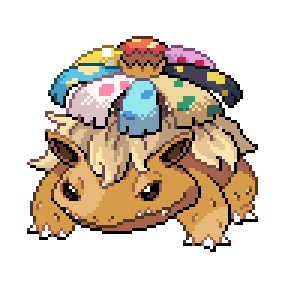
Eequeen is an excellent caretaker of young and fussy Pokémon. Any little one throwing a tantrum is picked up and put into a firm, yet gentle hug and won't be let go until they've calmed down.
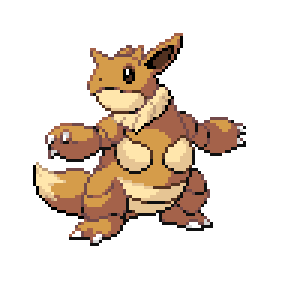
Eetales is highly protective of its many colorful tails. According to rumors, pulling on one will cause one to be cursed, with the terrible fate that awaits differing depending on the tail's color.
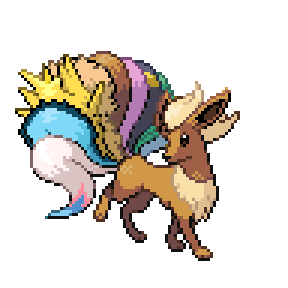
Eemander's flame starts out being colorless in the early days of its life, but as it develops, the color will change depending on the habitat it resides in. Urban-raised Eemander typically develop tan-colored flames.
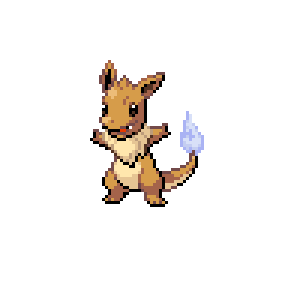
Eegoo's slick and gelatinous body lets it slide itself into a variety of tight spaces it enjoys exploring. These explorations leave behind a sticky, furry residue that fortunately dissipates in an hour.
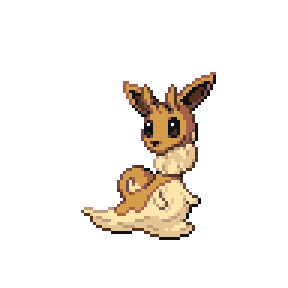
Eebra uses telekinesis to carry evolutionary stones with it at all times. When it places one over its forehead, it gains an elemental boost to its psychic powers.

Vaporwak fashions a trident made of bone to accentuate its already potent hunting capabilities. Swimming at high speeds through water, it spears large fish and even the occasional low-flying avian for its meals.
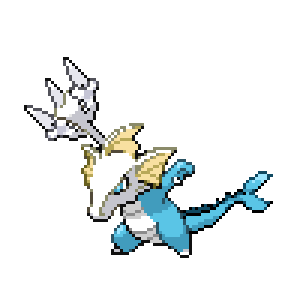
Vaporfing's body regularly puts out a copious amount of bubbles from its many pores. Though harmless and even aesthetically pleasing to some, the bubbles release a pungent scent when popped.

Vaporos can swim at high speeds by twirling its three tails behind it akin to a propeller. It gets extremely aggressive if the jewel on its forehead is touched.

Vaporvee developed a body that allows it to swim swiftly through the water, but lacks the gills needed to remain underwater. It can only remain underwater for 30 minutes before requiring air.
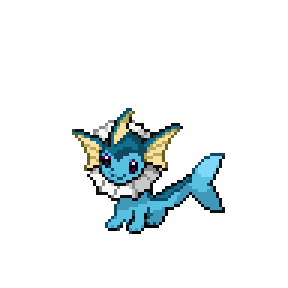
Vaporeon's normally smooth fur bristles out and stiffens when it becomes tense. It soaks aggressors with a stream of spat-out water, before jolting them with electricity shot out from its fur.
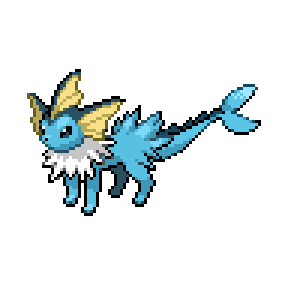
The flame sac within its body allows it to super-heat any water it produces and expels. In battle, it can fire boiling hot water or bursts of scalding steam to leave foes badly burnt.

Preferring to remain in solitude, Vaportwo surrounds itself with large bubbles. These bubbles are brimming with psychic energy, and reflect all manner of attacks, be they physical or projectile.

Vaporossom's Rain Dance is noted to be highly effective, quickly summoning torrents of clean water to revitalize the plant life around it. Many owners use it to help maintain personal gardens.

Many aquariums are beginning to staff Vaporgon2 as assistants. It seems to intrinsically know all the habits and needs of a majority of aquatic creatures, making it very helpful in ensuring proper care-taking is observed.
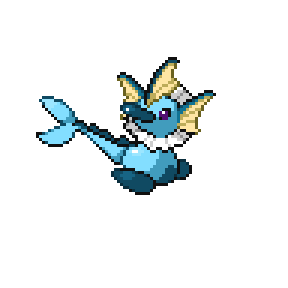
Only those with righteous hearts are said to be able to draw Vaporom out from its deep undersea home. Its arm can shoot a massive amount of bubbles at high speeds, each one charged with intense amounts of electricity.
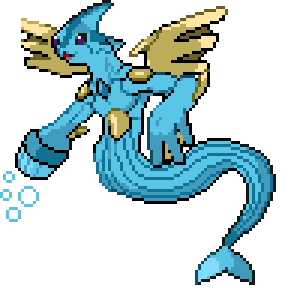
Vaportales can unfurl its tail wide in order to intimidate and ward off potential threats. Those that don't heed the warning will have to contend with its formidable control over fire and water.
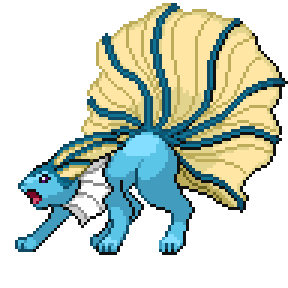
With waterproof fur and a robust body, Vapornine is a powerful and speedy swimmer, and supremely loyal and friendly. It is rapidly becoming the de facto assistant to lifeguards at beaches for its capabilities.
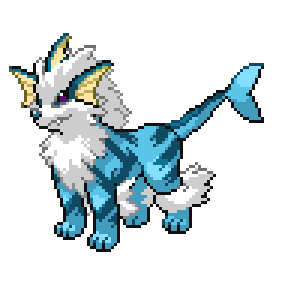
Its ears move and twitch slightly as it picks up on ambient changes in electricity nearby. On occasion, an arc of electricity passes between them.
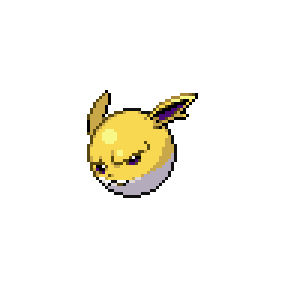
Joltvee has developed some of Jolteon's electrical output early. Though its voltage is potent, it lacks the full strength and runs out of energy after a few discharges.
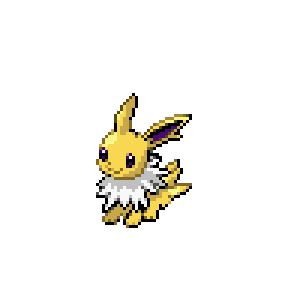
Fire and lightning churn together within Joltram's body, giving it powerful offensive capabilities. Any point struck by the lightning bolts it generates instantly ignites with white-hot flames.
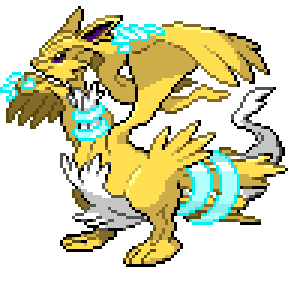
Whenever Jolton discharges electricity, the voltage remains coursing across its metallic skin for some time afterward. Trainers must be careful not to touch it until at least five minutes have passed since a discharge.

It generates constant steady electricity through the turning of its two gears. Ongoing research suggests that Joltink may be able to recharge depleted Thunder Stones.

Thunder Stones grow on its stone body, generating the electricity it uses for self-defense. Once a year it sheds the stones to grow new ones, making the once-rare evolutionary stones far more common.
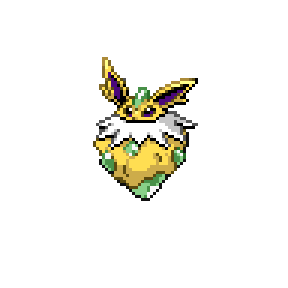
As Flapod gets closer to evolving, its shell radiates more and more heat from within. The tufts of fur igniting signals the process is nearing completion.

The joey is kept warm in the pouch, which is heated by an internal flame sac. The parent uses flame breath too cook food for the child, and cook anybody who gets too close to it.

One should never attempt to touch the stone on Flaros's head, as doing so will send it into an immediate rage. It will coat itself in raging flame before charging into anything and everything nearby until it calms down.

Flavee has a potent flame sac within it that lets it expel flame breath and leaves it very warm to the touch. The fire it breathes may take on different colors over time depending on its surroundings.

Its large size, warmth and friendly disposition make Flalax a popular pet for those who can afford to feed its prodigious appetite. It emits enough heat from its body that many like to use it in lieu of a fireplace for warmth.

Flazor needs to regularly vent the fire its body constantly generates, lest it begin to overheat. Some parts of its metal carapace will even begin melting if it goes too long without letting its flames loose.
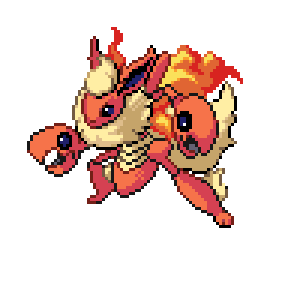
The flame sac inside Flatei that generates its fire reaches temperatures equal to that of molten magma. A mere touch of its paw could heat a frigid lake into a boiling hot spring in minutes.

Flalass is a welcome sight for those traversing frigid mountainsides. It guides them to its home and warms them with its fluffy embrace until they feel ready to tackle to cold once more.
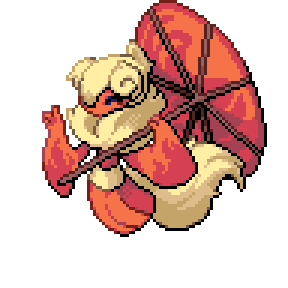
Whenever it uses its psychic abilities, the tuft of fur on its head moves and flickers like a real flame. When it soaks its head to relieve its headaches, steam can be seen rising from its cranium.

Porytor tries to spread its placid and content feelings onto others. Should it appear on someone's device, it generates pleasing music and visuals that help a person envision a relaxing tropical getaway.

Porymie is occasionally spotted on websites related to oceanic research and the deeper areas of the ocean. It spins the star on its back to charge energy, releasing a shimmering and colorful beam from its eye once fully charged.
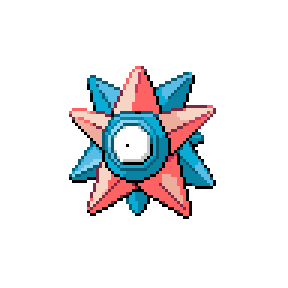
Whenever Porygon moves, it leaves a short trail of numerous afterimages behind. This effect can disorient foes in battle, but also seems to be taxing to Porygon as well.

Poryown crop up within social media websites seemingly at random, interjected within unrelated conversation. Those who spot it usually report feeling a sense of loss.

Porylord has simple and rudimentary programming that makes it mostly used for simple guard duties both in and out of cyberspace. Its bulky form acts as a blockade, and it defends itself with beams of energy shot from the hole in its nose.
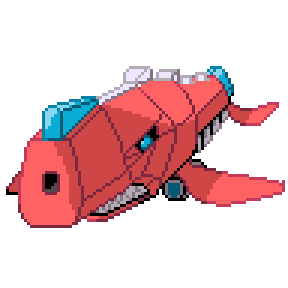
Porytias is highly elusive, both in and out of cyberspace. If spotted, it flees immediately at high speeds, leaving a trail of binary code in its wake.

Poryatone's presence on a website darkens the contents to the point of being illegible. It will only return to normal once Poryatone is removed from the domain.

Porylrock's presence on a webpage forces the background to turn excessively bright and potentially damaging to the eyes. It won't return to normal until Porylrock is removed from the domain.
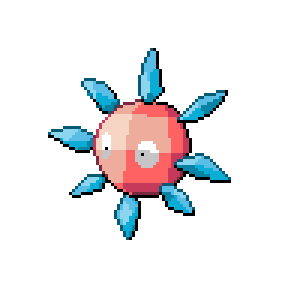
Rarely seen in the wild, Porycanth sightings on the internet suggest that it prefers to dwell on the oldest of websites that are still around, but abandoned or forgotten by most.

Omatwo is viciously territorial, tearing apart any ships it senses coming too close to its domain. The striking visage of it floating amongst the many shipwrecks it made makes up the cover of a bestselling Kantonian fiction novel.
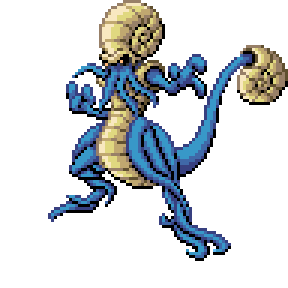
Highly affectionate, Omapiny loves to be carried around or cling onto others to stay close to them. While clinging to them, it uses its little tentacles to give light massages to sore spots, hoping to relieve stress.

Strange ethereal tendrils reach out from within Omaew's body, sending a chill through those they touch. Some morbid minds believe Omaew's goal in life is to consume one of every Pokémon.

As Omaleef ages, the spiral shells around its neck will fall off and be replaced by new ones. These shells carry a faintly sweet scent that makes them highly appealing to small crustaceans.
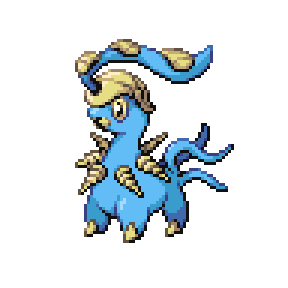
Omarom is said to hide itself away in parts of the ocean perpetually wracked by violent thunderstorms. Tall tales say just glancing at its form will drive a mind to madness and pledging themselves to Omarom's ideals.
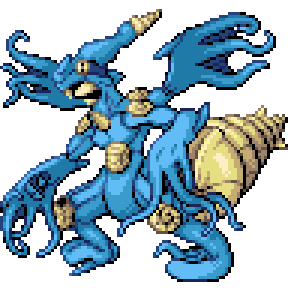
Undersea ruins have been discovered that house Omagrigus as their guardians. The many tentacles jutting from the shell lash out viciously at any and all intruders.

A gelatinous membrane and a tough bony shell keep Omasis's eye protected from outside stimuli. It whips at opponents with extendable water tentacles or jolts them with psychic beams from its eye.
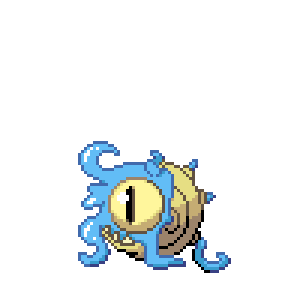
Antennae and wings have formed, but Kakfree's evolution is not yet complete. Its wings can spread a mild poison mist, giving it a bit more defense against predators until it finishes evolving.

Its scythes are a last resort to defend its cocooned body. Though sharp, they are rather delicate; if swung too forcefully they may snap off the body completely, leaving it vulnerable.

It makes a soft hoot periodically, an act done to regulate its internal temperature as it evolves. When evolution draws nearer, the hooting increases dramatically in frequency.

Not very mobile, Kakchu spends time storing energy, waiting for evolution to finish. If a predator draws near, it releases a bright burst of electric energy to blind the foe so Kakchu can escape.
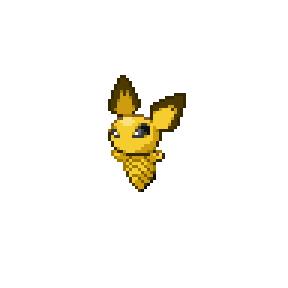
It has extraordinary airspeed and maneuverability to avoid predators, its wings never resting. Because it takes so much energy to maintain this flight technique, its evolution process is massively extended compared to most Kakuna fusions.

It remains almost entirely immobile to conserve energy, hoping its appearance alone will frighten off predators. If that fails, it can still use its stored energy to make at least one strong lunge and potent bite.

Kaksel has a lot of pent-up energy, but its cocoon hampers a great deal of its mobility. Much of its time is spent moping and impatiently waiting for its evolution to finish.
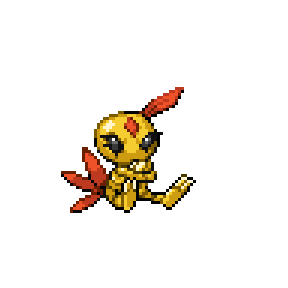
Kakchu's cocoon is multilayered, as each electric burst it uses to deter predators vaporizes the outermost shell. It grows new layers to replace them, though this process delays its evolution.
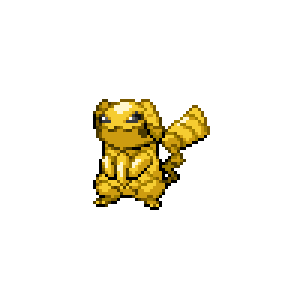
It buries itself in the sand in shallow waters until only its antennae stick out. Should it sense anything getting too close to it, water spouts shoot from the antennae to knock away intruders.
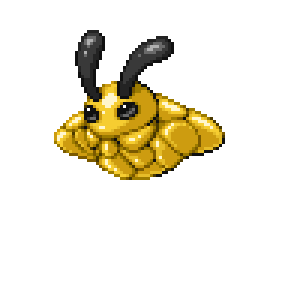
Kakdum gather in small swarms so they can stick together in piles on the forest floor. The proximity allows for better defenses; if the pile is under attack, they can unite their psychic powers to fend off the aggressor.

Kakrachi clings high up in trees and waits for its evolution to finish. Its ethereal ribbons are made of strange poisonous stardust that acts on instinct, striking anything nearby and creating painful scratches and rashes on contact.

Since its cocooned body has no means of attack, its only defense is to fly away from danger. The exertion from flying its heavier body around delays its evolution process.
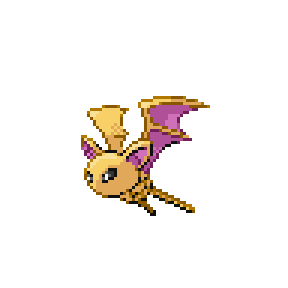
It burrows into the ground, leaving the leaves on its head exposed. These are a deterrent, as between the hardness of its shell, the bitter taste, and the mild poison, few will bother trying to eat it.
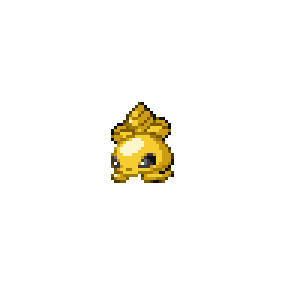
Kakth scrounges around for discarded coins to consume. Science isn't yet sure how, but eating large amounts of coins seems to expedite its evolution process slightly.

Areas where Kakta's cocoon couldn't form properly seep out large amounts of silk. The silk is extremely hot and will quickly singe those who touch it.

Archaeologists consider Kabubone a bit of a menace, as its penchant for using fossils as weapons and armor runs the risk of damaging what could be very important scientific finds.

Kabunyte's appearance has brought about fervent archaeological research, as it has led to theories that the fossil Pokémon of Kanto may share a previously unknown common ancestor.

Kabutini scurries along the shallow beach waters, digging around the sands for food. Though it can breach the water and move on land, lingering out of water too long results in its top half drying out and becoming brittle.

Kabugar will approach humans and beg, attempting to appeal to others with its cute appearance for easy meals. If denied however, it won't hesitate to get aggressive and use its claws and stinger to steal food.
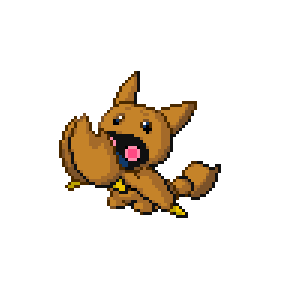
Kabutina is able to reach out and grab distant objects and prey via shadows emanated from its underside. There is evidence it lived among and even led Kabuto colonies in the past.
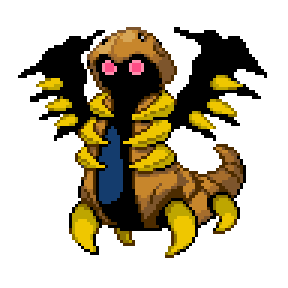
Almost every talon on Kabuligatr's claws is incredibly long and sharp. Once it pins down prey, it slowly and meticulously cuts away, carefully carving off its favorite parts to eat.

With incredible aerial speed and razor-sharp blades, Kabumega was an apex flying predator of the ancient world. Fossil records of its habitats indicate it preyed on even the most gargantuan of prehistoric Pokémon.
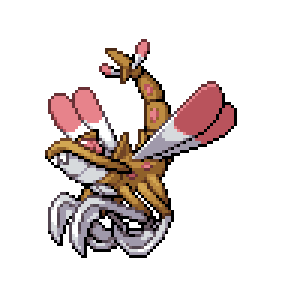
If Kabuvoir or its Trainer is attacked, it immobilizes the assailant with telekinesis before raking its sharp blades across them as a warning before it releases them. Very few aggressors choose to ignore this threat.
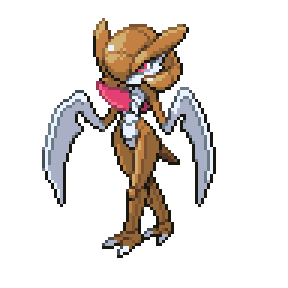
Some believe that the myriad volcanoes dotting the world were all created by Aerodon. It erected these magma-filled dens from the earth in order to incubate and nurture its young within.

Aeron's heavy metallic skull makes it nearly impossible to fly, but it never stops trying. It can glide short distances, but will inevitably hurtle head-first to the ground, though its tough skull prevents any lasting damage to itself.
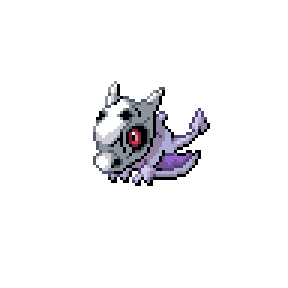
Some variants of Aeron lack wings to attempt flight, leaving them landlocked. They watch their winged compatriots try to fly with a mixture of jealousy and pity.

Aerorunt is too heavy to fly for long, forced to flap constantly just to stay a meager amount off the ground. It's believed to have fought over food and territory with Archeops in prehistory.
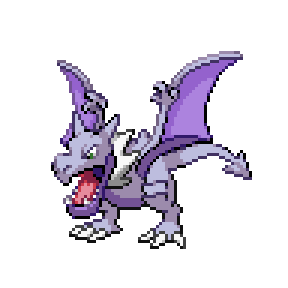
Snororb has a volatile temper, prone to throwing tantrums if it gets too hungry. These fits can be dangerous, as they sometimes result in it exploding from sheer rage.

Snorhorn has a simple and placid personality, spending most of its time grazing and sleeping. Waking it up from a nap, however, will make it charge at the culprit in a grumpy rage.

Snormie settles to the bottom of the sea and slumbers for long periods of time. Its deep open-mouthed snoring causes faint rumbles and miniature whirlpools.
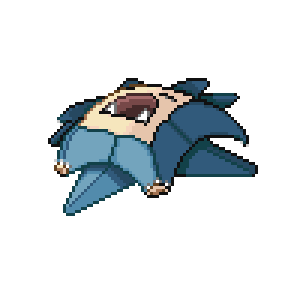
Snormar is considered a gourmand when it comes to cooking meats, using flame-breath to roast meals to perfection. Improperly heating a meal will send it into an indignant rage.

Snorcune knocks down berries from trees and stores them in its flowing mane. It yawns and snores so much while traveling the land that some believe it's running around in its sleep.

Using its control over time, Snorbi eats up a handful of berries almost completely, then reverses the berries' time, regenerating them and letting it eat them over and over again.

Snortyke travels the seas, gathering up berries and small fish to take to secret hoarding spots. Once it's amassed a stash twice its weight, it gorges itself before settling down for a nice nap.

Snoragon's skull is extremely sturdy due to repeated impacts. Said impacts are mostly caused by its tendency to fall asleep while standing, and then tumbling head-first to the ground in its slumber.
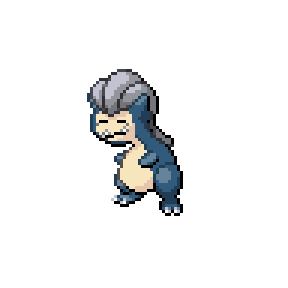
Snorler lives and snoozes among the craggy cliffs of mountainsides. Its tough skin and deep slumber mean that even if it turns in its sleep and rolls all the way down a mountainside, it won't be jostled from its nap.

Snorfetchd fashions a flute from a leek and apricorn. It plays the flute in the presence of other Pokémon, lulling them to sleep so it can steal their meals while they slumber.
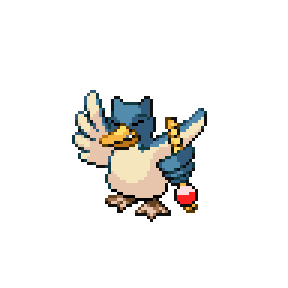
Artieon's elegant fur cools and freezes moisture in the air in its immediate vicinity, making it consistently surrounded by a faint layer of frost and mist. It freezes over ponds and lakes so it can take naps upon the frozen surface.
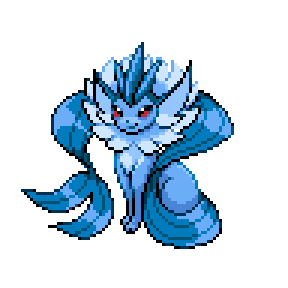
Artidrill's stingers possess a very potent chilling power; anything pierced by them will slowly become frozen from the inside out. These icy statues of victims serve as a warning for others to not disturb its hive.

Every swing Artiblade's blades make leaves a freezing trail behind. It can even send crescent-shaped chunks of ice at foes as projectiles, ensuring none can escape its frigid might.

As Artitias zips through the air, it cools the air and creates snow drifts that linger for a short while after. It likes to fly over tropical areas and give the inhabitants a short respite from the hot temperatures.

Artielgon hides itself away on frigid mountains so it may grow into its next form in solitude. Those that disturb its peace will be pelted with frozen winds created through the swing of its tail.

Artibat makes its home in caverns located in colder regions. A quick and silent hunter, it prefers to swoop at and suck the blood of Ice-type Pokémon.
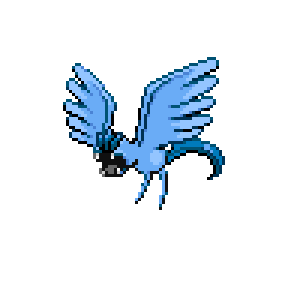
A sage-like Pokémon that resides on frigid mountains, Artibra is often sought out for its wisdom. It rarely deems others worthy, casting those it rejects out of its domain with gusts of icy wind created from its staff.
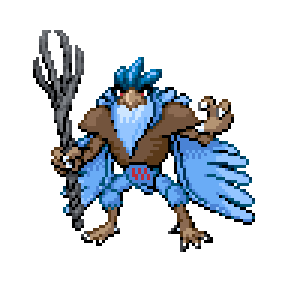
Seen nesting in long-abandoned power plants, Zapdrill is considered highly-dangerous. Aggressive to outsiders, it fires electrically-charged needles that launch with the speed of lightning, and boom like thunder when fired.

Zaphoot's internal electric generation follows a strict regulation schedule. It vents a small burst of excess electricity around its body every hour, on the hour.

Zapi has a joyous personality, but little understanding or control of its powers. When overjoyed it prances and sprays sparks and even small bolts of lightning around, potentially causing problems for those it wants to play with.
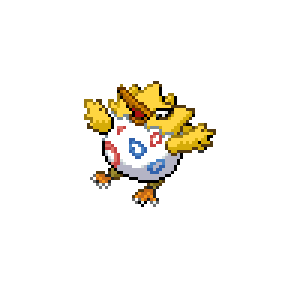
Drawings resembling Zapown have been seen within a number of ancient ruins. Research suggests the areas were prone to heavy lightning storms, so Zapown may have been considered a harbinger of such by those old civilizations.

Zapfarig's front half resembles Zapdos's Galarian counterpart, and has a strong tendency to run about at high speeds. The back half is less equipped for running in such a manner, so it struggles to keep pace.
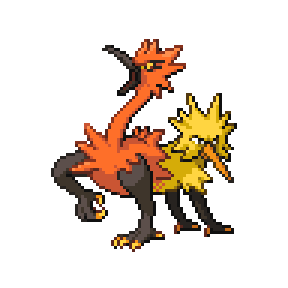
Zapdour summons and channels lightning via the beak-like horn on its head. Its not uncommon to see pack-mates zapping each other to compete and determine hierarchy among themselves.
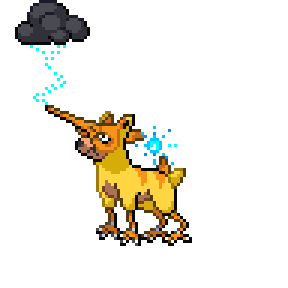
Zaptei races across the land, rarely staying in one locale for more than a day. When it does linger, fierce rumbling storm clouds begin to accumulate in the area more and more the longer it stays.

Zapom's tails create and hold clouds brimming with electricity, squeezing them to send numerous volts in every direction. It lets out a shrieking cackle as other Pokémon flee to avoid being zapped.
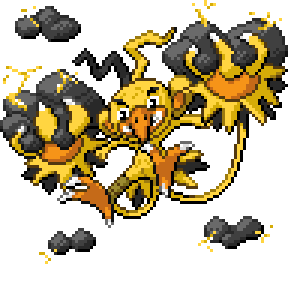
The tower on its back is consistently producing large amounts of electricity. Researchers are hoping to find more Zapsaur in the wild, as they could be a great boon to power plants across the world.

Zapra hides itself within cumulus clouds, its electric stores slowly turning them dark and thunderous. Once its current hiding spot turns thunderous, it teleports to another, "clean" cloud to hide.
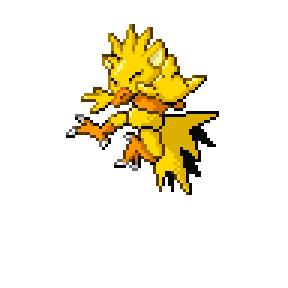
Zapdash gallops with such speed that it could be mistaken for a bolt of lightning crackling through the air. Only those it trusts the most are able to touch it without being zapped by its electrified fur.

Milk sourced from Moltank remains piping hot for a long amount of time. It has a pepper-like aftertaste to it, and is popular in some regions as an ingredient for spicy pasta sauces.
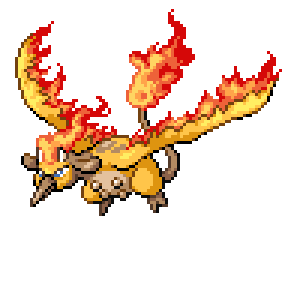
Moltank's flames burn hotter and more wildly the longer it goes without milking. Owners need to make sure to keep a strict milking regiment to avoid potential future fire hazards.
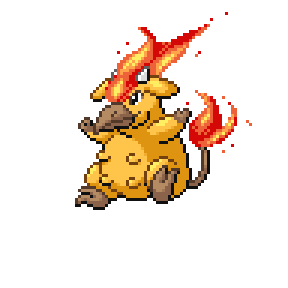
Molkou roams far and wide over the land and the air. When it runs, it leaves behind small flames with every step, while in the air, lightning crackles from every flap of its wings.

Mologre swims deep within the lava found on volcanic islands. It dislikes intrusions on its territory, and it has been said that if others invade its home, it will sink the island beneath the ocean in a rage before seeking a new home.

Drackle sheds its skin on a regular basis, pushing it out through one of the holes in its shell. Because this skin has been soaking in berry juice, some restaurants sell it as a very unique delicacy.

It's skin is soft and smooth to the touch, and requires regular baths to keep it so. The small embers Drachic can breathe are colored a rather ethereal blue hue.

Dragon's wings are too small for flight, but they dispense small glittering scales when flapped rapidly. The scales cause painful rashes on contact with most desert-dwelling predators it shares a habitat with.
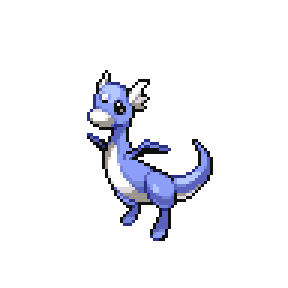
In areas known for their connection to Dragon-type Pokémon, it is common for people to gift another Dradisc as a romantic gesture. While underwater, it blows heart-shaped bubbles at others.
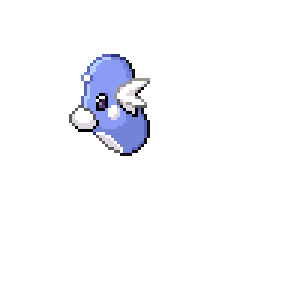
Dragofing resides in misty areas, further obscuring itself from view via the ethereal mist its body constantly creates. Researchers believe it is incredibly shy and seeks to hide itself from view as much as possible.
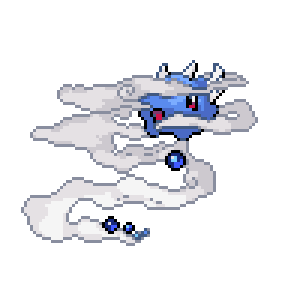
The smooth crystal segments are said to contain a potent magical force. This is theorized to explain how Dragolix can fly through the air despite the size and weight of its body compared to its wings.

Those who have managed to spot the elusive Dragokou in the wild report it leaping through the air with unparalleled grace. It leaves a shimmering, sparkling veil behind it with every jump.

As Dragozee waves its arms and fingers around, it creates a shimmering, sparkling ripple in the air. This display entices and hypnotizes others, so that Dragozee can siphon energy from them to fuel its own psychic powers.

Remote islands contain ruins that suggest old civilizations worshiped Dragotei as some type of deity. Though not violent, Dragotei is protective of these ruins and rarely lets anyone explore them.

Some say Dragolurk was created by a civilization that worshiped Dragonite as protector gods. When it fires a destructive Hyper Beam from its arm, the dragon's roar can be heard.
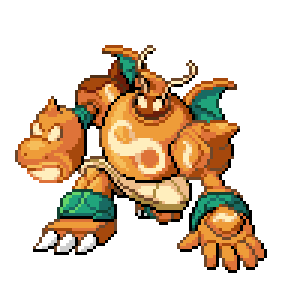
Beefing leaks a very pungent honey from its pores that acts as a delicious treat for small insects. The syrupy substance is toxic to humans and non-Bug-Type Pokémon.

Beemar breaths fire onto its needles to coat them with flame, making its jabs more deadly. If truly enraged, it will fire flaming needles nonstop until it collapses from exhaustion.

A chilling pollen spreads from its majestic wings with every flap. It has a calm disposition and avoids conflict, but has been seen freezing unruly and aggressive Bug-Type Pokémon in its domain.
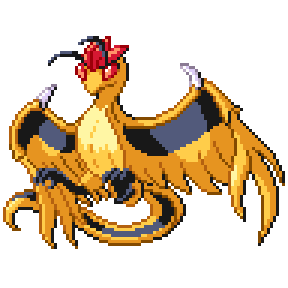
The nectar in its flower and the drool from its mouth are both incredibly sweet. Even with stingers for defense, it still finds itself accosted by a variety of Pokémon addicted to the tastes.

Though not terribly mobile, Beekaboo can strike with its stingers at an incredibly rapid and accurate pace. Some have trained their Beekaboo to carve intricate jack o' lanterns from pumpkins for autumn celebrations.
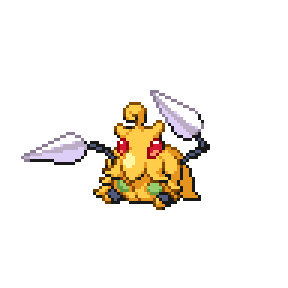
Beeduck's honey is sweet and medicinal, effective at helping headaches in people and Pokémon. Because it suffers from constant headaches itself, Beeduck is usually seen eating or bathing in the stuff.

Most Mewbone grow up without a parent, forcing them to fend for themselves and grow cold and standoffish. Some have been observed at night, drawing an image similar to Mew in the air with psychic energy.

First discovered on Cinnabar Island, Mewto is theorized to be left over from failed cloning attempts during Mewtwo's creation. Being incomplete, it can only partially mimic the form of the being it was supposed to be.
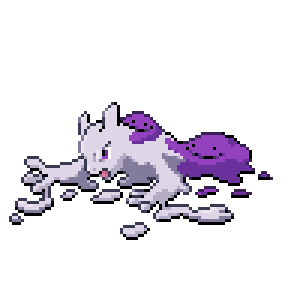
Fusion has caused Mewew to develop a highly aggressive personality. It teleports around, flinging psychic projectiles indiscriminately at others. It searches for powerful rivals who can compete against its mental might and give it a proper fight.
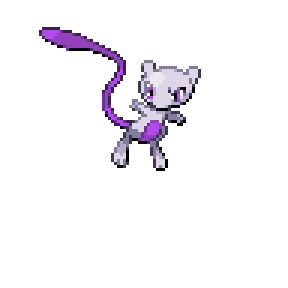
Mewnette sneaks up on other creatures, creating strings made from its own powerful psychic energy that latch onto others. Once snared, it can manipulate its victim to do its bidding.
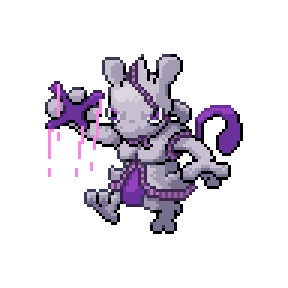
Visually very similar to Slowpoke, mentally Mewpoke is its complete opposite, intelligent and scheming. It uses this intellect and unassuming form to take advantage and manipulate other Pokémon to do its bidding.
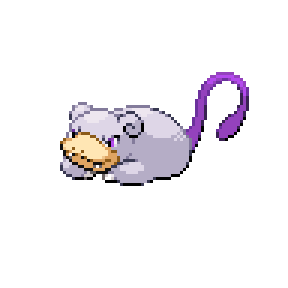
Mew often pranks Mewbro by grabbing and nibbling its tail suddenly. Mewbro's angry reaction ruins its ruse as a dim, placid Pokémon, which Mew uses to teach Mewbro a lesson.
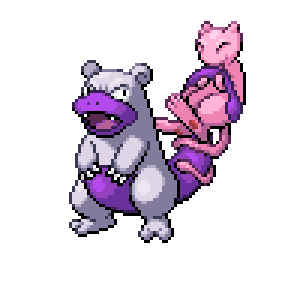
The three heads exhibit features and behavior from Mewtwo and its two Mega forms. Mewdrio's stance and fighting style changes depending on which head is currently most in control.

Mewpod possesses the ability to rewrite the cellular structure of its cocoon. It does this in response to the presence of other Pokémon, morphing its outer layer into a defense tailor-made for whatever predator tries to hunt it.

Mewnx is renowned for its friendly attitude and playful dances, which it's always willing to show off. It takes great pride in its hair as well, grooming it thoroughly after any performance.

Mewnx is known to have a voracious appetite for sweets, always on the lookout for treats. Some say it will turn others into candy if it's hungry enough, though this is unconfirmed and unlikely.
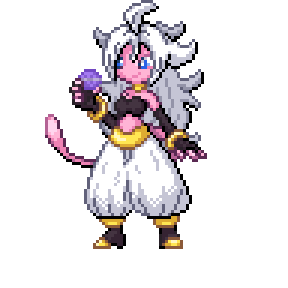
Mewreon's warm body soothes those who touch it, emptying their mind of troubled thoughts for a time. In battle, it can psychically manipulate the fire it breathes, making it move in unique arcs and chase after evasive foes.
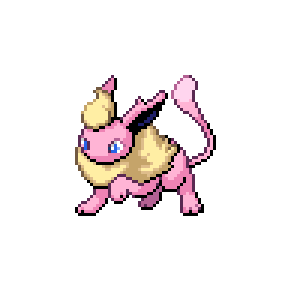
The lightning coursing across Mewdos's body appears to be composed of pure psychic energy. Those struck by its bolts have their will to battle completely zapped away.

Some have nicknamed this fusion "Mewthree." Fusion has calmed Mewtwo's once-violent heart, perhaps due to Mew's genetic material filling in gaps in Mewtwo's DNA. It has become a being of incredible power, but also incredible kindness.

Mewper is a curious sort, often following along after something passing by has caught its interest. It is rather shy as well, so should the person it follows turn to see their pursuer, it turns invisible so as not to get caught.

Mewzor is accompanied by two floating claws that it controls through powerful telekinetic powers. Its power appears to originate in its double tails, as the tips glow bright as it directs the claws around.
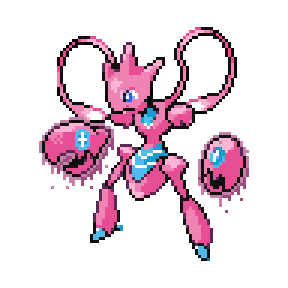
Mew's unique DNA allows Mewgross to change any part of its body into that of any other Pokémon while in combat. These chimeric combinations allow it to create nearly unbeatable offensive and defensive forms.

It's thought that Mewking can psychically resonate with any nearby Pokémon and pacify them, putting them to sleep so that it can also peacefully slumber without the noise of conflict.
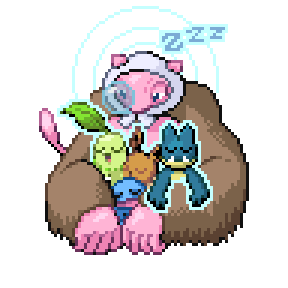
Mewram is said to intrinsically understand the true nature of every being that was or ever will be. Flames of blue and red will travel along its tail and ignite the symbol at the end, should it be in the presence of those with dishonest hearts.

Its crystal core contains the DNA of every known Pokémon. Geneticists theorize that it can transform any Pokémon it touches into any other form, using its vast DNA manipulation skill.
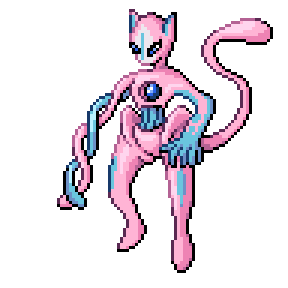
The psychic powers triggered by Mewcorio's dances are so strong they can be witnessed rippling the air around it. Even the most violent and aggressive of Pokémon will be pacified if Mewcorio dances near it.
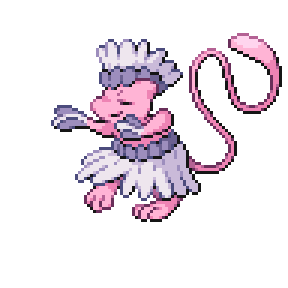
Mewsect spreads a puff of spores around itself once per day. The spores will grow into all manner of different mushrooms; scientists believe Mewsect may potentially be able to produce any kind of fungus, if only at random.

Mewduck's head aches if it's not in the presence of other Pokémon. The larger the group and the more varied the species of Pokémon within, the more its pain ebbs away.

No matter how dirty the surroundings, the water Mewduck makes its home in remains pristine. The jewel on its forehead emits a psychic energy that constantly removes impurities in the water it swims in.

Mewhirl creates swirling patterns made of bubbles in the air whenever it meets someone new. The bubbles are laced with psychic emanations that invoke a feeling of peace in those who gaze at them.

Though Mewchamp much prefers friendship to fighting, it won't back down from sparring or combat. It creates extra arms from psychic energy when it battles, making it impressively formidable and difficult to defend against.

Mewlem forms a mobile shell around itself by compacting heavy stones together via telekinesis. It's very shy by nature, so it's rarely seen outside of the shell, even among its friends and Trainer.

Medical science has achieved great breakthroughs thanks to Mewuk. Because its body contains the DNA of every Pokémon, researchers are slowly developing antivenom for every Poison type and their myriad fusions.

The leaf around Chikolix's face is as sturdy as the steel on the rest of its body, giving it added protection. It only pulls back to reveal its face when it breathes out a suffocatingly sweet breath to disorient others.
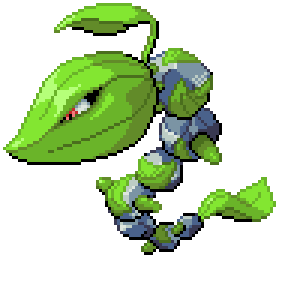
Though Chikoeon's body can shift hues to blend in with any territory, its leaf can only become the natural colors that foliage takes with the seasons. As such, it hides away among leafy tree branches where it can camouflage properly.

It enjoys lazing around in moist areas, watching the water droplets drift down off of its leaf. The faint scent wafting from said leaf invokes a feeling of listlessness in others.

Chikomer goes around touching flowers yet to bloom, smearing its slimy form across the plant. Those plants touched by it are notably more vibrant in coloration when they bloom.
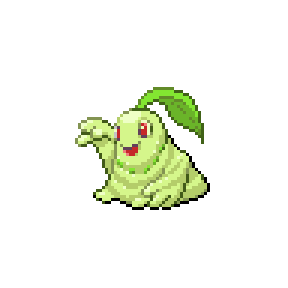
Baykern is almost always seen carrying a number of leaves and seeds within its mouth. It trades these with other Grass-type Pokémon in exchange for other foods, protection, or simply to share particularly tasty greens.

Baygon2 is usually spotted hanging around websites based on the subjects of floral upkeep. It's quite helpful in guiding users towards sites that will give them even more details on how to properly care for their gardens.
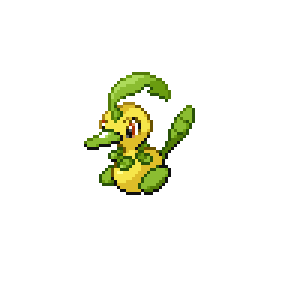
Megamie's petals are known for their pleasant scent, akin to tropical fruit. Its core absorbs sunlight over time, which it shares in low amounts with plant life in need of a little boost.
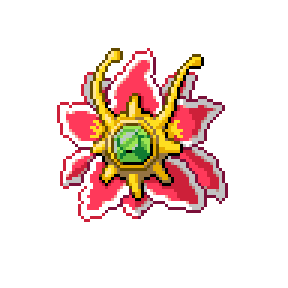
Though normally it keeps its shell coated in flame for self-defense, Cyndaras can easily retract the fires to allow others to ride on its back. Land-based Cyndaras are often seen carrying young children to school.

Though normally it keeps its shell coated in flame for self-defense, Cyndaras can easily retract the fires to allow others to ride on its back. Water-based Cyndaras are most often seen carrying people across small lakes.
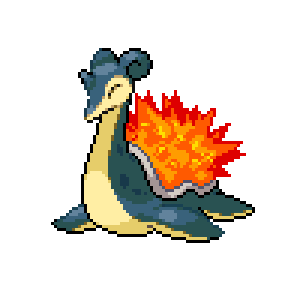
Despite their cute appearance and friendly nature, Cyndadile bite to signify affection. Their flames flare constantly due to their joyful energy, making them a handful for most Trainers.

Rival Cyndatu get into light shoving matches over food. Should one be toppled over backwards, the flames it shoots from its back propel it back to its feet to continue the fight.
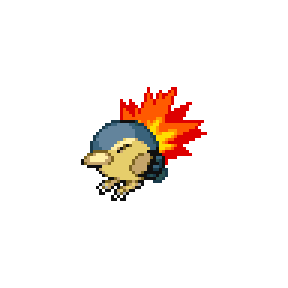
Cyndalord has an easygoing and upbeat personality. It often flares up the flames on its tail when happy, though typically without thinking about whether any other creature might be nearby when it does.

The burning flame atop Quiking's head is the only part of it that is particularly active. It uses the flame to heat up the delicious berries that fall down from trees near its vicinity.
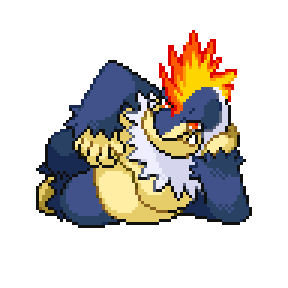
If rival Quiron meet in the wild, they will try to intimidate the other by flaring their fires up to see who burns hotter. If neither backs down from the display, they charge their heavy bodies into each other and begin fighting for dominance.

Flames jet from its back in order to vent its energy and keep from overheating. Should these flames recede, it's a sign that Typhode is preparing to unleash a massive wall of flame from its mouth.

When approached, Typhtops breathes a thick cloud of steam at others in order to obscure their vision. The last thing most of its prey see are piercing red eyes from within the sweltering mist.

Typhwoodo immolates itself for defense, bursting with powerful flames across its whole body. As the flames roil on, the scent of burning wood fills the air.
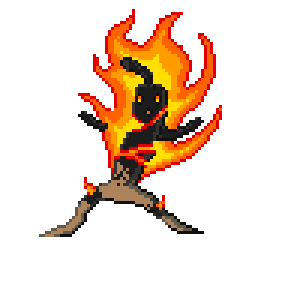
Typhtler's flames around its neck flare up when it turns aggressive. It must take care, as its antlers are flammable, and if its fire burns too strongly it may set them ablaze.

Cocky in combat, Typhwile loves to let its opponents think they've got it cornered, before its false mouth belches a plume of flame, catching them off-guard and opening them up for a vicious counterattack.

Living deep beneath volcanoes, Typhlord swim through lava like water, their durable skin impervious to heat. It is believed that earthquakes during eruptions are caused by Typhlord hastily relocating before they're caught in the blast.

Typhtrum prefers volcanic and ashy areas to call home. The flames that emit from its body flicker in accordance to the volcano's dormancy. Should they blaze up suddenly, an eruption is imminent.

Totokarp hunts by leaping from the water and biting at anything flying above. Once it latches onto something, it doesn't let go, dragging its prey beneath the water's surface.

It tags alongside its Trainer, its protective nature making it wary of any strangers drawing near. Even faces familiar to the Trainer must be wary; if they aren't familiar enough to Totovoir, they risk getting bitten.
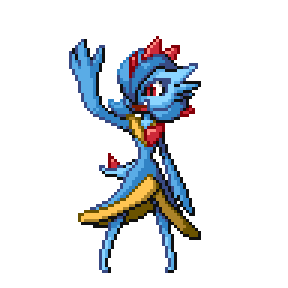
It will share the accessories on its ring, but only if traded something equally pretty or valuable. Any who try to take them by force will be given a nasty bite from its powerful jaws.

The face on the mask changes its expression to match Totomask's mood. If the mask shows its teeth, take care; Totomask is in a mood to bite anything that comes close.

Totodisc has a contentious reputation as a pet mostly due to its way of showing affection. The longer it holds onto you after biting, the more it loves you. The longest recorded Totodisc bite is currently 6 hours.
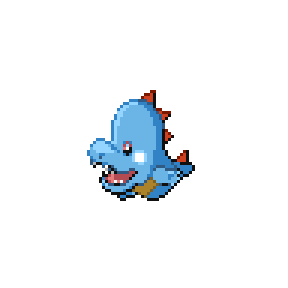
It has a tendency to bite down onto large machines, though nobody is sure why. Due to the magnetism in its jaws, it's difficult to pry it off once it's bitten down.

It has strong swimming muscles, allowing it to swim against most currents easily. It goes on land to feed, eating the worms and small bugs that inhabit the riverside.
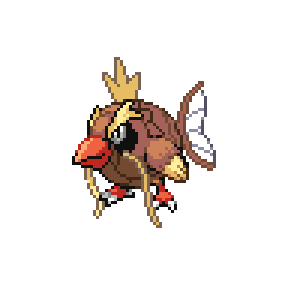
Pidgey exhibits features of Pidgeot's Mega Evolution. It flies at ridiculous speeds for its small stature to the point that it often has difficulty stopping properly.
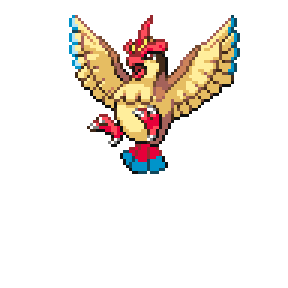
Pidrow tries to interject itself into Pidgey communities and assert itself as the de facto leader by bullying others into submission. This usually results in it being chased off by the whole flock.

It leaves behind puddles of sticky berry juice, then hides nearby. Once enough insects are stuck, it goes to feast on the mixture of tasty juice and bugs.

It uses its rock-solid skull to headbutt trees, dislodging fruits, nuts and bugs for it to eat. Overzealous Pididos occasionally end up knocking the entire tree down.

Pidblade both fights and forages via quick stabbing maneuvers with its paired blades. In the wild, it stabs through fruits and shares the meal with the head on the opposite sword.
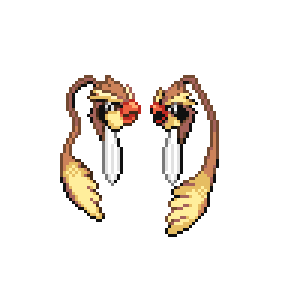
Pidish primarily gets around by hopping, as its leaves weigh heavily on its tiny frame. Shed leaves can be steeped in water to brew an herbal tea popular in coastal parts of Kanto.
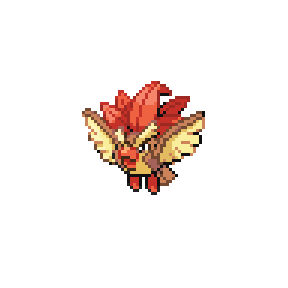
Piduck in the wild often act as mentors to Pidgey flocks, training and keeping the small birds in line. Though very patient by nature, they won't hesitate to punt one of their trainees if they get too uppity.

Pidchop has powerful physical potential, which often gives it a cocky, narcissistic demeanor. It spends more time preening its feathers than it does actually training.

Though it never ferries humans itself, Feraras ensures that Lapras it oversees carry others safely. Anything that dares threaten them under Feraras's watch will be mercilessly rent apart.

Ferapardos hides itself just out of sight underwater, remaining motionless until suitable prey draws near. It then leaps from the water at frightening speed to deliver a crushing headbutt to knock out its future meal.
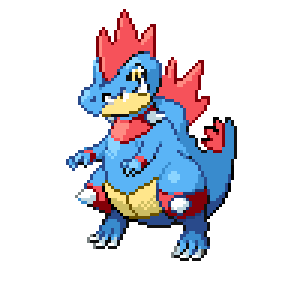
Possessing one of the toughest hides and sturdiest builds around, Feranaught is a massive juggernaut of a Pokémon. It can take a full-bodied charge from Pokémon several times its size and weight and not even flinch.
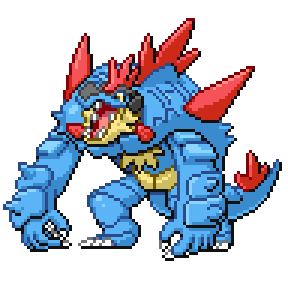
Sento extends part of its gooey body as a tail to lift itself up, gaining a better vantage point to observe others. This lets it transform better, increasing the accuracy of its shapeshifting.
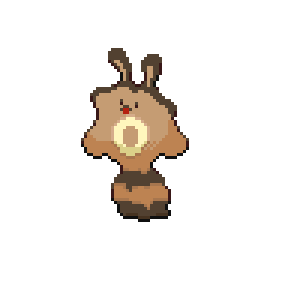
Senvoir is very loving and easily grows attached to others, craving regular hugs. It's a bit stubborn as well, so those that try to release the hug before Senvoir is finished get forcibly pulled back in by its psychic powers.
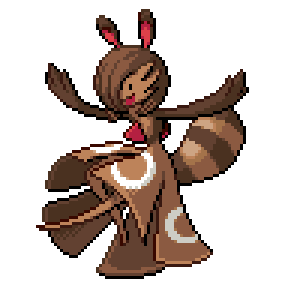
Lacking teeth, Senble subsists on swallowing insects whole for sustenance. It uses its strong tail to give it a boost in height when bugs fly up high to evade it.

Senpet is a friendly spirit often spotted within the homes of those who live alone. It nuzzles up to them at night, keeping them company so they don't get lonely through the evening.
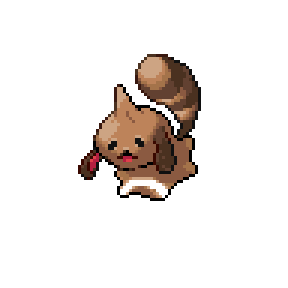
Its strongest muscle is its large and thick tail. Senchop pummels foes with its powerful punches and kicks, but always saves the final blow for a mighty swing of its tail.

Furphan loves to play with its Trainer by curling into a ball and being rolled around. Its large size and heavy weight makes it difficult for most to push it around for long, unfortunately.

Furtei is friendly yet aloof, roaming the world and never staying in one locale for long. It curls up next to sleeping Trainers and keeps them warm, but as soon as they wake, it quickly takes its leave.

Though incredibly affectionate, keeping a Furoth as a pet is often discouraged due to its boundless energy. It unceasingly asks for food or play, and rarely sleeps for more than an hour a day.

Furtuff's body is deceptively pliable, able to inflate rapidly for intimidation or deflate for evasion and infiltration. It loves having people hug and squish its soft body with all the strength they can muster.

Hootdle constantly creates a poison that causes blurry vision in those afflicted. At the same time every day, it secretes excess poison from its horn, smearing it on the leaves around its home.

Its head can turn 360 degrees, and it can control its flight path no matter what angle its head or body is turned. This makes it very tricky for prey to avoid being caught by it.

Hootco often goes unnoticed, hiding among piles of its favorite snack of dried leaves and pretending to be a simple pine cone. Those that see past the deception must still be wary of it exploding in self-defense.
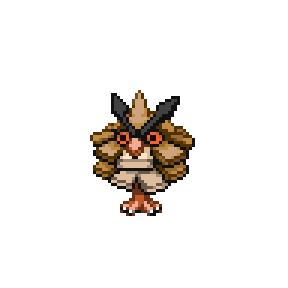
Its strong eyesight lets it see the movement of prey even in the darkest of forest evenings. It leaves its den and hunts at the same exact time every night.

Hootler's antlers are most solid and robust early in the morning. As the day passes, they soften and begin to "wilt," until they obscure its vision. They regain their rigidity overnight while Hootler sleeps.

Incredibly shy and reclusive, Hoots is only seen outside of its home inside tree trunks for a short time each day. During this time, it can be heard singing a quiet, slow-tempo song to itself.

Groups of Hootdoof will work together to gnaw wood down to usable sizes in a timely manner. Those that don't adhere to the strict schedule are shunned and scorned.
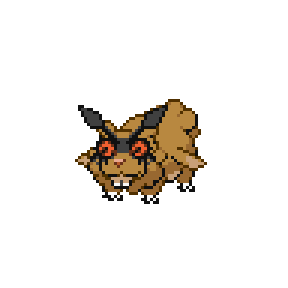
Hootpod keeps a strict foraging schedule, timing its every move to avoid danger. If disrupted, the break in routine causes it debilitating levels of stress.
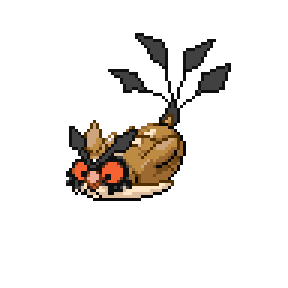
It likes to pilfer coins from passersby, but observation has noted that the attempts at stealing adhere to a strict schedule, allowing locals to help travelers plan their time to avoid being robbed.
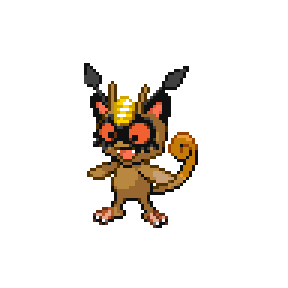
Hootlithe makes for a tricky pet to raise, as it adheres to a strict daily schedule for feeding, recreation and so forth. Any deviation from this schedule tends to cause it stress.

It adheres to a strict schedule of nightly dream consumption. If one feels a disturbance in their sleep at the same time every evening, a Hootzee is likely to be residing nearby.

The only part of Noctuna that moves is its head, tilting back and forth with the passing seconds. It's assumed it's counting down the exact number of seconds it will take for it to complete evolution.

Noctret's lithe body makes it highly aerodynamic, able to take off and maneuver through the air silently and gracefully. This makes it very efficient at both hunting and evading attacks.

Noctu is said to receive regular visions of the future, and is often seen in quiet contemplation. Many believe its mind is constantly racing with thoughts on how to continue shaping the perfect future.

Its high intelligence helps it formulate hunting plans that rarely fail. Its hooting cry has a distinctly artificial tone to it, and has been noted to disrupt the time-keeping function of technology in its vicinity.
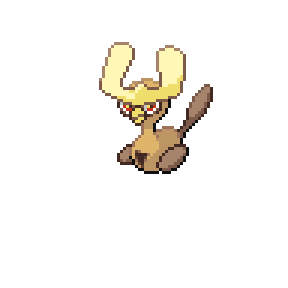
In battle, Noctpunny shields its body with its massive ears, contemplating multiple battle factors to calculate the best course of action. Once it's formulated a plan, it leaps out of its shielding and fights back with powerful kicks.

Six times a day, Noctpix will cough up a fireball that floats above it and bursts into a shower of sparks. It appears to be merely recreation, though none are sure why it never deviates from that exact number.

Though it stands perfectly rigid, its eyes dart around, taking in its surroundings with perfect clarity. Once it sees the opportunity to hunt, it moves with calculated perfection, its prey disappearing from the forest in total silence.

Noctfetchd has been observed holding its stick at different angles depending on the hour. No matter the time and position, it is always capable of wielding its weapon with calculated precision.

Normally kept tucked close to its cocoon, Ledyuna can extend its fists short distances in order to deter predators. Its sensitive antennae and strong eyesight let it remain wary of anything approaching its surroundings.
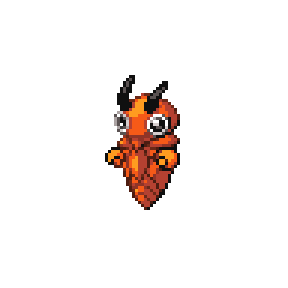
Ledygle's multiple arms allow it a controlled and more intricate touch to its brushstrokes when painting. Stars are often a major theme in the drawings it creates.

Though most of the spines on Ledyslash's back are removable without issue, the dark spines are not, and Ledyslash will become quite agitated if they are tampered with. Some believe they are directly attached to highly sensitive nerves.

Due to the cocoon and the body within being frail, Leduna uses its four fists to vigorously defend itself. The scarf-like frill around its neck billows in the breeze, even when there is no discernible wind.

Ledzor is a staunch defender of insect Pokémon. If it spots a bug being picked on, it descends with heroic flair and retaliates on the aggressor with a flurry of punches from its four metallic claws.
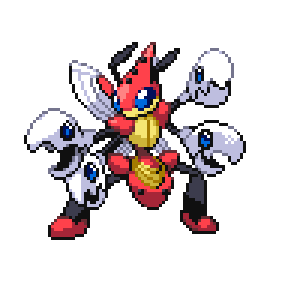
Each egg in a Spinacute clutch covers itself with silk as an added layer of defense. If any member loses part of their armor, the rest of the group will work to weave a replacement posthaste.
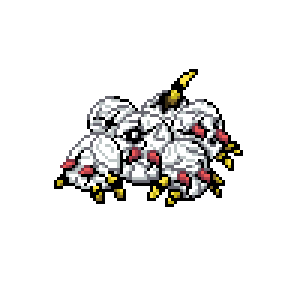
Spinabone is a bit skittish and very quick to go on the offensive. It keeps its bone club connected to its hand via webbing, swinging it around like a whip to beat at potential threats from afar.

Spinaursa spins its webs around the lower areas of forests, catching insects attracted to the honey-like scent its webbing emanates. The threads can be consumed by humans without issue, and have a faintly sweet taste.

Spinalax cannot stick to or climb trees due to its legs not supporting its weight properly. Instead, it shoots thin sticky webbing from its mouth at fruits and other snacks to drag them down to it.

The markings on its head are meant to deter predators, and hide the fact that Spinats is in fact incredibly timid. Sibling pairs have been seen accidentally frightening each other and running away simultaneously.

Spinakey clings to a web until it spots suitable prey, then leaps from its perch, using horns and fangs, fists and feet, and even its tail to pummel its target into submission with relentless anger.

Ariaturn lives deep within the darkest of forests, emitting a faint glow from its lure when prey stumbles near. Those who follow seeking escape from the dark will find themselves soon ensnared in its webs.
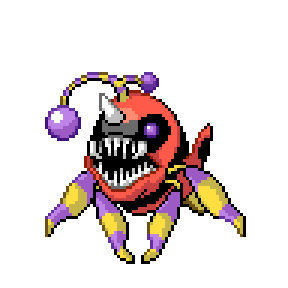
Arialord occasionally comes up from its dark undersea dwelling to go on land and rest near forests and let Spinarak climb atop it. It then ferries the small spiders off to a new home before returning to the sea.

Ariaoom's body over-produces its poisons and silk, to the point it overflows from various points of its body. This, combined with its potent stench, makes it very difficult for it to socialize with others, making it lonesome.
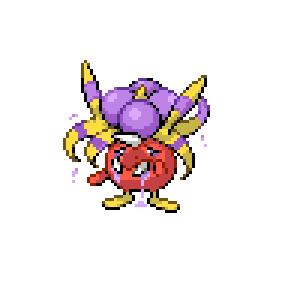
Ariachamp weaves webs quickly mid-battle to reel distant foes back into grappling distance. It waves champion belts made of tightly-woven webbing to give to those who give it a suitable challenge.

It spins haphazardly-shaped webs to catch prey in, but by the time something is caught in the web, Ariapoke has forgotten about the hunt. It usually plays with the caught creature for a few minutes before releasing it.

Croking's arm strength is great enough that only a single flap is needed to take off from the ground. It glides from region to region, depriving entire forests of their fruits and berries.

Pidgefree appoints itself as a guardian of its home forest. It protects Caterpie and Weedle families by swooping down to peck and claw at would-be hunters.

Pidgeto oozes its way up tall trees to hunt for prey from the canopy. It flaps its wings to send goop-like feathers onto targeted prey, which slows them enough for Pidgeto to hunt them down.
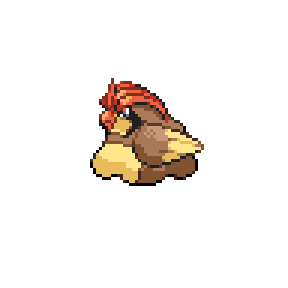
Chinco is protective of small insects, flashing its light to attract them at night so they will flock to it and remain safe. Anything that tries to hunt the bugs will be zapped by lightning.
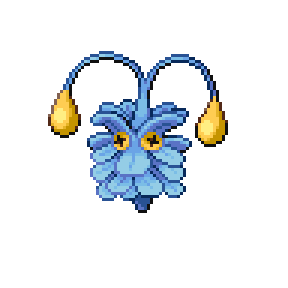
The bulb on Chinpardos's head glows brightly when it is preparing to charge at something. Though soft to the touch, upon impact the bulb releases a powerful electric burst of stored energy.

Before it teleports, Chinra's tail glows bright and releases a blinding flash to help aid it in escaping predators. Faint bits of electricity can be seen coursing over its body after it teleports.

There have been many a story of Trainers lost in caverns being rescued by Lantres. Illuminating a path with the orb on its head, it carries them safely to the nearest exit, before leaving in a bright flash of light.

Lanbull flashes the orbs on its head brightly when frightened, blinding and stunning potential foes. It has a very jumpy personality, so it often ends up flashing those who mean it no ill will.

Do not be fooled by Lanedo's comical appearance, for it belies a conniving undersea hunter. It stuns prey with painfully bright flashes from its lure, leaving them helpless to avoid its razor-sharp teeth.

Its electrical capability is strong, but its body lacks the strength to properly contain it. As such, its body has shattered, loosely connected to and covering its electrical core while puffing out small storm clouds.
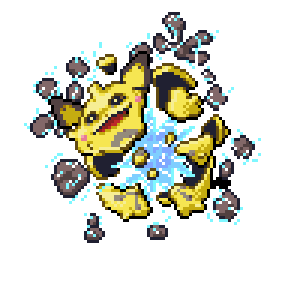
A few obscure records from Johto's distant past describe creatures similar to Pichu. Research is being done to determine if Pichu once looked like this in the past, or if the records are of a now-extinct relative.

Spoiled and petulant, Pirow will inevitably throw tantrums if it doesn't get its way. It screeches and flaps its wings, sending out electric sparks all around it until it calms down.
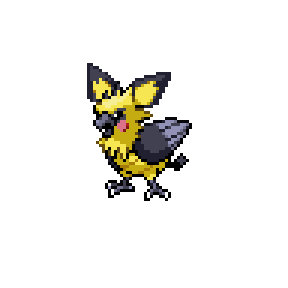
Clefpip has a very exploratory nature, using the evening breeze to carry it to parts unknown to explore. When traveling in groups, Clefpip link hands and perform aerial dances together.

Clefdreavus's necklace appears to be made of lunar stone, making it highly valuable. Would-be poachers should beware, however, as it also allows it to channel moonlight into powerful beams of energy to defend itself.

Igglyvee's body appears fluffy, but is entirely soft and pliable, bouncy like rubber. It actively enjoys playing by being thrown from one person to another like a game of catch.
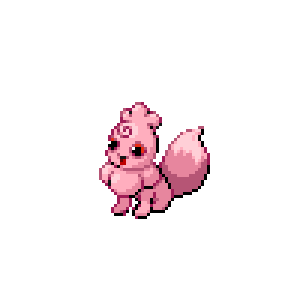
Igglychu likes to put on small concerts for its friends, singing chipper high-pitched songs to all who would listen. It creates a small shower of colorful sparks above it for the finale.

It likes to bury itself in the soft and mushy soil in moist, lush forests. It eats its way out of the ground, and then sings in delightful appreciation of its meal.

It drags along the remaining bones of a fallen Togekiss with it and can only sleep soundly while laying near the old bones. Some think the Togekiss spirit still lingers and grants Togebone small comforts during sleep.

Togetung adores the taste of eggs, slurping up any egg-based dishes it can. It consumes so much, even its saliva has taken a consistency and odor similar to that of egg yolk.

Togegey is a bit of a spoiled brat in behavior. In the wild it invades nests and rests next to the eggs, insisting the parents pamper it as if it were their child.

Togebuff likes to leap out of its shell and streak around during bursts of playful hyperactivity. It will always wish to return to its shell and sleep in it once it gets tired.
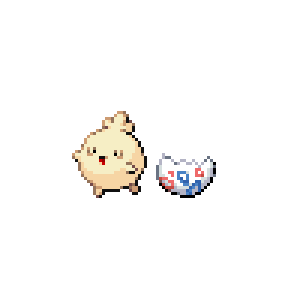
Once a month, Togeco sheds the colored plates on its body in order to grow new ones. These plates are said to bring good luck, so accessories made of them are in relatively high demand.
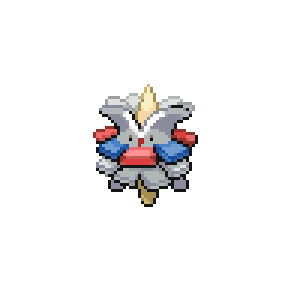
Togenub's sense of smell is so acute that it can detect fluctuations in emotions by scent alone. It sidles up to those that are feeling sad and nuzzles them to bring them some comfort.

Togechum feels a compulsion to follow after anything it senses exuding joy or excitement. Togechum parents and Trainers alike find themselves working hard to keep it from running off constantly.

Rarely seen and with few verified records of it in history, Togekiss is said to be the embodiment of joy and innocence itself. Those who gaze upon its form will feel all aggression and negative emotions drain from their minds.

Togefeon sheds the pale leafy parts of its body monthly. Insects and other small creatures will gather the shed leaves to help make nests, which seem to foster better health in young reared within said nests.
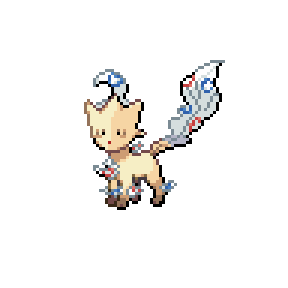
Though the blade is many times larger than the body, Togedge wields it with surprising ease and agility. A popular children's show starring Togedge is currently entering its fourth season.

Said to only grant wishes to pure-hearted children, Togerachi is a popular figure in nursery rhymes. A child that gazes into its third eye will know nothing but happiness for the rest of their days.
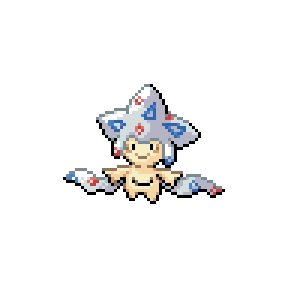
Despite looking similar to an eggshell, Togelgon's body is highly sturdy and resistant to blows. It has no natural predators, so it has a very curious personality and approaches strangers without a care.

Togeloon is a popular gift presented to game winners at carnivals. It's said that no child is unhappy if they're holding a Togeloon's strings, and vice-versa.

Togepet often appears floating around the cribs of newborns at night. Unlike many other ghostly Pokémon, its presence is welcomed; many believe it only haunts near children destined to grow up happy and healthy.
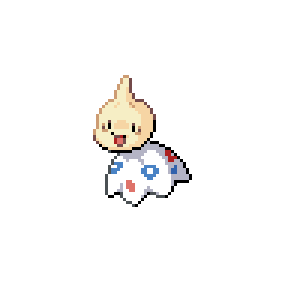
Though blind, Togebat can sense the hearts of others nearby, whether wicked or kind. It only bites and draws blood from those it deems as possessing a wicked heart.
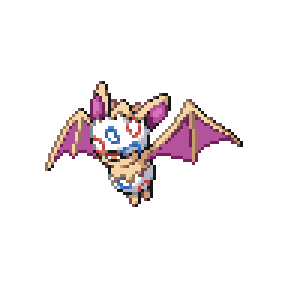
When confronted with negative emotions, Togerunt tightens its cloak around it and hides itself from the world. The cloak emanates a faint calming aura during this time that alleviates stress and aggression in those nearby.

Togeish can be found prancing through blooming flower fields, chirping happy little tunes. It flicks pollen from its leaves at those it deems good souls; inhaling it brings calm and joy for hours.
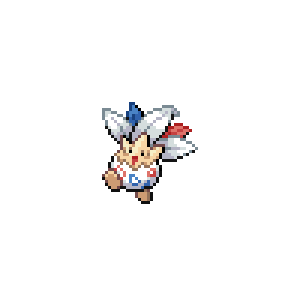
Togecorio is reclusive and shy, but can be seen quietly approaching wakes for the deceased. Its slow and careful dance moves are said to soothe the minds of the grieving, as well as the soul of the recently-departed.

Togegast enjoys playing with young children at the beach, forming shapes together with its sandy body. Touching the shell-like top of its head will cause it to instinctively fling sand and run away, however.

Togeth has a simple mind that equates money with joy. To spread that joy around, it collects any and all shiny coins it finds and gifts them to others.

Togeby innocently pokes and prods at any litter it comes across while roaming the beach shores. It seems particularly intrigued by egg shell shards from the occasional abandoned nest.
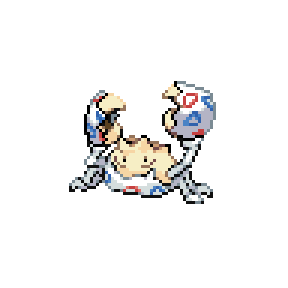
Togeras is rarely seen in the wild, supposedly only appearing before people with kind and pure hearts. It's noted for singing while it swims, a soft melody that soothes the hearts of those who manage to hear it.

Togepi flies over groups of people, intent on spreading joy to others however it can. This usually takes the form of fluttering over to someone and clinging to them in a friendly hug.

Togerantis is a kind and gentle creature that thrives in the presence of positive emotions. Its friendly demeanor and vibrant coloring see it often employed as assistants and guides at circuses, fairs and other attractions.

It's speculated that about 10 percent of murals found on ancient Hoenn ruins were painted by Nagle. Whether the art has deeper meaning or is simply ancient graffiti has yet to be determined.

Once a week, Namander gathers sticks together to light up with its flames and gaze into the smoke it creates. Some say it's attempting to discern future events through the smoke's shapes.
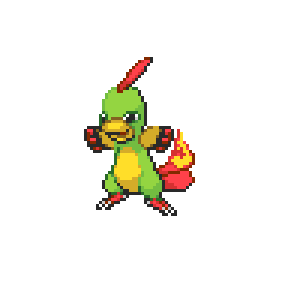
Nalucha perches on tree limbs and observes fights from afar with its strong eyesight, cataloging the moves of different Pokémon. Pokémon often come to seek its advice on how to counter the techniques it has witnessed.

Nabra spends much of the day staying still with its arms crossed in contemplation. Occasionally it stares into its reflection in its spoon, but what it ascertains from this is unknown.

Naduo are a very observant species, making sure that one head is always taking in their surroundings. Some domesticated Naduo can even draw detailed maps of the areas surrounding their home.
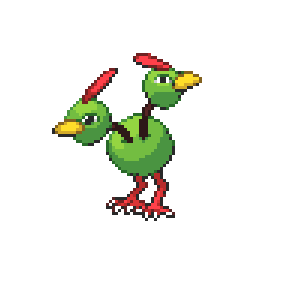
Xalade's movements in battle are so careful and calculated that many believe it gazes into the future to see how its opponent will fight, and moves according to that vision.
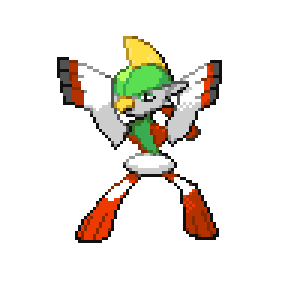
Xaveon is seen as a symbol of hope in some regions. Coming into contact with its ribbons is said to instill visions of a happy future, inspiring people to work towards making it a reality.
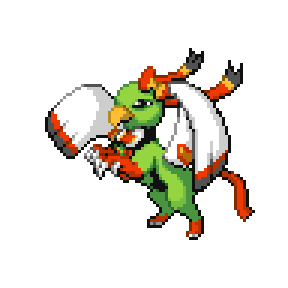
It rubs its woolly palms together to gather immense amounts of static electricity, creating powerful orbs of lightning to hurl at foes. The orb on its tail can emit powerful stunning psychic pulses to further incapacitate opponents.

A domesticated Maret's favorite thing is having its belly rubbed, but owners should be careful; rubbing too fast stirs up the electricity in its fur and could lead to a sharp little shock to their hand.

Feathers shed by Marow retain faint electricity gathered from rubbing against its wool. These feathers are a popular novelty quill, as ink written with them will glow in the dark for a few days.
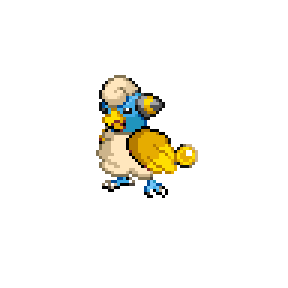
Mans coils up in its own fluffy wool to stay warm. If agitated it will shake its tail furiously, flickering a bright light to blind the nuisance and give Mans time to slither away.

In the wild, rival Matler will attempt to cow the other to submission via displays of electric power. The one who can create the larger arc of antler-shaped lightning above their head is considered superior.

It rubs the wool on its body vigorously before a battle or hunt. The static charge this creates internally coats its extendable tongue in electricity, allowing it to shock foes or prey into submission.
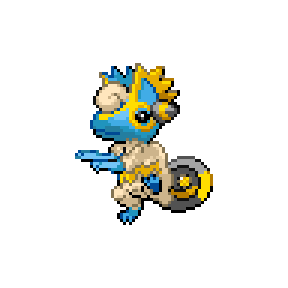
As Matias zips through the air at high speeds, it leaves a trail of static electricity from its wool behind. If multiple Matias fly together, their trails may intersect and cause a dazzling array of sparks to erupt.

After every twelve rotations of the gear a small burst of electrically-charged wool particles bursts out from Mang. The particles are harmless, only causing an hour of ticklish tingling sensations.
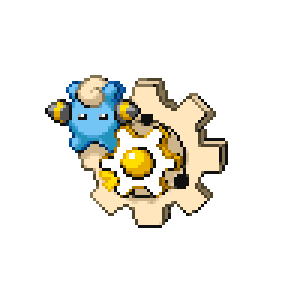
As Malucha swings its fluffy wings about during pre-fight poses, small electrical discharges burst out and add to the flair. The orb on its torso glows brightest during its victory pose.

If static electricity builds up too much within Maduck's fur, it develops strong migraines. Periodic controlled discharges and regular shearing will ensure a healthy, happy Maduck.

Pidsea cuts through the water at blistering speeds, making it a fierce hunter. By blinding prey through quick movements and spreading ink around, it can take down fish much larger than it in mere seconds.

Some ancient ruins depict murals of Pidzone, revering it as some type of guardian deity. It fires magnetically charged feathers that can move independently and strike multiple targets.

Pidfeon's glossy mane lets it soak up a maximum amount of sunlight for photosynthesis. In battle, it vigorously flaps its wings to shed razor-sharp leaf-like feathers propelled by the gusts of wind it creates.
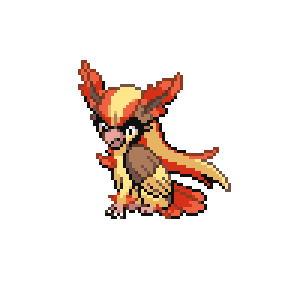
It takes pride in the glossy length of feathers extending from its head. Anything touching these feathers will quickly send Pidkey into a flapping, screeching frenzy.

Orphaned Mareep are under Flaakhan's protection, carried safely within its pouch. Electricity stored in the orb on its tail can be discharged at any time in protection of its child.
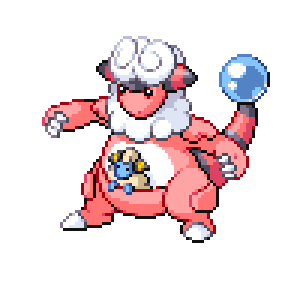
Flaakoal can use its electric powers to shine bright beams of light from its tail or certain spots of its shell. Some venues paint over these spots to color the beams and have Flaakoal create vibrant light shows.
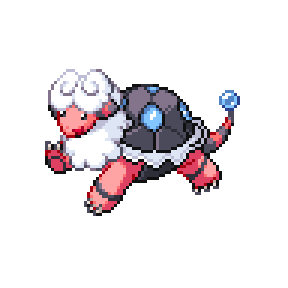
When Amphanyte meet at the sea floor, they communicate by flashing the orbs in their shells at each other. Mass gatherings of Amphanyte can cause glows of light visible even above the water's surface.
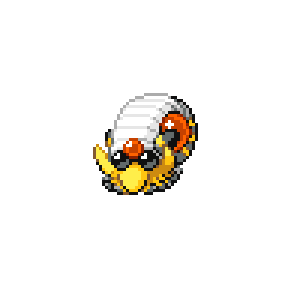
Amphathorn's three orbs can all glow with extremely bright light. If active simultaneously, its light can dispel darkness for miles around, making the darkest night seem like the brightest day.

To Bellee, combat and dancing are the same, and both must be tackled with skill and grace. It practices its movements constantly so that every movement in or out of battle is practiced and perfected.

Belluna hides among groups of Bellossom as camouflage to protect itself from predators. It can be identified among the crowd as the only "Bellossom" not dancing.

Some ancient civilizations appear to have made offerings to Belltu in exchange for its dances, said to bring good fortune. If it refused an offering, it was considered a sign of looming disaster.

The hollow clacking of Bellzor's coconut-like pincers serves as its own rhythmic backdrop for its dances, unique to each individual. Its music and moves have inspired several famous songs and dances in media.
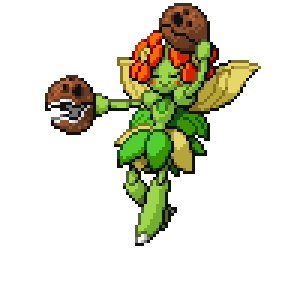
The first recorded sighting of Machu was reported in a remote part of Kanto. It was originally thought to be a strange unseen evolution of Pikachu before further research confirmed otherwise.
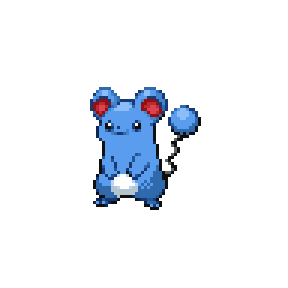
When it snoozes deep in the forest, other smaller Pokémon nest or feed among Sudohorn's foliage. Its resilient hide means it doesn't even notice the extra company most times.

Young Bonsly are allowed to ride in Sudosey's pouch to feel safe and content. Though Sudosey tends to stay perfectly still, anyone approaching the child aggressively will find themselves slapped rather hard and suddenly.

Though it prefers to spend time standing as still, Sudokhan possesses strong parental instincts towards Bonsly. Those agitating the children find themselves struck hard from behind, yet Sudokhan appears to never have moved...

Rather than remaining rigid like Sudowoodo, Sudomime mimics realistic tree motions such as swaying with the breeze and seasonal color changes. It still has trouble convincing onlookers it is a tree, however.
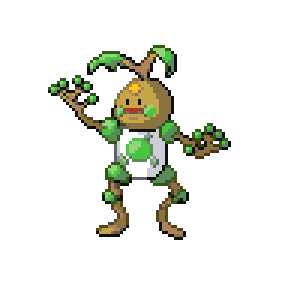
Sudother tries to remain stationary most of its life, but the orbs growing on its limbs have a sweet scent and taste that attracts insects. It often has to shake the bugs off and relocate several times a week.

It has a placid personality, seeking to avoid conflict and indeed most interactions with others outside its species. It spends much time trying to pose in ways that make it look perfectly symmetrical, but fails often.

Sudotress floats through sparse forests and spins rapidly, launching large green seeds into the dirt around it. These seeds grow into mighty, sturdy trees later.

Parks and reserves employ Sudoring as mascots and guides. They stand completely still, but if a person asks directions and then looks away, when they glance back Sudoring's arms will point them to their destination.

The orbs on its antlers are attuned to wind and weather, letting it know when precipitation is imminent so it can seek shelter. Like a Sawsbuck, these orbs change color with the season.

Due to its ability to change color, Sudoeon can more easily blend in with its surroundings and the changing seasons. This causes it to gain the ire of jealous Sudowoodo in the wild.

Its coloration allows it to hide well amongst the trees of its home, to better let it hunt prey suddenly and efficiently. Between its camouflage and high-speed hunting, few have actually seen a wild Sudojask in motion.

Although Sudopix likes to remain motionless as long as possible, its many tails move instinctively on their own. When under attack, the orbs at the ends will ignite and fling scalding fire at any aggressors.
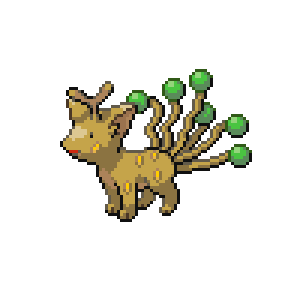
Sudoroth wishes to mimic trees, but contains far too much pent-up energy to remain still for long. When it tries to stand motionless, visible strain can be seen in its eyes before it gives up and runs around wildly.
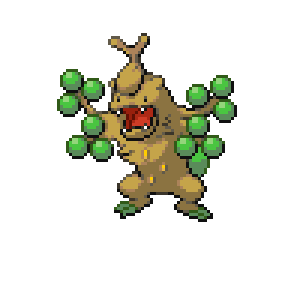
The main body has poor eyesight, so Sudoduo uses the functional eyes on each green segment of its hands to better survey its surroundings. It goes through a variety of odd poses in order to maximize surveillance.
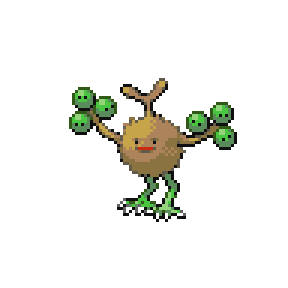
Polibish opens its mouth to let the stinky aroma of its insides attract flies and other insects. Once enough gather, it lashes out its tongue, made of garbage, and snatches up a meal of bugs.
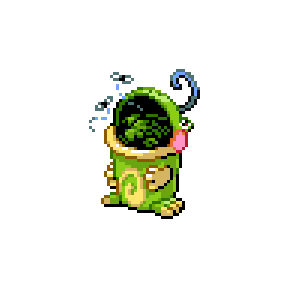
Poligoo is very proud of the curl on its head, meticulously preening it to just the right shape. It will cry for hours if something causes it to become dirty or disheveled.

The lightweight eggs bundle together to avoid being blown away by strong winds. The one that grows leaves upon its head is the de facto leader of the group.
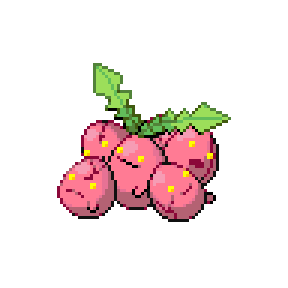
Hopgey is often found accompanying groups of Hoppip floating across the breeze. It helps the Hoppip's journey by flapping its wings to adjust their flight paths.

Its body is very attuned to the breeze, small fluctuations letting it know when predators may be around on the hunt. Because of this, Hoptata rarely leaves its burrow on days with little to no wind.

With almost nonexistent wings, Hopkrow flies by being carried some distance by the wind. Groups of Hopkrow often congregate near fountains, attracted by the water and the coins tossed within.

Hoprow is usually found pecking at the grass in open fields, searching for seeds to eat. As it flies, it sheds feather-like leaves that are used by some to sweeten the taste of their tea.
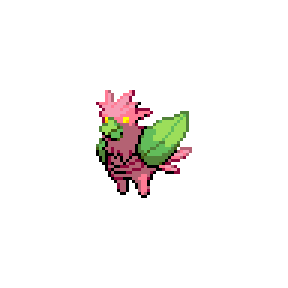
Once a month, Hopans sheds the leaves on its tail and grows a new set the next day. These leaves are used to brew a tea that has become fairly popular in northern Kanto areas.

Hopvoir adores the sensation of a warm and gentle summer breeze. Using its psychic powers, it levitates itself and lets the wind carry its lightweight body about.
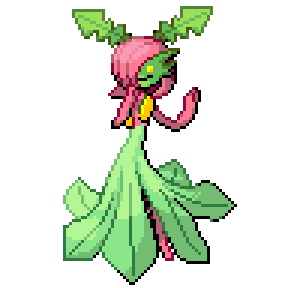
Hoprith is often found wading in the shallows of tropical islands, absorbing light for sustenance. Its bright coloration is a warning to predators, as tasting it will make most aquatic Pokémon ill.

Hopsis's bubble-like coating is easily popped, but splatters a sticky coating of goo when it does. It regenerates this coating instantly and floats away while the bubble-popper is slowed by the goop.

Hopdisc lives in placid waters, as its weak swimming muscles and light body makes it easily swept up by any current. If it leaps out of the water, it may even be carried away by a strong breeze.
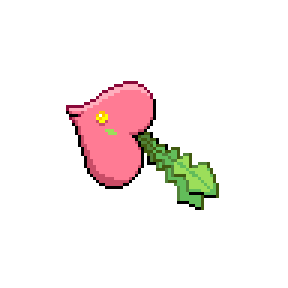
It pulls off and consumes its own leaves to help soothe its aching head. It's only a curative for Hopduck, however; others consuming its leaves will develop a strong headache instead.

Hopkey spends most of its time digging in soft dirt for seeds and roots to chew on. The leaves shed from its tail can be ground up for medicinal powder, but the powder is extremely bitter to taste.

Hopter dutifully tends to small gardens at night, arranging plants to help them best gather sunlight in the morning. It gently brushes aside those that get in its way, often accidentally spooking them with its sudden ethereal touch.

Skiptung slumbers in dormancy whenever the temperature cools down. Once it warms up, it awakens to seek out flowers, licking the pollen off of them to last it through its next hibernation.
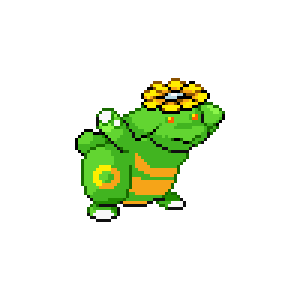
Despite its immense size and strength, Skipgigas is one of the gentlest of giants. It meticulously and carefully tends to gardens of flowers in the wild, and faintly hums in joy when it feels the breeze against its body.

A pleasant aroma is emitted from Skipmantis's flower, so long as the temperature of its surroundings remains warm enough. If the temperature around it drops too low, the smell turns foul.
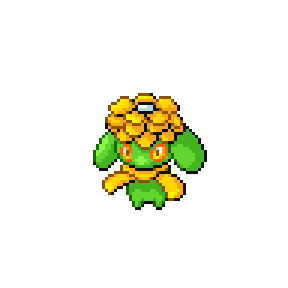
Jumpzing is always seen floating around in something of a daze. It's not immune to its own pollen flow, so its allergies leave its heads constantly feeling heavy and stuffy.
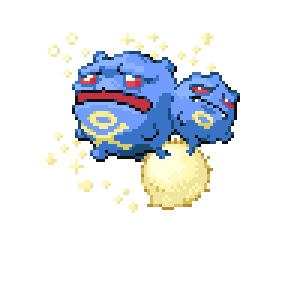
Jumpicate has a frightening appearance, but only eats bark and is incredibly skittish. Its only means of defense is spraying pollen from its head, hands and tail to blind and agitate predators while it runs away.
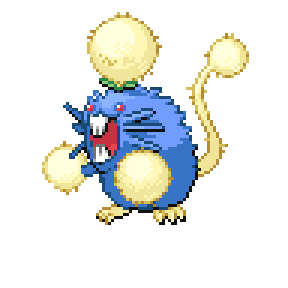
Jumpgle runs about in verdant fields, using the fluff on its head and tail to let pollen scatter in the winds. It has been discovered that the blooming flowers from its actions create vast works of art when viewed from above.
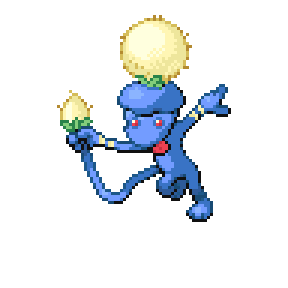
Despite its large size, Jumpbok is a very timid Pokémon that runs at the first sign of trouble. If cornered, it smacks an opponent with the fluff on its tail, spreading pollen to agitate the attacker's vision so Jumpbok can escape.
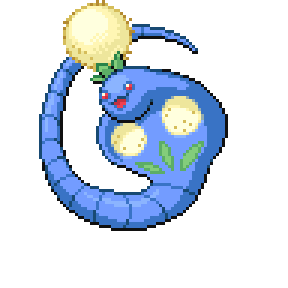
Jumplicky promotes the growth of nectar-rich flowers with the pollen it shakes from its hands. When they run out, it restocks them by regurgitating lumps of pollen produced from within its rotund belly.
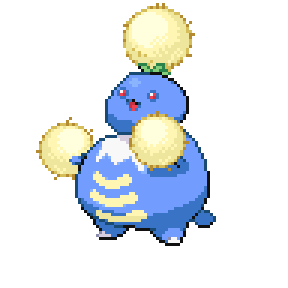
Jumpmer's underside is covered with layers of fluffy waterproof pollen. On sunny, windy days, it floats upside-down on the water's surface to let the breeze carry the pollen off to distant lands.
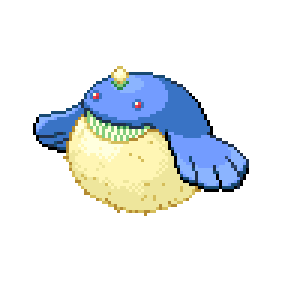
Jumpang is deceptively heavy, as its cotton-puff exterior covers heavy metal body parts. This sometimes causes issues when a happy Jumpang launches from the gear to hug its Trainer.
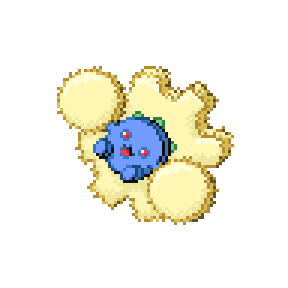
A common household pest, Ratdle chews its way into garbage cans to get to the discarded foodstuffs within. It's poison stinger on its head will cause a minor rash if stung by it.

When in danger, Rateon's fur bristles out as it prepares to fire needles of electricity in defense. It enjoys chewing on electrical wiring, so urban areas consider it a bit of a pest.
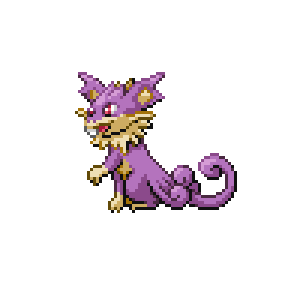
The bright light that emanates from Ratros's tail will compel Rattata within a mile of its location to head to the light's source. This works quite handily as a grand-scale method of pest control.

Ratank enjoys nursing and nurturing Rattata with its milk. Though a kind gesture, most owners don't appreciate the increased rodent problem this creates as Ratank gets attached to its new family.

Ratking seeks out Rattata colonies so it can bully and beat its way into leadership. Once hierarchy is established, it lazes around while the browbeaten Rattata gather food for it.

Rattata flock to Ratram on instinct if they sense its presence, looking up to it and following its commands. Ratram has an honest and honorable personality, so its influence makes the Rattata more well-behaved.
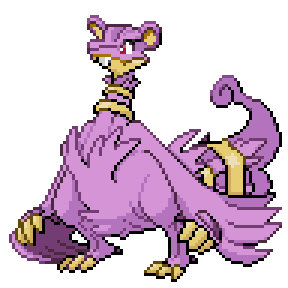
Ratik inadvertently lets out a bit of electricity every time it bites down on something. Though relatively harmless, enough playful or loving nips to a friend can cause uncomfortable tingling.

Aichu's tail appears to hold a lightning bolt–shaped object of great electrical power. It wields it akin to a spear, jabbing at opponents and firing electric bolts from the tip.
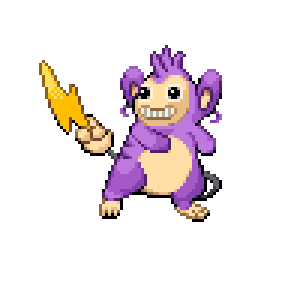
What appear to be Airade's fingers are actually retracted thorny whips it hides from view. Those that underestimate it will find it able to lash out with spiked vines with deadly precision.
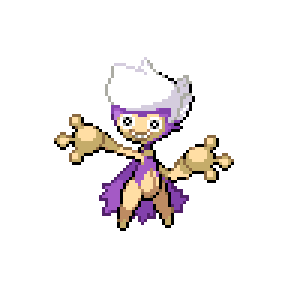
To save energy in order to hasten evolution, Sungey rarely takes to the air and flies. It huddles together in small groups, eating nuts, berries and pine cones that fall from trees.
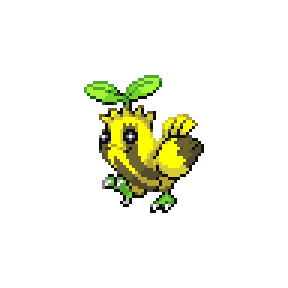
A timid sort, Suneon only comes up from underground during the early mornings to take in sunlight. On windy mornings, it extends its leaf-like tongue out as well in order to catch pollen carried by the breeze.

Sunram only comes out in the early morning, to bask in the first rays of the sunrise for nourishment. As it photosynthesizes, it radiates a strong warmth around it that evaporates the morning dew.

Sundew chews on small plants to gain additional nutrients separate from its photosynthesis. Once it finishes eating, its bud opens up and spreads pollen that will aid plant growth in the area.

Sunkey owners are recommended to let it absorb as much morning sunlight as possible, as the solar rays keep its temper even for the day; too little light and it will throw tantrums all throughout the evening.

Sunbra carefully picks out prime spots to dig holes for it to place flowers and other plants into. Once planted, it stimulates the flower with its psychic powers to nurture it and help improve its future growth.

The more sunlight Suntle absorbs in the morning, the more clear and refreshing the water it produces is. It enjoys spending the afternoon tending to any plants that need nourishment.
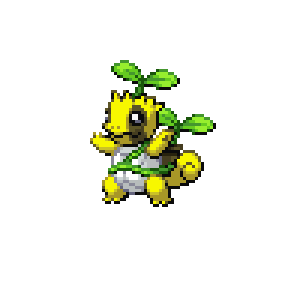
Sharing sunlight as they absorb it means every flower head on Suncute is always as vibrant and jubilant as the rest. Gifting someone a Suncute is considered a romantic gesture in some island regions.

The upper part of Sunpod's cocoon absorbs sunlight to fuel and hasten the evolution process. Once complete, its evolution will burst from the cocoon in an eruption of bright sunlight.

Sunkhan constantly seeks the freshest soil to fill its pouch for the sake of its child's development. Solar energy the parent absorbs will naturally filter to said soil and then be absorbed by its young.

Sundeen pokes above the water's surface and spits streams of water at the ground nearby, hoping to help plant life grow. Sundeen is at its happiest when its home is surrounded by blooming flowers.
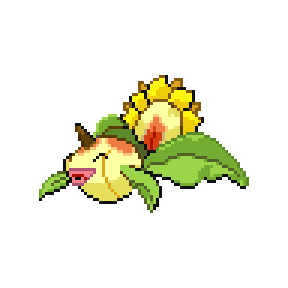
Sunmar absorbs sunlight and fire in equal measure for energy, the mark on its torso glowing as it does so. It can fire flames from this mark, or from the petals circling its face.

Sunros enjoys wide open, sunlit fields to run around in, and maintains a relatively easy disposition among humans. The only time it gets aggressive is when butting heads over a prime spot for absorbing sunlight with a rival Sunros.

Sunbat flies up high for most of the day, absorbing sunlight into its four wings. Once it has absorbed enough, it can shine the petals on its wings brightly and share the sunlight with flowers.
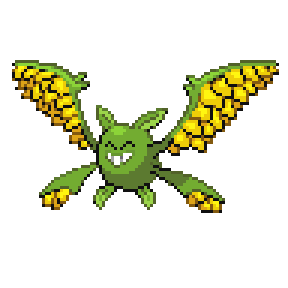
The main body tries to be serious, while the Sunflora on its back is always smiling and chipper as it absorbs sunlight. Often the Sunflora will prod and poke the body in order to get it to crack a smile, which it rarely does.

Suncross bounds about in sunny groves, smearing sap from one tree to the next to share it with others. It detests using its horn in self-defense, as it messes up the arrangement of leaves surrounding it.

Sunbok is a very jubilant serpent Pokémon always searching for heat sources, particularly sunlight. When sunlight is not easily available, it will coil around nearby people or Pokémon, embracing them tightly to share in their warmth.
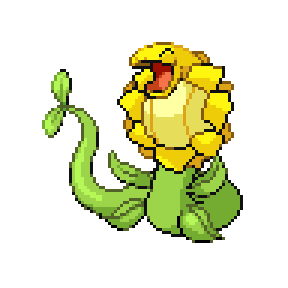
Sunitar are most often seen outside their mountain dwellings, absorbing massive amounts of sunlight. Many carve holes in the walls of the mountains so that even within the caverns, there are still spots to bask in the sun's rays.

Sunchu's happy disposition and adorable features have garnered it quite a positive reputation among pet owners. Some regions even hold beauty competitions solely featuring Sunchu.

Sunwile uses the false flower on the back of its head to lure in unsuspecting insect Pokémon near. The flower expels a stunning poison on the victim, leaving them helpless to resist becoming Sunwile's prey.

Though quite powerful, Sunking are friendly and docile, spending their days lazing among verdant flowerbeds. Being offered one of their shed petals is considered a sign of a prosperous future in some regions.

The high amounts of sunlight it absorbs during the day allows it to continue to be extremely active during the night as well. A sleeping Sunroth is one that has been dangerously deprived of sunlight.

This duo of Sunflora and Oddish delight in each other's company; Sunish is never seen without a smile on both faces. They march together beneath the sunlight, singing a happy duet together.
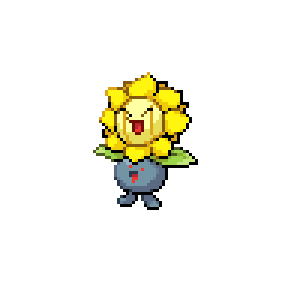
Sunlucha loves to strike poses dramatically with the sun behind it before leaping into battle. The more it is allowed to bask in the sun before a fight, the more bombastic its moves become.

It tries to remain in sunlight for as long as possible. This is because it begins suffering intense headaches the moment it no longer feels sunlight on its skin.

This Pokémon lazes by sunny riverbeds, happily swirling its tail in the water and taking in the sunlight. Some have described it as being the pinnacle of blissful ignorance.
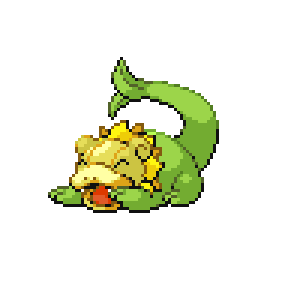
It runs across the land at high speeds during the day, keeping its heads in the sunlight for as long as possible. Only when the sun is hidden does it finally stop moving and rest, until it detects the next ray of sunshine.

With 360-degree vision, those that try to sneak up on Yanto will find it transforming to defend itself before they even get close. It typically excludes changing its eyes during transformation, so that it may retain its vision as a precaution.
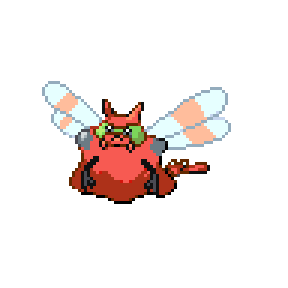
Despite its developing body being restrained by its cocoon, Yanuna can still actively avoid danger thanks to its light weight and strong wings. Its wings never stop moving until evolution is finished.
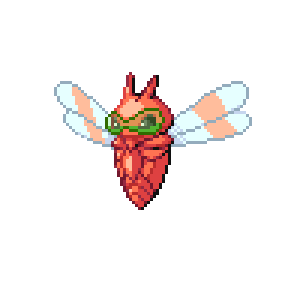
Quick fliers with superb senses of sight and hearing, Yantata are experts at stealing food. One need only look away for a moment, and it will have snatched a new meal from them with hardly a sound.
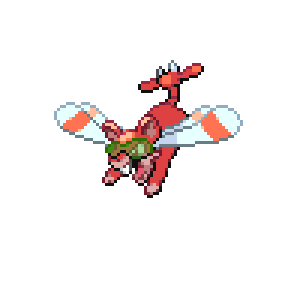
Courageous little thrill-seekers, Yansel enjoy pushing the limits of what their aerial capabilities can do. A favored exercise is leaping from tall mountains and free-falling to see how close they can come to impact before flying off.
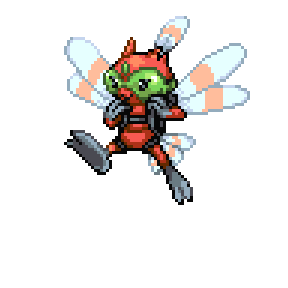
With 360 degree vision, ultrasonic waves for detection and precision flying capabilities, it is near impossible for prey to avoid Yanbat hunting them, nor for a predator to sneak up on Yanbat.
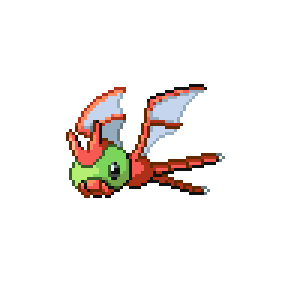
Yantle can run across the ground at high speeds before retreating into its shell and crashing full-force into opponents. After knocking a foe down this way, it always makes sure to pose and adjust its "glasses" in a cool manner.
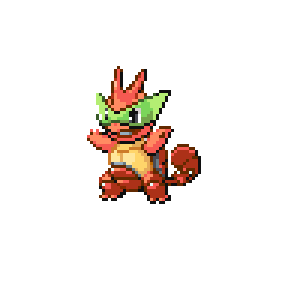
Yanfetchd swoops at a target from above, smacking it with its leek before retreating to wait for another chance to strike. As it has weak defenses, these hit-and-run tactics are its best bet for successful hunts.
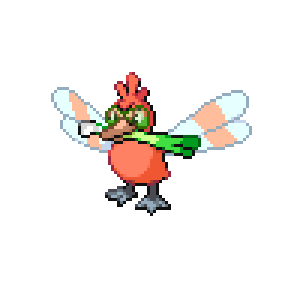
The pendulum Yano carries is actually a mere distraction, meant to keep a target's focus occupied. The actual hypnotic effect it wields comes from the strange hum it emanates with its rapid wingbeat.

Woolax are often seen close to or within human populations, following the people within in hopes of gaining food from them. With their cute face and simple demeanor, most Trainers can't help but give them the treats they seek.

Wookoth spends most of its time in the wild lingering around muddy areas. It scoops up mud to smear on itself to keep cool, and feeds by lazily picking at bugs and worms that scurry by.
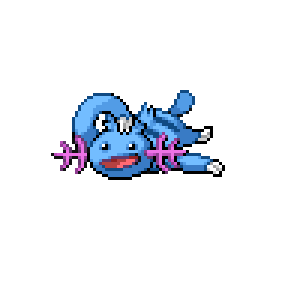
Simpleminded creatures that live around forest lakes and ponds, Woovenant spends much of its time keeping the waters clean of detritus. It takes fruit from nearby trees to share with the Pokémon that live in the water.
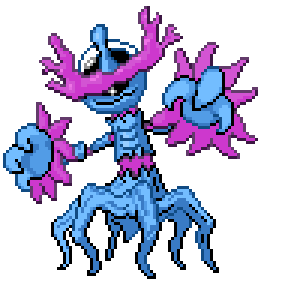
Wooful enjoys soaking in water, so much that its owners should take precautions; if Wooful senses someone taking a shower or bath, it will barge in unexpectedly in order to join them.
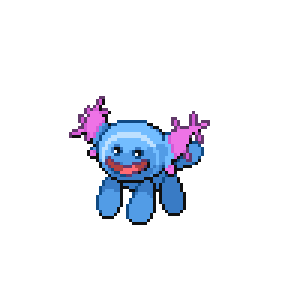
Docile and simplistic to an extreme degree, Woopoke "hunts" by floating along the rivers with its mouth open and half-submerged, hoping something will float into its waiting maw.

When elated, Quagmory prances around and happily flails its wings around, scattering its grimy feathers around. These dissolve into the ground over time and help nurture the mud and soil.

It defends smaller Pokémon on instinct, but its simple mind holds no ill will towards aggressors either. Those that are halted by ramming into its solid skull wind up getting a friendly lick from Quagdon.
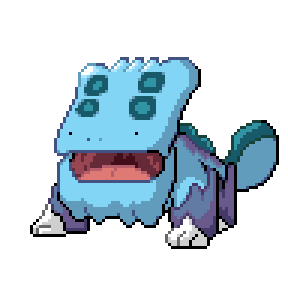
In the early days of first discovering Quagsol, it was thought that the slapping of its tail against the ground was play behavior. It's since been discovered it's actually an attempt to communicate and warn of impending disasters.
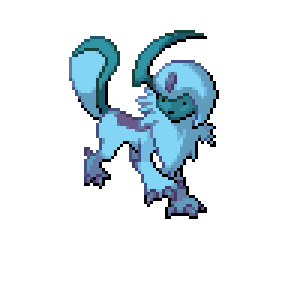
Quagpass loves to entertain others, particularly young Pokémon. Its signature act has it spurting water from its head and causing its "hat" to fly off and fall back on it, pretending to be knocked out by the impact.

The twin water-like limbs of Quagrachi give it a long reach to touch and curiously explore its surroundings. These limbs can purify small bodies of water, turning them fresh and crystal-clear in an instant.
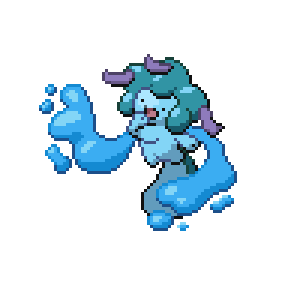
Quagfisk flattens itself out as much as possible and waits until something comes along and treads upon it. Once something does, it lets out a joyful cry, as it treats being stepped on like winning a game.

In the water, Quagdash is an almost peerless swimmer in speed and agility. On land, however, its gait is slow and clumsy, constantly tripping over itself and flopping onto the ground.
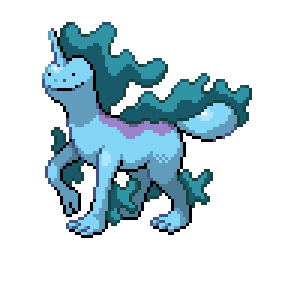
Every sunny morning, Esplia dances near its Trainer to wake them up bright and early. The jewel on its head shines and transfers a psychic energy to ensure they wake up feeling rested rather than groggy.

Each of Espelia's flower-hands holds an orb of great psychic potential. In the early morning hours, these orbs are at their strongest, and can float and operate independently of Espelia to aid it in combat.
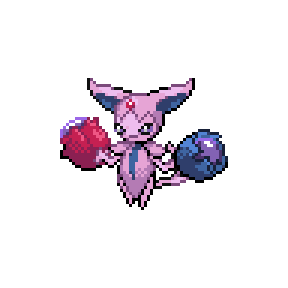
Umbeon spends most of the day residing underwater, only coming onto land after nightfall. The frill around its neck absorbs moonlight for sustenance, its rings glowing brightly as it does so.

Umbring only comes out of its den to forage during the darkest part of the night. In even the faintest of moonlight, the markings on its body will glow in the darkness.
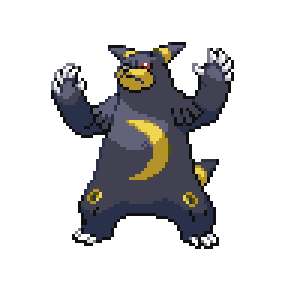
Umbtei uses moonlight to enhance the power of its flames. Its rings glow bright when fully charged with moonlight, and the fire it breathes out takes on a bright silvery hue.
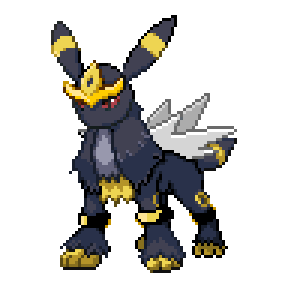
On moonlit nights, it casts up rings made of psychic energy, leaping through them as part of an intricate dance routine. The rings on its own body glow their brightest during this time.
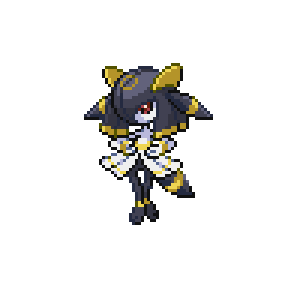
Umblord is most active at night, cutting through the sea rapidly and hunting small fish. When it breaches the water's surface, its rings glow brightly as they absorb the moonlight.

Umbra is able to cast illusions with its mental powers, making it seem to blend in with the shadows around it. It's said that its psychic capacity triples during nights of the full moon.

Travelers are encouraged to keep a close eye on their valuables in Murak territory. The kleptomaniac Pokémon is very adept at shooting webs from a distance in order to yank away small trinkets.
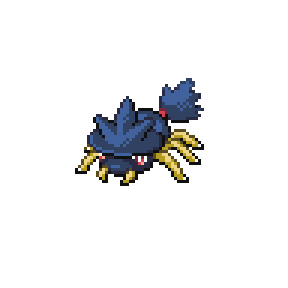
Murpi is magnanimous and well-meaning, but has little understanding of personal property. It often causes issue by stealing things from strangers to give to those it cherishes.
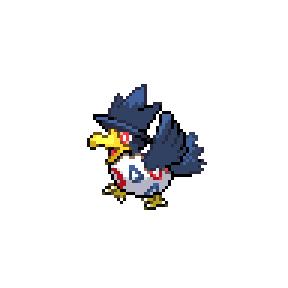
Murgon-Z's head floats around in front of a person's face, squawking and chirping to annoy them. While the person is distracted by this, the body swipes away any personal items it can.
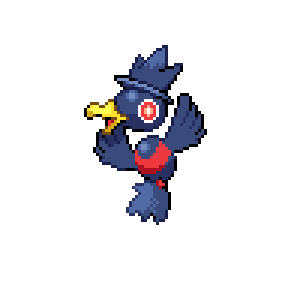
It reaches towards anything shiny in its vicinity, but moves far too sluggishly to actually steal anything. Some travelers find it endearing, and allow it to take something inconsequential out of pity.
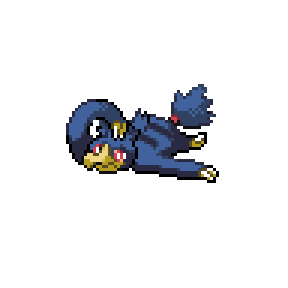
To aid in thievery, Murua will use illusions to mask itself as a familiar face before taking the item it covets and running. It returns to normal, then watches with glee as the one it mimicked takes the blame for its crime.
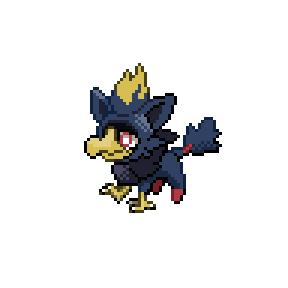
Murmander tries to be intimidating, but often picks targets unfazed by its displays. When its victim doesn't run away scared, it panics and turns tail itself, smacking its flaming tail against its target to discourage pursuit.
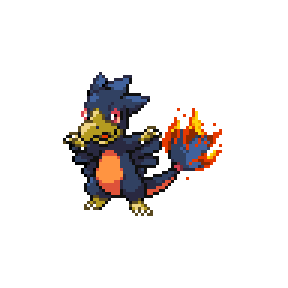
Murish is a bit of a farmland pest: it likes to dig up planted seeds and bury them in other random spots, which causes chaos among the carefully-plotted crops most farms tend to keep.
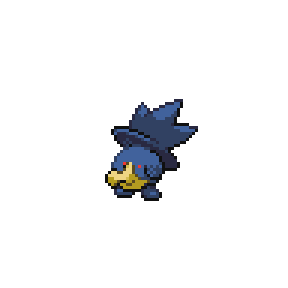
A popular children's cartoon casts Murduck as the villain's main henchman. In it, it dutifully follows orders, but the plans always backfire when its headaches cause its magic powers to go haywire.

Considered a bit of a thug, Murkey is disliked due to its greedy tendencies. If it spots something shiny it likes, it will take it by force, battering the owner fiercely until they're forced to give up their possessions.
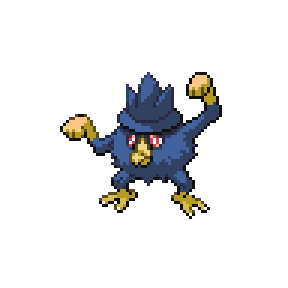
Slowkhan lets the child in its pouch wear the crown, enhancing the infant's intellect. This may leave Slowkhan's mind dull and sluggish, but it never forgets to love and cherish its young.
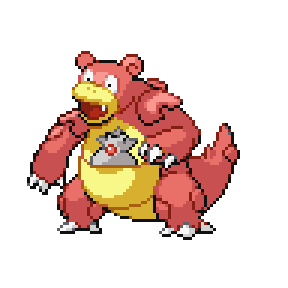
Slowras's mind is strong enough to communicate telepathically with the humans it carries across water. During these ferries, it offers words of compassion and kindness to soothe troubled minds.

Fusion has increased its intellect greatly, but has also caused it to become aggressive towards humans. Some believe its mind and ego has grown enough that it now considers them inferior beings.

One of the gears is highly intelligent, the other is decidedly not. The dimmer of the two often wanders off, forcing Slowink to use psychic power to pull it back and remind it that the two need to stay together to survive.

The venom in Shellder's bite has cured Psyduck of its chronic headaches. Slowduck can now focus and fully utilize its psychic powers to their full potential.

On occasion, Shellder's toxins aren't effective enough to create a full evolution to Slowking, resulting in Slowpoke. Though still quite a bit more intelligent than Slowpoke, Slowpoke mostly uses its intellect for more efficient ways to be lazy.

In some bizarre circumstances, Shellder merges with every part of Slowpoke except its tail. Highly intelligent and possessing powerful defenses, Slowbro no longer seems to show signs of emotion.

The many smaller buds snap and grab small insects to feed to Ivydily's true head in the center. Due to meals taking a long time to reach its stomach, it often overeats and winds up sluggish after feeding.
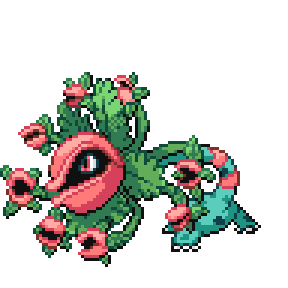
Ivyvenant is protective of its forest home to an almost overzealous degree. The instant it senses an intruder, it sends out multiple vines to grab and toss them away.
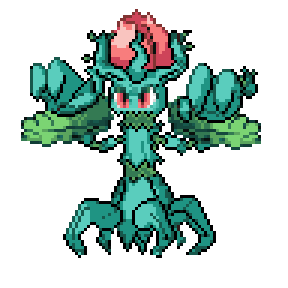
It gnaws on bones to maintain its teeth, as well as to shape the bones into weapons and armor it can use in battle. When it crafts a new weapon, it passes the old one onto its young.

The back half has taken on the appearance and disposition of the front half's Alolan variant. It is far greedier than the main head, fighting it for every meal despite not being able to digest.

Ratans's teeth not only have a strong bite force but a mild venom to them as well, making it ill-advised to agitate. Its not aggressive by nature though, preferring to bite and run rather than stay and fight.

It uses its tail to collect all manners of junk and even smaller creatures, but one should never try to take something from it by force; Ratki will not hesitate to leave a nasty bite with its massive incisors.
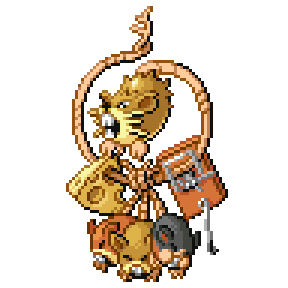
Ratkey is very volatile and dangerous, as being startled or angered will cause it to leap onto the nearest thing and gnash wildly at it. Once it has a grip, it will not stop biting unless knocked out.

Ratbra carries a fork around to always have cheese on-hand to nibble, as consuming cheese keeps its mind sharp. A Ratbra denied this snack for too long begins to exhibit psychic instability.

When eating, Ratsprout gnashes its teeth together to take many small bites of whatever it sucked into its maw. This causes it to make rapid-fire clacking noises as it eats.

The head possessing a stronger set of teeth is considered the dominant of the two. When that head sleeps, the other finds something to gnaw on, strengthening its teeth so it may fight for dominance in the future.
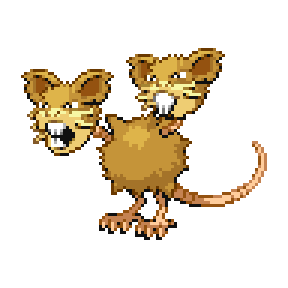
Ratly haunts old abandoned homes, gnashing its teeth furiously to create eerie sounds. Throwing an offering of food into its hungry maw tends to calm it and cease the haunting for a while.
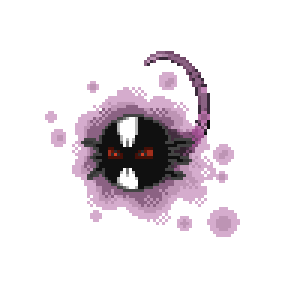
Misllery clings to dark corners of haunted locales, hiding away from sight. When others draw near, it spits out a dark ink that splatters across the victim and leaves them with chills and a feeling of ghastly dread for quite some time after.

Misitar can exhale a thick mist that snuffs out the light of the surrounding area, plunging it into darkness. It uses this shadowy cover to hunt and terrorize those who wander into its territory.

It's said Mistomb is formed from a conglomeration of the most malicious spirits of the afterlife. With its vast ghostly powers, it spends most of its time unceasingly haunting and pranking as many people as possible.

Miswick uses its ghostly flames to siphon the light from already dim areas, spooking those traveling through. It feeds on the increase in fear caused by the darkening surroundings.

Miskoth possesses a mischievous personality, but lacks the energy to pull off pranks. Even just conjuring a slight ghostly breeze requires a seven-hour nap afterward.

Mismask draws naive and curious travelers close with displays of false innocence in order to get them to gaze into its orb. A vision of terror appears within, spooking the victim so Mismask can feed on their fear.

Unown allows itself to be wielded as a weapon by a Cubone, its body making a surprisingly efficient club. At night, the Unown has Cubone draw mysterious symbols in the dirt, the meaning of which is not yet known.

The clouds Unfing emits have their own eyes that look around and blink on their own. It's believed that until they dissipate completely, Unfing can see through these additional eyes as well.
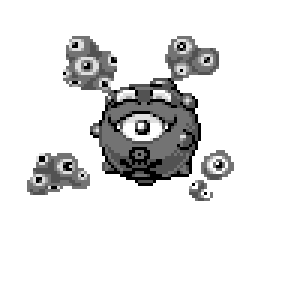
The pupil can shift around to any part of the giant unblinking eye that is its head. Even should the child wander off beyond normal sight, Unkhan will always see where its child is.

It possesses shapeshifting abilities just like Ditto, but is unable to change a certain part of itself. Thus, no matter the form it takes, the result will inevitably retain a giant cycloptic eye somewhere.
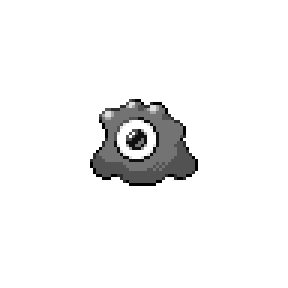
There are rumors that the shed skin left behind by Untini still contains a fraction of its mind within. Despite being hollow, some swear to have seen an eye staring back at them from within.

Unfa gather together in places where the most stars are visible in the night sky. Their positioning suggests an attempt to relay a message of some kind, but what and to whom is still unknown.

Uncross will fly from forests to nearby ruins, wander about while hovering their horn above objects of interest before flying back home in silence. What they are apparently scanning for is still unknown.

Unrow soars quietly across forests located near old ruins, almost never landing. If attacked, it separates the myriad parts of its body before reassembling itself to counterattack.
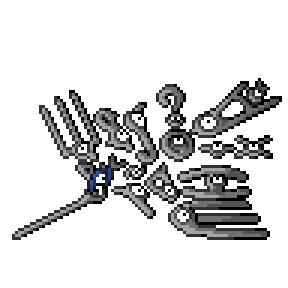
Some of its bladed feathers are detachable and possess working eyes, floating around and letting Unmory view across wide distances. Its rarely seen with all its feathers attached, as it's always curiously observing its surroundings.
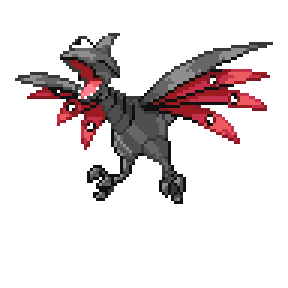
Ungon2 was first spotted in the vicinity of a research center near the Ruins of Alph. Computers in its vicinity begin to display text characters, but the messages do not belong to any known language.
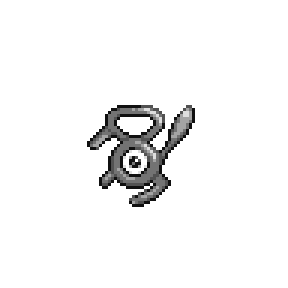
It has a strange decrepit appearance, as if it were partially burnt away. As it floats through the forest night, it sings a haunting song; those that hear it are said to see grim visions of their future.
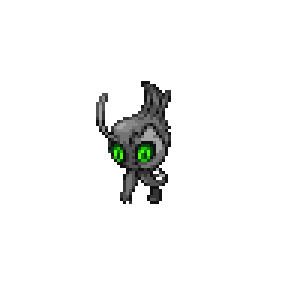
As it dances, it strikes poses that seem to correspond to letters of the alphabet. Whatever sort of message it is trying to convey has yet to be deciphered.

It uses advanced psychic powers to keep aware of its surroundings while watching over its Trainer. It can rotate its head 360 degrees; it will always keep its eye on its Trainer.
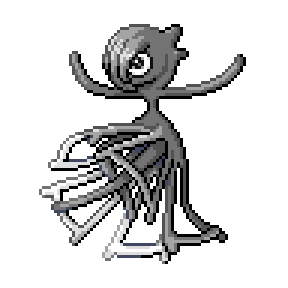
Some say all Unvoir are avatars of the same being projected into our reality from somewhere beyond. The shifting mound of limbs behind the body grasps and gazes gently at those near, seemingly searching for something important.

Its large singular eye remains eternally closed, though Unking still functions normally in spite of this. Some fringe theorists believe that should Unking open its eye, it is a harbinger of great doom.
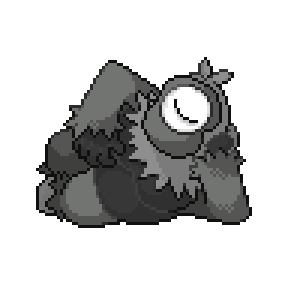
Each segment of its body appears to be shaped like a letter from the alphabet. The body appears to spell something as it flies, but strangely, those who witness it each report a completely different set of letters.

Each of the eyes spread across its body are thought to stare across space into different dimensions. Should one meet an eye's gaze, they too may catch a glimpse of these unknown worlds.

Its singular eye will never blink, even when attacked directly. It stares with deranged intensity, gazing beyond the veil into something past visible reality.
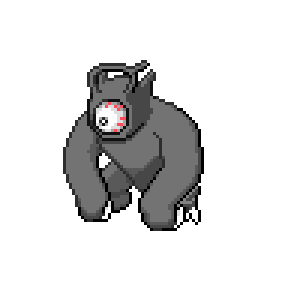
It enjoys singing in the evening, though the warped notes it lets out tend to disorient those who listen to it. Some have reported that the note-shaped part of its body changes depending on the song.

Unink have been recorded invading research labs and replacing the gears in machinery, typically those that print or visualize information. Machines with Unink in them constantly produce indecipherable combinations of numbers and letters.

Unpede hovers just above the ground, its central eye forever unblinking. Those who stare too long will swear they've seen the shape of something rotating inside the cocoon, but find themselves incapable of describing it adequately.

The two eyes look to each other as if they are separate beings, though science shows no sign of anything like a second brain. In deep snow, it uses the upper eye to see above the snowbank covering its body.

It takes the form of a discarded book in the hopes curious onlookers might take it home. The contents of the book are pure nonsense, but those who read it are entranced nonetheless.
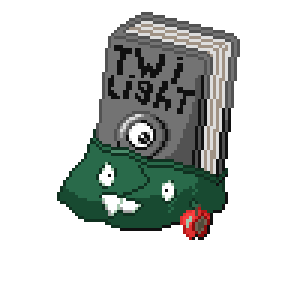
Each of the eyes on its body can launch powerful Ice Beams to freeze opponents. Those who have met Unice's gaze report feeling a chill run up their spine, unrelated to its ice powers.
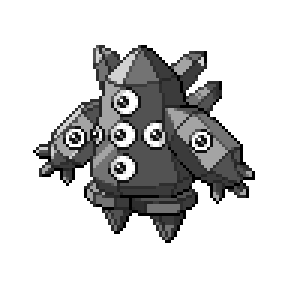
Resting on the ocean floor near underwater ruins, Unperl is almost always seen closed. If forced open, its single eye blasts the one forcing the shell apart with psychic energy that puts the aggressor in a dazed, amnesiac state.
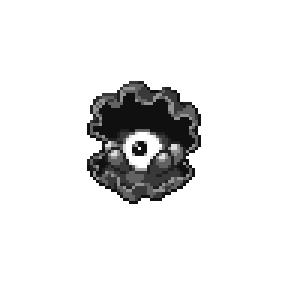
It produces the image of floating symbols within the minds of others to communicate. It values peace and solitude so that it can focus and hone its psychic powers.
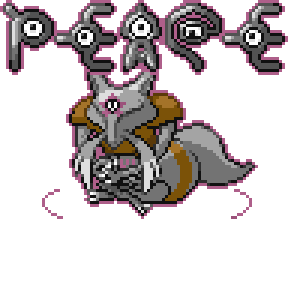
Unzee's abilities allow it to ensnare small groups of Unown as its thralls, which follow it around and cause those who view them to fall asleep with a single glance. Its eyes glow a piercing red as it feasts on the victim's dreams.

Rare eyeless variants of Unzee exist that behave even more aggressively, sending out their thralls of Unown to send as many victims as possible to sleep so it may gorge endlessly on their sweet dreams, leaving only nightmares behind.
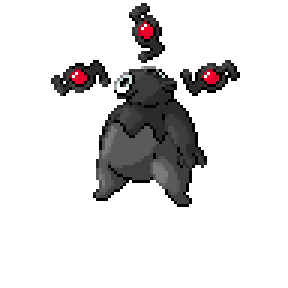
The dark egg in the clutch is protected at all times by the rest of the group. Should anything make an aggressive move towards it, the entire group will pile onto the aggressor in a vigorous counterattack.

Lighter and less sturdy than it would appear, Wobkhan's form bounces around from even light impacts. Though it looks disorienting, the child seems to enjoy being jostled around in the pouch during these moments.

Wobsey is compassionate and always willing to lend a friendly pat or hug to those feeling down. It will, however, immediately and roughly smack anyone that attempts to touch the black egg it carries with it.

Giramar uses its flame breath to ignite branches and plants just before it devours them in order to enhance the taste. The head on its tail can breath fire in self-defense, even when Giramar is sleeping.
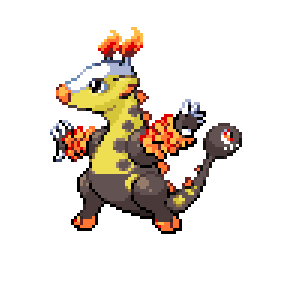
Its rear head possesses its own tiny brain as well as its own flame sac for producing fire breath. Anybody that tries to sneak up from behind is in for a nasty burn.
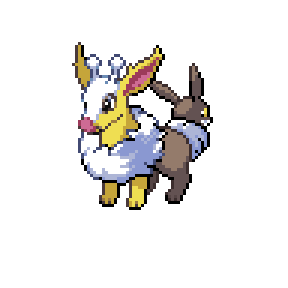
Girabat's cry emits psychic waves that affect the target's perception, causing them to see double. Girabat uses the confusion this creates to more easily swoop in and catch its prey.
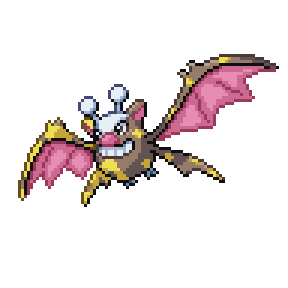
The front head has powerful eyesight, and the rear has mild precognitive capabilities. Between the two, Giratu is nearly impossible to sneak up on, flying away at the faintest hint of danger.
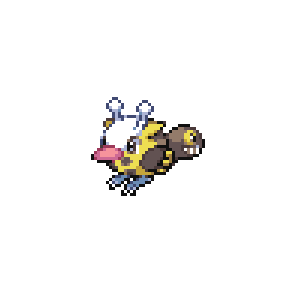
Girawoodo has a mischievous streak, staying motionless until something passes by and then biting them with the mouths on either hand. It then quickly goes back to being still, pretending it did nothing to the irate bite victim.

Girasparce always keeps its body coiled up in a spiral to some extent. It's front head is fairly docile, but the tail's head is skittish and will attempt to jab its horn into those who get too close.

What appears to be a tail with a mouth is actually the organ with which Giratank produces milk. Most farmers who have Giratank confess the sight of its milk production can be a little unsettling.

Giramagius itself is rather docile, but the head on its tail is rather vindictive. Even if Giramagius would rather flee than fight, the head will hurl dark magic from its mouth and instigate battles on its own.
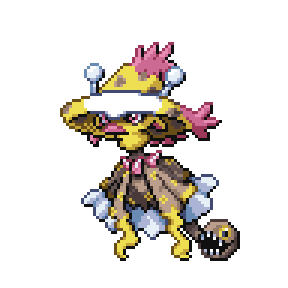
The rear head will occasionally sense a separate disaster from the main head, influencing Girasol and leaving it torn on which to assist with, often freezing up and helping neither.

Girakey is a surprisingly well-mannered Pokémon, as all the usual aggression appears to have been funneled into the tail. As a result, the tail gnashes and swings at anything approaching it, even when Girakey sleeps.
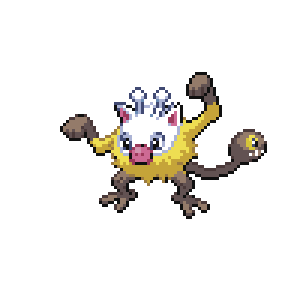
The two halves of Girata produce flames independent of each other. The front half uses its fire offensively, while the back half applies it for defensive maneuvers.

Its second head will regularly nibble and gnaw on anything that gets too close. Due to its smaller brain, it will occasionally bite the other head, forgetting they share a body.

Girano's hypnotic powers are all its own, not requiring the help of the small head it carries. It lets the head think it's crucial to the hypnosis effect so that it can feel helpful.

The child is more aggressive and combative than the parent. Pinekhan is often forced to restrain the young, to keep it from leaping out of the pouch and exploding at something.
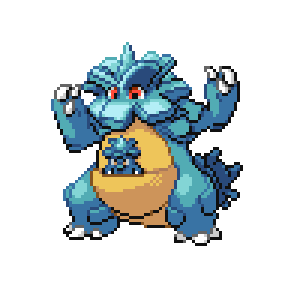
Due to the unique texture, Pinefree makes a soft crackling noise with every flap of its wings. Sentret are known to enjoy gnawing on these crunchy scales when they shed and fall to the forest floors.
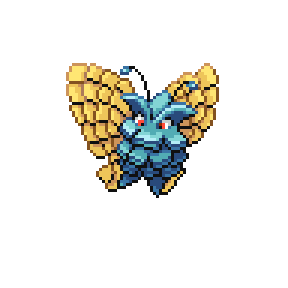
Pineuna's cocoon is made of several rigid plates layered over each other. It constantly grows new plates to replace the old, so that its defenses remain strong until it completes its evolution.
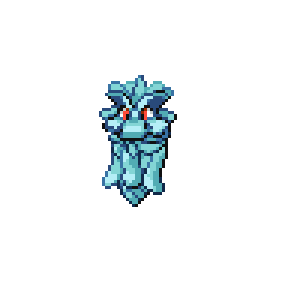
Pinepi removes and offers tiny plates from its own body as gifts to those it is fond of. They grow back quickly, and the self-removal is painless, so there's no harm in accepting the present.
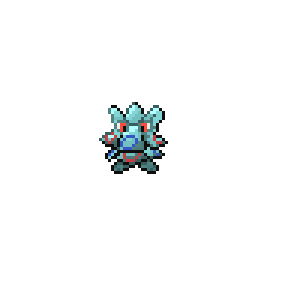
It has a possessive streak when it seeks a tree to perch on. If Kakuna and similar Pokémon hang threads on its tree, it will use the beating of its wings to blow them all to the forest floor so it alone can remain.
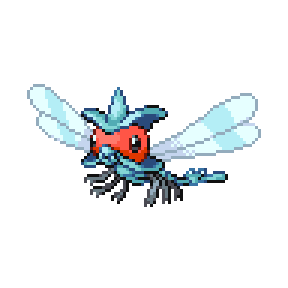
Pinetler rubs its body against tree bark in order to help scrape and snap off plates of its body that have grown excessively. The fallen pieces biodegrade quickly and provide more nutrients for soil and plant life.
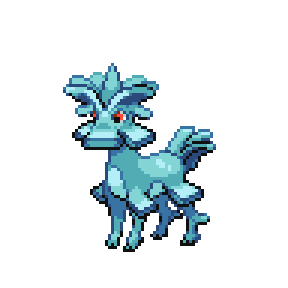
Pinesect burrows most of its body down into soft soil to sleep or feast on roots. If a predator should agitate the part that remains above ground, its plate-like mushrooms on its back will eject and burst into blinding, irritating spores.
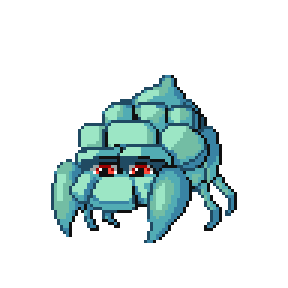
Pineple is often found milling around groups of Pineco in the wild. It crawls over them and eats small insects that will cling to the Pineco and bother them, grooming them while gaining sustenance for itself.
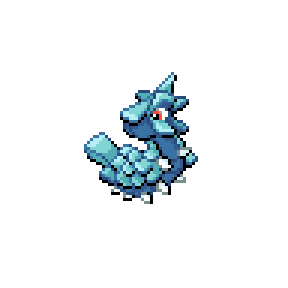
Forredrill nests should be given a wide berth for safety's sake. Extremely territorial, it fires sharp spines from its front limbs, launching at high speeds from long distances.

Forreon's meals consist of stone, dirt and other minerals in its home. As it digests, parts of the materials get compacted and stored in the pores on its sides, to be fired out at high speeds in self-defense.
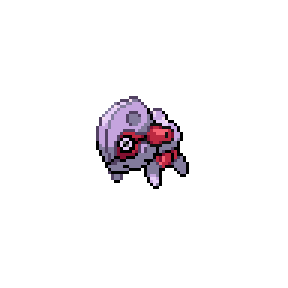
Forreduck spends much of its time staring blankly into space, ignoring most outside stimuli. Should something manage to startle it out of its stupor, it instinctively creates and fires spikes made of psychic energy as a defense mechanism.
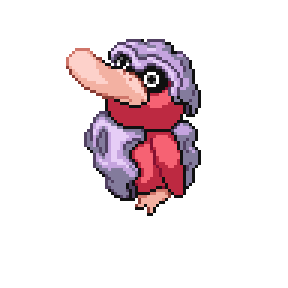
When put on the defensive, Dunsea buries its tail into the ground to stabilize itself. Doing this allows it to become much more accurate in its ink shots.

Pressing the red circle on Dunmime's torso makes it emit a variety of funny noises, making it popular with young children. Pressing the red circle on its face hurts it, however.
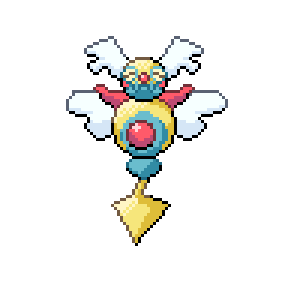
Rival Dunrow duel each other via swordfights with the drill tails they possess. Once a hierarchy is reached via victory, the loser forfeits some of its stored food to the victor.

Dunler's pointed tail is quite powerful and sturdy. If it were rolling down a mountainside at top speed, drilling into the wall with its tail would cause it to stop in its tracks instantly.
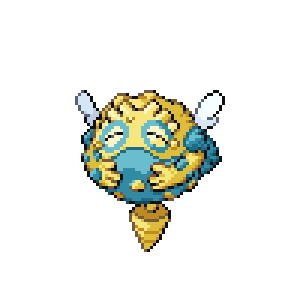
Dunpoke's drill-tail is an effective tool for burrowing through dirt, but it often forgets why it burrows and stops halfway within the ground. It will often need help being pulled out of holes it dug for itself.

Gliret squirms its way into narrow spaces, waiting until it can leap onto another's face and grab onto them. This isn't an attack behavior; Gliret is simply overly affectionate.
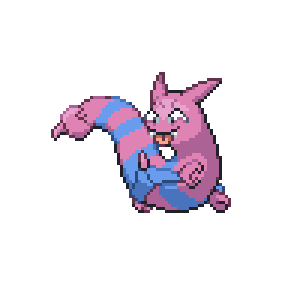
Its body is composed of highly durable steel. This resilient form allows it to burst with an explosion of electrical energy, while leaving its body intact and undamaged.

The huge skull of Steelix is almost too heavy for Steebone, hampering its movement in exchange for strong armor. It can hide its entire body within the steel skull to weather prolonged attacks.
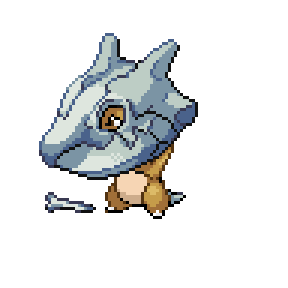
Steewak carved itself armor and weaponry out of discarded bits of Steelix. Using these, it considers itself a guardian of the defenseless, striking back at those who would pick on the smaller and weaker.
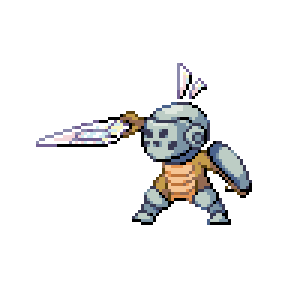
Steesey's eggs are actually coated in a tough metallic shell to deter predators and make effective weapons in battle. If it wishes to share one for consumption, it breaks the outer layer itself, revealing the nutritious contents within.

Mainly inhabiting watery tunnels and underwater caverns, before their discovery, the wailing and metallic cry of wild Steeras was the fuel for many a seafaring ghost story and a warning for sailing ships.
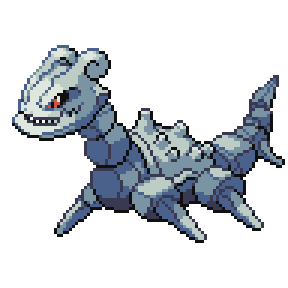
The steel casing of its body holds tightly around the molten magma Steecargo constantly produces within. Between its nigh-impenetrable shell and its ability to belch streams of lava at will, few are considered a danger to Steecargo.
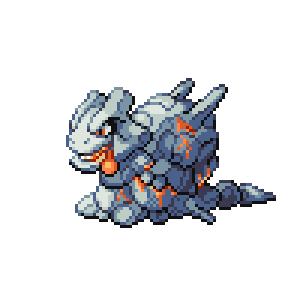
Steephan consumes large quantities of soil, storing away stones and gems swallowed while digesting the dirt. When it lets out a bellowing trumpet, the stored shards of rock and crystal shoot out and cut away at intruders.
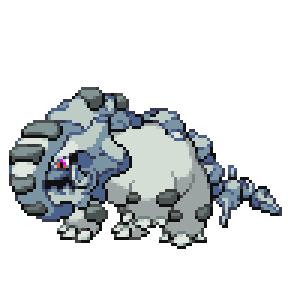
The crystals on Steerem's body are considered priceless in value. Gaining them is nigh impossible, however, as its chilling breath will freeze solid any who try to approach it.
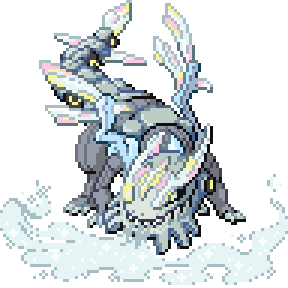
Blacksmiths of old used Steelgon to test the durability of their forged weapons. If one could strike the hardy shell of a Steelgon and not crack or break, then it was considered a work of true quality.
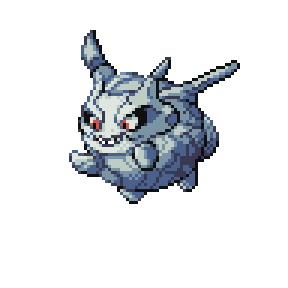
Steebat's heavy body makes it nearly impossible for it to fly for more than a few moments. It uses its metallic wings and heavy tail as bludgeoning tools in combat.
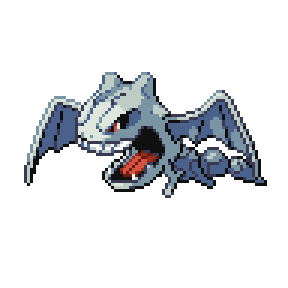
The spores Steesect produces cause rock-like fungi to grow on most surfaces. Though harmless to humans, these strange mushrooms can be very harmful to Rock-type Pokémon, causing painful paralysis with a single touch.

Steelem shed their outermost layer of metal yearly, growing a stronger one shortly afterward. It's said that those reaching one hundred years develop impenetrable skin.
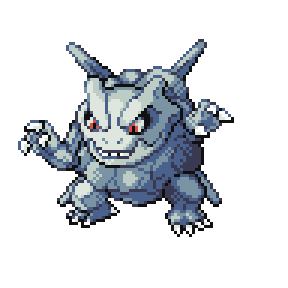
Despite its heavy body, Steedash can gallop at high speeds, trailing dark flames behind it all the while. It races to the highest peaks it can and stands watch over the mountain, cutting a striking visage.
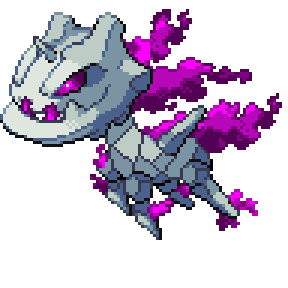
Despite the lopsided appearance, legs that look unchanged from Dodrio carry the three massive Steelix heads with only a marginal decrease in top speed. Scientists are still baffled by this.
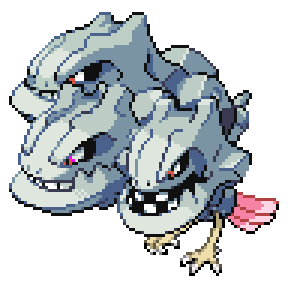
Snubtung is very proud of its big blue tongue, presenting it to any who would bear witness. It is prone to pouting if people do not compliment its size and hue.
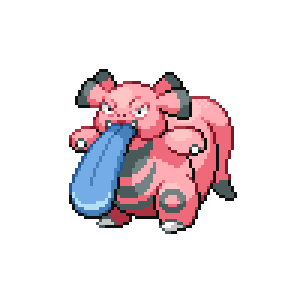
Snubird travel around the world, giving out gifts to well-behaved pet Pokémon. Badly-behaved pets instead get a scolding wallop from the heavy sack of treats it carries.

Snubtik spikes out its fur and sheds sparks when threatened, growling strongly at potential danger. Unfortunately its strength is rather meager, so if the threatening display fails, there's little else it can do.

Normally Snubish has a placid personality, but when it chooses a spot to call its own to settle down and gather sunlight, it becomes more aggressive. It growls at and smacks anything that comes near with its large leaves.
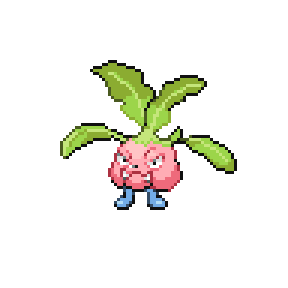
It makes a frightening face and growls to scare smaller Pokémon away and steal their things. Should it face opposition, however, it immediately turns timid and runs away in fear.
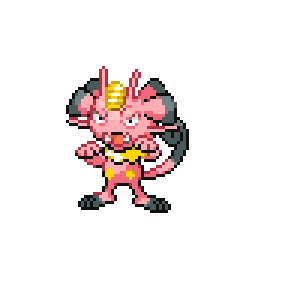
Socialites have begun seeing Snublithe as a fine trophy pet to pamper and preen. Competitions to see who has the most well-groomed and dressed-up Snublithe have become common in affluent locales.

Spearos tends to bully flocks of Spearow, yet at the same time defends them from larger Pokémon picking fights. It seems to believe that only it is allowed to pick on the little birds.

Having not evolved the long beak of its Fearow kin, Spearow often has to resort to bullying flocks of Spearow away from food in order to gain sustenance of its own.
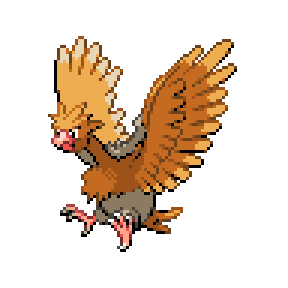
Spearpass uses magnetism to achieve something vaguely resembling flight. This takes a lot of energy to maintain, so travelers should be wary to watch for exhausted Spearpass falling out of the trees.
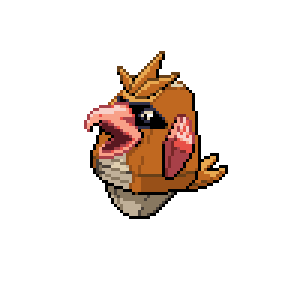
Grankrow's fearsome face makes small birds flock to be its underlings to avoid incurring its potential wrath. Few figure out that it is incredibly softhearted and will buckle beneath the slightest bit of opposition.

Granlord's fearsome appearance and huge size cause many to treat it as a vicious monster, but it is in actuality incredibly gentle and even timid. Even when attacked it rarely retaliates, instead choosing to flee.

One should take extreme caution when approaching Qwilkhan. The parent can control itself and not poison those it trusts, but the child lacks control of its toxins; any touch of its spines will be painfully poisonous.

An alternate coloration of Qwilkhan often found in more tropical regions. Its different colors are likely due to a higher intake of fruit in its diet, and this variant is known to have less dangerously potent toxins in its spines.
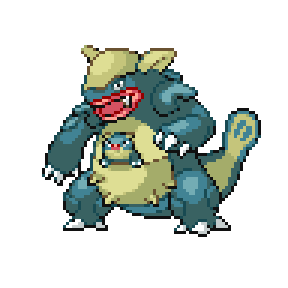
The poison in its spines can also be mixed internally with the ink it spews, letting it infect creatures near or far with its toxin. It's known to have a strong dislike of Malamar, turning aggressive immediately if it spies one.

The heavy pom-poms on Qwilcorio's arms are filled with both toxins and electricity. It combines its dances in combat with powerful bludgeoning strikes that leave foes poisoned or paralyzed.

Qwildisc has become infamous among couples, as it has a tendency to leap and attempt to sting those it sees behaving romantically. It's thought that this behavior is born out of little more than petty jealousy.
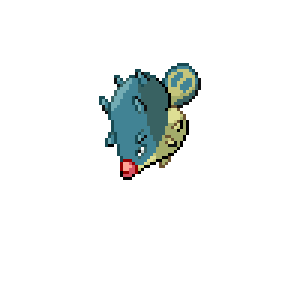
Qwilsian has a personality as prickly as its body. Finicky to the extreme, owners must work hard to earn enough of its trust and affection for it to retract its poisonous spines and allow itself to be pet.

Qwilno's hypnosis abilities are only effective on about 30 percent of people. When its pendulum fails, it simply hits the victim with it, injecting them with a toxin that quickly knocks them out.

Scichan's heavy metallic form restricts its movement, forcing it to take a tactical approach to combat. It endures attacks while waiting for the perfect opportunity to retaliate with a punch so strong it knocks out a foe with a single strike.
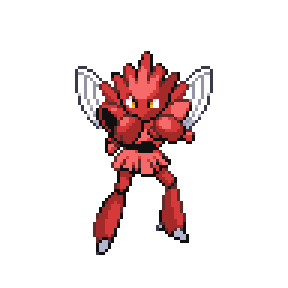
Due to its offensive and defensive strength, Scidon is a bit of a braggart. It taunts foes by rapping its claws against its head or using them to crush thick stones to rubble before their eyes.
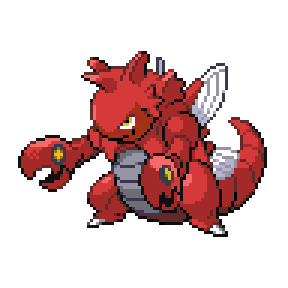
The pincer on Sciras's back is spacious and soft inside and ill-equipped for any sort of offense. Instead, it can safely store a number of passengers within to keep them warm and safe during its sea travels.
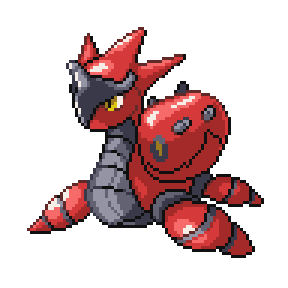
Scitoed's claws contain tongue-like appendages it can fire out to grab and store insects for later consumption. The length and speed of the tongues also make them effective as whips in combat.
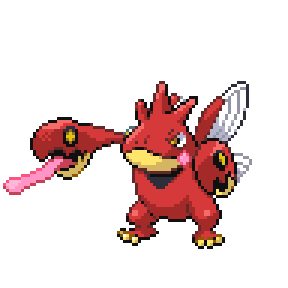
Scigia's claws hold the power to emit gale-force winds or torrential geysers of water. It uses these abilities to force back intruders to the solitary islands it claims as its home.
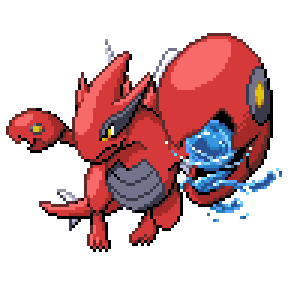
Scipom's two tails end in pincers with incredible gripping power. Some have put it to work in junkyards and other jobs where it can assist by tearing apart large materials.
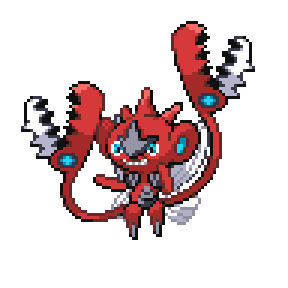
With its steel muscles, scythes and pincers, Scichamp is a destructive powerhouse like no other. Contractors have used it regularly to help in deforestation prior to construction efforts.
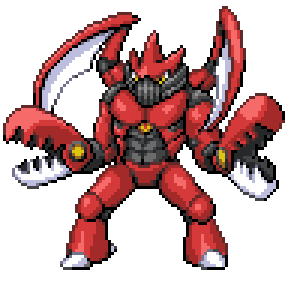
The pincer at the end of Scifetchd's stick makes it perfect for grabbing berries too high for it to reach normally. Its weight and metal coating also make it an efficient club to use for self-defense.
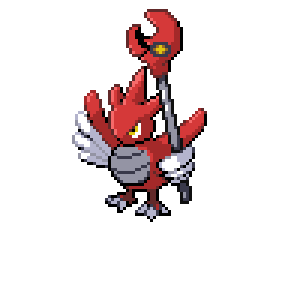
Sciler's giant metal pincer and steel body make it a formidable foe. Few attacks can even scratch its heavy carapace, and its giant claw has enough crushing power in its grip to shatter the sturdiest of steels with ease.
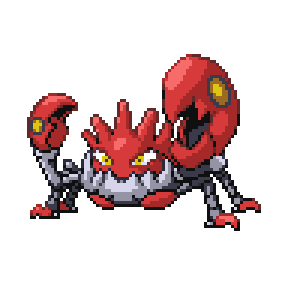
Shubone resembles a Shuckle using an old forgotten skull as a replacement shell. As it generates berry juice, excess liquid pours from the hollow eye sockets, making it look as if the skull is crying.

Shusey grows a variety of berries naturally in its pouch, which it uses to create mixed juices inside its body. These concoctions are effective at combating various illnesses, and Shusey shares them freely.

It contorts its limbs into the shapes of wings that miraculously allow it to fly for short periods. It enjoys coating berries in flower pollen before consuming them.

When initially observed, Shutini was thought to be the first sighting of a shell-less Shuckle. Though debunked, it has invited fringe theories about a possible shared lineage.

Shudile spends much of its time tucked into its shell, floating down rivers and streams. It uses a long tongue to slurp up insects drawn to the sweet berry-like scent its shell gives out.

Shuret squishes berries between its paws and offers the juicy slurry to others as a sign of affection. This makes owning one as a pet a sticky, messy affair for most Trainers.

As it eats berries, it creates a mixture of berry juices within its shell-like cranium. If a painful migraine flares up, this juice may erupt from the hole on top like a geyser.
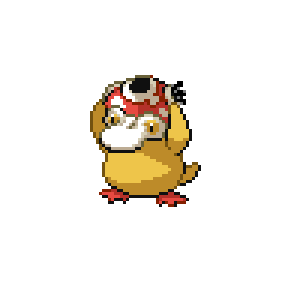
To accelerate the juice-making process, Shuler tucks inside itself and rolls down mountainsides to churn the berries inside it. Though effective, much of its juice spills out and stains the paths it rolls down.
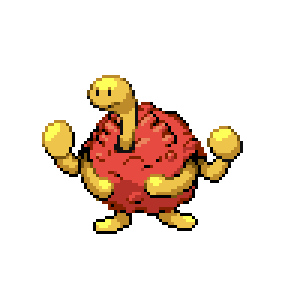
The sixth egg in the clutch has a particular affinity for finding sweet nectar and sap for the rest to consume. It does this primarily to make sure that the rest don't ever wish to feed of its own sap.

Heralee's horn is nearly as powerful as its legs. Scooping large opponents and tossing them into the air, it finishes them off with a merciless roundhouse kick as they fall back towards the ground.

Herahorn seeks to consume the sweet sap from forest trees. It won't hesitate to knock over the trees with its charge, just to more easily suck the sap from their bark.

Heragela uses its horn to pry off layers of bark from trees or dig holes in dirt. Once it finds small insects beneath, its many vines reach out and grab the bugs so it can begin eating.
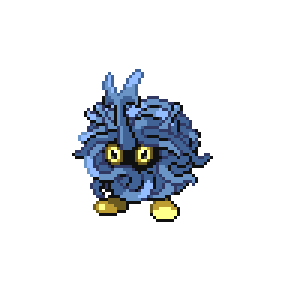
It tears deep holes in trees so that its young can crawl inside and feast on the sweet sap within. Any interlopers that venture too close during this time will be tossed aside by Herakhan's powerful horn.

Normally a Pokémon with a very mild temperament, Herafree becomes very greedy and aggressive where food is concerned. If anything tries to pry it from a tree while it feeds, it responds with extreme violence.

Herauna will embed its horn deep into trees before fully cocooning itself, so that sticky sweet sap trickles onto it. It absorbs the sap into the shell, which helps fuel the evolution process.

It uses the horn on its abdomen to cut and dig into trees in order to get to the sap within. Being greedy, it will aggressively flail its horn at anything approaching while it feasts, even other Heradrill.

It can retract and extend its limbs from any of the holes in its shell. Predators thinking they can sneak up on it will be surprised when its horn disappears and then flies out of a completely different section of its body.

Herapiny hollows out materials to collect sap it can carry around in its pouch. Though the sap is primarily for its own indulgence, Herapiny will almost always be willing to share if asked.

Heralia's twirling dance is as lovely to watch as it is effective in battle. With two horn-like appendages on each arm, it can leap and whirl around to take out opponents with grace and ease.

It lightly peels away bark from trees to gnaw on the wood and seek out sap to suck. Normally nonviolent, its horn is typically only used to swat or fling nuisances away.

Its large horn is good for tearing bark off of trees, but is predominantly used against rival Heraran. They butt heads and horns equally in disputes over food, territory and mates.

Herafable has a disinclination for prolonged combat, preferring to toss an opponent with its horn and then flee. Usually solitary creatures, during the full moon groups will gather together and mill beneath the moonlight.

Herafable owners like to decorate it for the winter holidays. Herafable itself delights in being dressed up and providing festive lighting for friends and family. Delibird also seem drawn to decorated Herafable.

Once it sinks its fangs into a tree, it refuses to let go until it's had its fill. If Herabat is not forcibly removed, it may drain a tree completely of its nutrients and leave it a wilting husk.
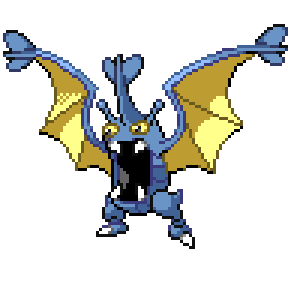
The many claws near its neck let it attach to trees to better eat the sweet sap from their bark. It is a curious sort, and seems unaware of its size and stature potentially being frightful to smaller creatures.

It bashes its horn against trees to dig and pry its way within to get to the sweet sap within. The taste of the sap helps soothe the pain of the headache it gets from using its horn.

When tucked into its shell, the horn sticks out from the front. Small feelers let it sense if predators are near, and it can strike the ground with its horn to propel itself away from danger if needed.
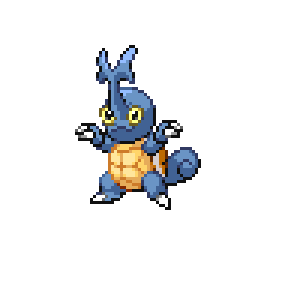
Herafetchd uses the leek it carries in combination with other flavorful grasses as a lure. It sets a trap for leaf-loving insects and waits until they get close, then attacks from above with its horn to knock them out.

The larger head is adept at sensing opportune places to feed as well as nearby predators, while the smaller head takes care of defending itself with its mighty horn.
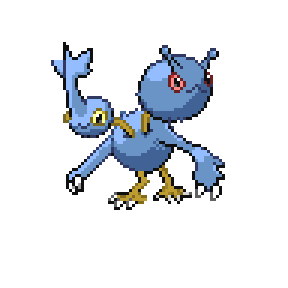
Sneaqueen is a vain sort, obsessed with jewelry in particular. Trainers should expect to regularly gift and bribe it with bracelets and necklaces if they ever hope to have Sneaqueen obey.
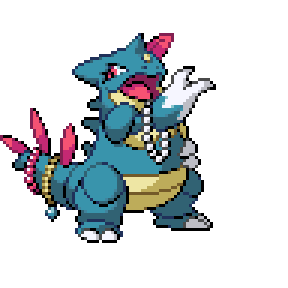
Tedditu has a simple mind, but possesses great psychic potential. When the crescent moon on its head glows, it receives a short vision of the immediate future.

Teddiring is quite popular due to its large size but amiable disposition, often seeking to cuddle anything smaller than it. It's so softhearted it will tremble before any battle, even against weaker foes.

Teddifeon's leafy bits change color with the seasons, growing pale in the winter months. During the spring they become golden-brown, and emit a pleasing honey-like aroma.
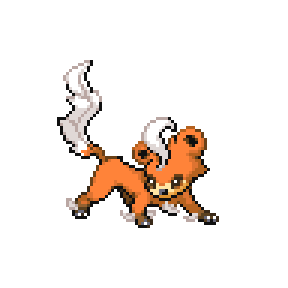
Though placid in the presence of humans and other Pokémon, Teddiran maintains a strong rivalry with others of its kind. Its quite common to see them charging at and headbutting into each other, particularly over food.

The only thing that Teddilous's heads agree on is a love for honey. This leaves them often fighting over the snack and winding up coated and sticky, and often biting each other as they try to lick the stains off the other.

A honey-like drool drips from Teddibat's mouth at all times. The sweet scent attracts small insects to it, making it easy for it to slurp up the stuck bugs for a meal.
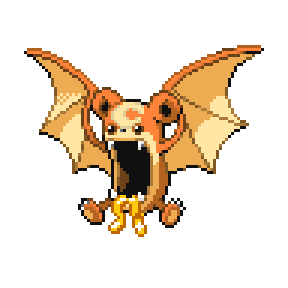
Teddith collects spare coins it finds and builds a collection. Once it gathers enough, it goes into human civilizations and attempts to barter its coins for tasty treats such as honey.
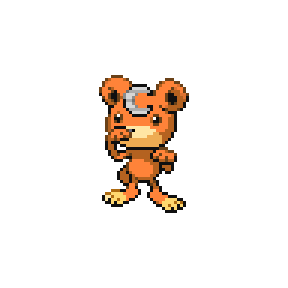
Some believe Tedditly is the spirit of deceased orphan Teddiursa. It floats through forests, its haunting wail causing Teddiursa to cry and Ursaring to go into grief-stricken rages.
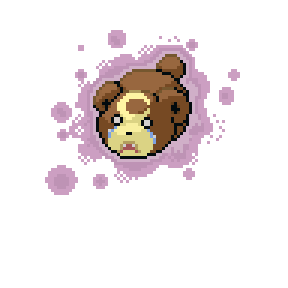
Ursawak's strong arms let it wield the bone club with great effectiveness in battle, but its preferred use is more mundane: Ursawak enjoys smearing the bone with honey or sweet juices, saving them to lick up later.

Easy to anger, Ursahorn goes on charging rampages through the forests, bowling over trees and anything in its path. The only thing that can stop its charge is the scent of honey, whereupon it becomes very docile.

Though it looks aggressive, Ursamime takes its antics and attempts to entertain very seriously. Its usual act involves the upper arms arguing with the lower arms during their miming.
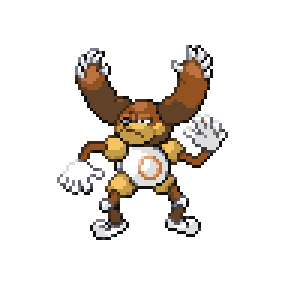
A bit sullen and antisocial, Ursavee tends to stick to its own devices, though it is easily lured closer with the promise of honey. If fed enough sweet treats, it will eventually open up and behave in a more upbeat fashion.
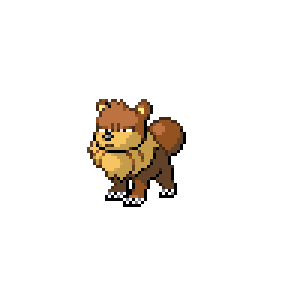
Ursawoodo's claws can be detached and used as throwing projectiles against opponents, as they regenerate over time. It's thought that this might have inspired the creation of shuriken in the past.

Ursatress produces a sticky, honey-like substance in its core, which it can fire as projectiles. The impact is powerful enough on its own, and the syrupy thickness often impedes an opponent's movement.

More aggressive than the average Teddiursa, Ursaursa tend to live more solitary lives fending for themselves. They are protective of Teddiursa however, and won't hesitate to claw viciously at anything that threatens them.

Though it has a gruff appearance, Ursabird enjoys sharing gifts from its bag with young children that behave well. It's been noted that all the gifts it hands out are related to honey in some way.

Ursamory's heavy body makes flying for long distances difficult, so it claims only small patches of territory. If angered, it may pluck one of its sharp feathers from its wings and use it as a throwing weapon.

Ursabok hides away in caves until the moonlit night falls and it can hunt. The ring on its chest reflects moonlight and casts hypnosis on victims who see it, stunning them and leaving them open to be constricted.

If you see a Ursaslash curl into a ball, do not assume it has gone on the defensive; it rolls into opponents at high speeds to cut and crush them with its bulk and sharp spines.
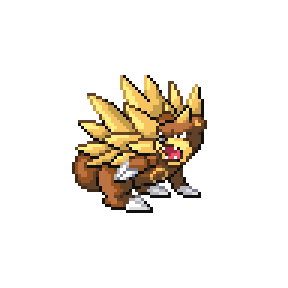
Urban legends warn not to go deep into forests at night or you may run afoul of Ursawile. The tales say that if you see its diminutive frame, it's already too late to escape its fearsome maw that lunges from the darkness.

Many a terrifying tale is told about sightings of Ursaclops in the night. As the stories go, a victim sees a glowing ring in the dark, becoming so hypnotized by the sight they never see spectral claws ready to descend upon them...

Ursapius's leaf-wings are comprised of a sweet and succulent honey-like substance. It constantly has to shake off bevies of smaller Pokémon that climb onto it to sample its flavor.
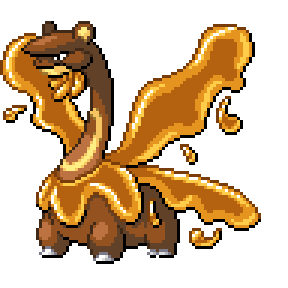
Ursanine patrols around deep forests, guarding the denizens within from harm. Stoic by nature, it never makes the first strike, but responds mercilessly to those who would choose violence against it or those it protects.

Ursanine patrols around deep forests, guarding the denizens within from harm. Some variations of the species are notably more pacifistic, shielding smaller Pokémon from attacks as they retreat to safety together.

Ursawrath's spiked fists are strong enough to stop a speeding semi-truck in its track with one punch. Rivals will test their strength by punching each other directly in the center of their circular chest patterns.

Ursachop holds itself to a high standard in appearing strong and stoic. This front is rather easily broken when offered honey, as it can't resist ecstatically gorging on the sweet treat.

Ursaler hibernates in caves, curling up and appearing as a large boulder to most. Anything that causes it to wake up will suffer powerful and painful claw swipes in retaliation.

Ursadash protects young forest Pokémon from poachers. With its tremendous strength and speed, it can scoop up helpless young and fend off attackers with powerful swipes or kicks before retreating faster than most can keep pace.

It scratches claw marks into trees that grow particularly flavorful fruit. The three heads will sometimes argue over whether a tree's fruit is worthy enough to be marked.

Slugzor's wings are not used for flying, but generating warmth to regulate its body temperature. Outside of its volcanic home, it must heat itself constantly, or its body would harden and become brittle as it cools.

One should take cover should it spot a Sluglord rising up from a lava pool. It surfaces to vent excess lava from its spout, which sprays all about and will burn anything in the surrounding area.

When standing still, Slugva vibrates its wings rapidly against its body. The wings generate heat and keep its body warm, so it doesn't cool down and begin to harden.
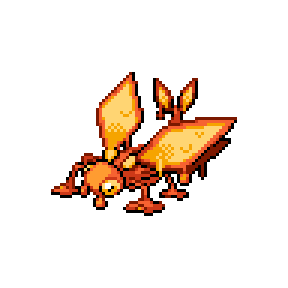
Slugbat are known to reside in large groups within volcanoes, attracted to the intense heat. If one sees a flock of Slugbat flying out of a volcano all at once, it's a sign an eruption is about to occur.
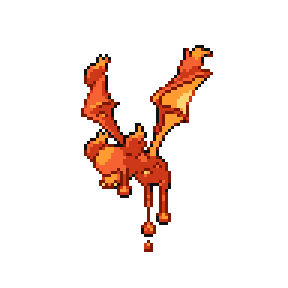
Rarely, plant life will form even in active volcanic areas, becoming Slugsprout. Though hardier than most plants due to their intense survival instinct, water will make it wilt rapidly.

A small shell of hardened magma has formed on Magma earlier than usual. The weight added to its small form makes it more difficult to stay moving and to resist its skin cooling and hardening.

Magtyke swims about in magma pools without a care. It often floats on its back, sunning itself and keeping its rocky underside dry and brittle.

Chunks of stone and magma swirl endlessly above Magtomb's core stone. Should these components retract into the stone, it means somewhere in the world a volcano is about to erupt.

Said by some to be the epitome of volcanic fury, Magdon is a figure of destruction in island mythology. The magma within its shell is believed to reach incalculable, impossible temperatures.
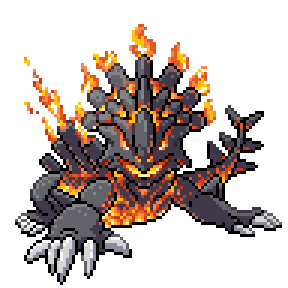
Magram appears to be the subject of ancient legends in some regions, that speak of kingdoms becoming too greedy and being melted away for their hubris by the powers of a molten dragon.

Fearkhan is a doting yet strict parent, encouraging its young to hunt for food on its own. It trains the child's flight by flapping its wings, providing strong gusts of wind the young must fly against.
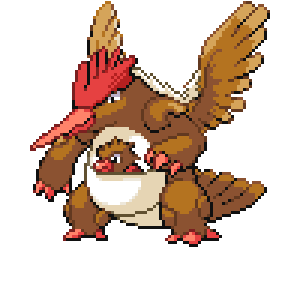
Feardle primarily feeds on tiny fish in small ponds. It dips its stinger into the water to leak poison into it, then uses its beak to spear the sickened fish that float to the surface.
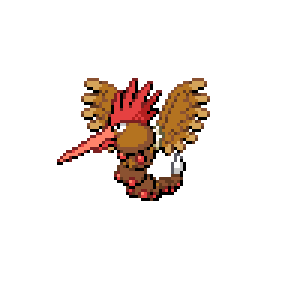
It uses its wings to kick up strong gusts of wind to blow away trespassers in its territory. Those unable to be pushed away or those who return after ignoring this warning risk getting charged at and potentially skewered.
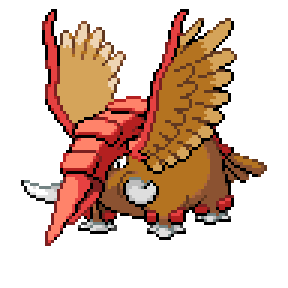
It perches coiled around tall trees, before using its wings to glide far distances and hunt unsuspecting prey. Having Fearbok glide over you while adventuring is said to be an unlucky omen.
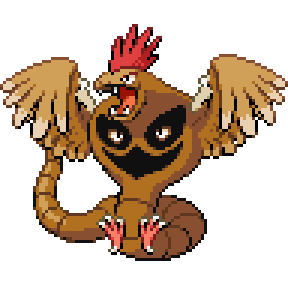
Fearor keeps low to the ground, as its heavy round body is difficult to keep aloft for long. If another hunter tries to compete with it for a meal, Fearor fires short range beams of light from its eyes to deter them.
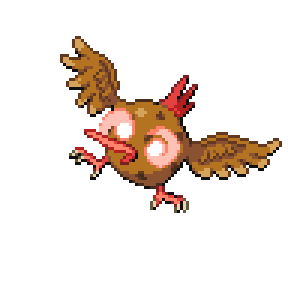
Swisir's pincers are very cold to the touch. It sniffs out succulent berries growing on trees, using its pincers to grab them, keeping them chilled and fresh until it's ready to eat.

Swireep's potent sense of smell allows it to sniff out tasty mushrooms even from long distances. If it's caught the scent of something good, the orb on its tail glows brightly.

Its sense of smell has been enhanced even further, able to sniff out food and other items buried deep within the dirt. Its large size means it can accidentally bowl over smaller creatures in its eagerness to investigate a smell.

Trained Swikid can sniff out high-quality mushrooms beneath the soil easily. When it catches a whiff, it runs to the spot and leaps head-first onto the soil, its twin prongs marking the spot that needs to be dug into.
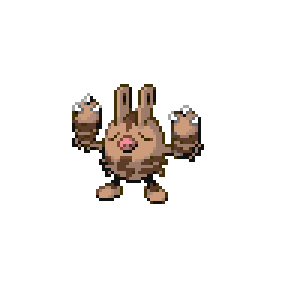
Swieon lives a mostly sedentary lifestyle, making homes where fungi grow abundantly. It spends much of the day napping, using its long tongue to reach out and nab mushrooms when it's hungry.

Its fur coat keeps it a little warmer than is comfortable, so it wears an icy cloak to keep itself cool. When strong winds pick up, powdered snow drifts off of the cloak in large amounts.

With a lazy and simpleminded disposition, not much will rouse Swipoke from its constant slumbering. The best way to get it to wake up and move around is using the scent of mushrooms, its favorite snack.

Swiduo sniffs low to the ground searching for roots and mushrooms to snack on. Its highly skittish nature means that as soon as its heads have found food, they immediately run and hide to eat their meal in solace.

Switly makes little sniffling noises as it flies around frigid areas and leaves a trail of ghostly snowfall behind it. These flakes will give a person momentary chills on contact, even in warmer climates.

Swinix can smell food even through solid rock. If it catches a whiff of something intriguing, it will dig through an entire mountain just to get to the other side and investigate.
